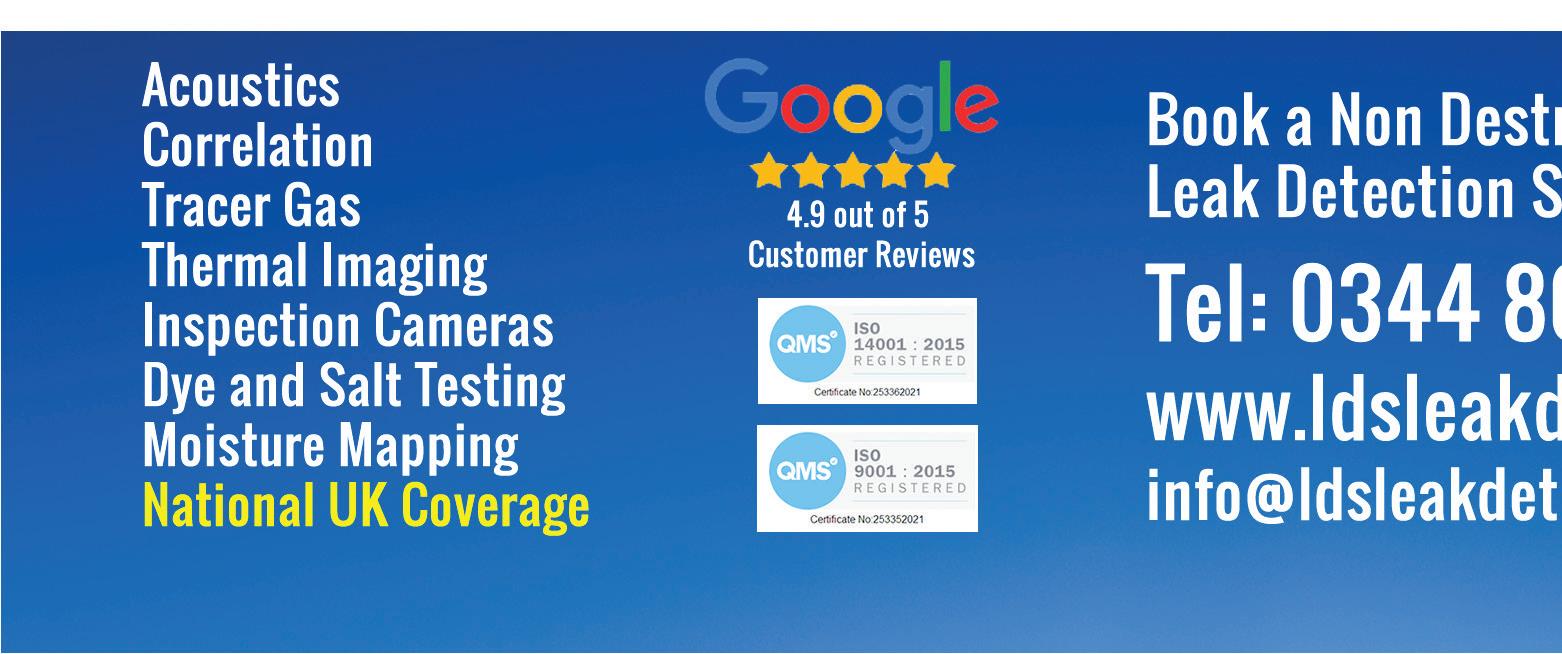












kpm media Unit 1 Mill Place, Platt Business Estate, Maidstone Road, Sevenoaks, Kent TN15 8TB Tel: 01322 662289
Editor Sara Bean sara.bean@kpmmedia.co.uk
Assistant Editor & Social Media Development Sarah O’Beirne sarah.obeirne@kpmmedia.co.uk Tel: 01322 476815
Director & Designer Warren Knight warren.knight@kpmmedia.co.uk Mob: 0780 1947757
Sales Director Danny Grange danny.grange@kpmmedia.co.uk Mob: 07867 418994
Business Administrator Sami Smith sami@kpmmedia.co.uk
Accounts Trish Boakes accounts@kpmmedia.co.uk
Group CEO Nigel Copp nigel.copp@kpmgroup.co.uk
Alan Hutchinson, Facilities Director, Howard Kennedy LLP
Charles Siddons, Head of Operations, NHS Property Services
Darren Miller, NBCUniversal, VP for International Workplace, Facilities & Real Estate
Ian Wade, Head of UK Estates, British Medical Association
Lucy Hind, Senior FM Lecturer, Leeds Beckett University
Marie Johnson, Head of Workplace & Wellbeing, Nominet

Russell Wood, Facilities Manager at Dentsu Aegis Network
Russell Burnaby, Head of FM, Regeneration and Environment, Brent Council
Simon Francis, Principal Lead, Estates and Masterplanning, ZSL
Simone Fenton-Jarvis, Workplace Consultancy Director at Relogix
Stephen Bursi, Facilities Lead, BAE Systems
Stephen Vagg, Head of Estates and Strategy, National Express Group PLC
Vicky Thorp, Head of Facilities Management, CLSH Management
Total
2021 to June 2022
FMJ has been running the regular FM Clinic feature for a number of years, during which we’ve covered a multitude of topics; from dealing with the skills shortage to meeting sustainability targets.
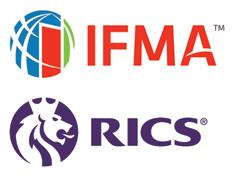
This month’s topic reflects just how drastically the workplace landscape has altered over the last few years.
For not only are FMs dealing with managing hybrid working patterns but they must now figure out how to support sta dealing with rising inflation and escalating energy bills. It goes to illustrate how far the FM remit has moved away from managing buildings to looking a er the complex needs of sta based in the physical and virtual workplace.
Our pundits all agreed in this month’s FM Clinic (page 20) that the current situation is part of a wider employment rights issue and using the crisis as a way of forcing people back into the workplace isn’t the answer.
So, it’s less of a question of whether to more actively encourage employees back into the o ice to help them lower their domestic fuel bills; but rather how to support sta whether they are mainly based at home or in the o ice. There are a number of ways to do this, including o ering grants to insulate homes and issuing loans for public transport.
Of course, as ever, the facilities on site can help support employees on a more practical level. We’ve already heard anecdotal stories of people using the gym to shower to help save on heating costs and it’ll be interesting to see if the use of shower facilities within o ices will shoot up over the coming months. From the FM perspective, this winter, the amenities sta may have tended take for granted over the years - including plentiful access to drinks and snacks could become more important than ever.
As always, we’d welcome your feedback about any aspect of the magazine, together with your insight into what’s happening in the FM sector.
sara.bean@kpmmedia.co.uk


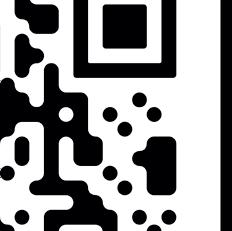

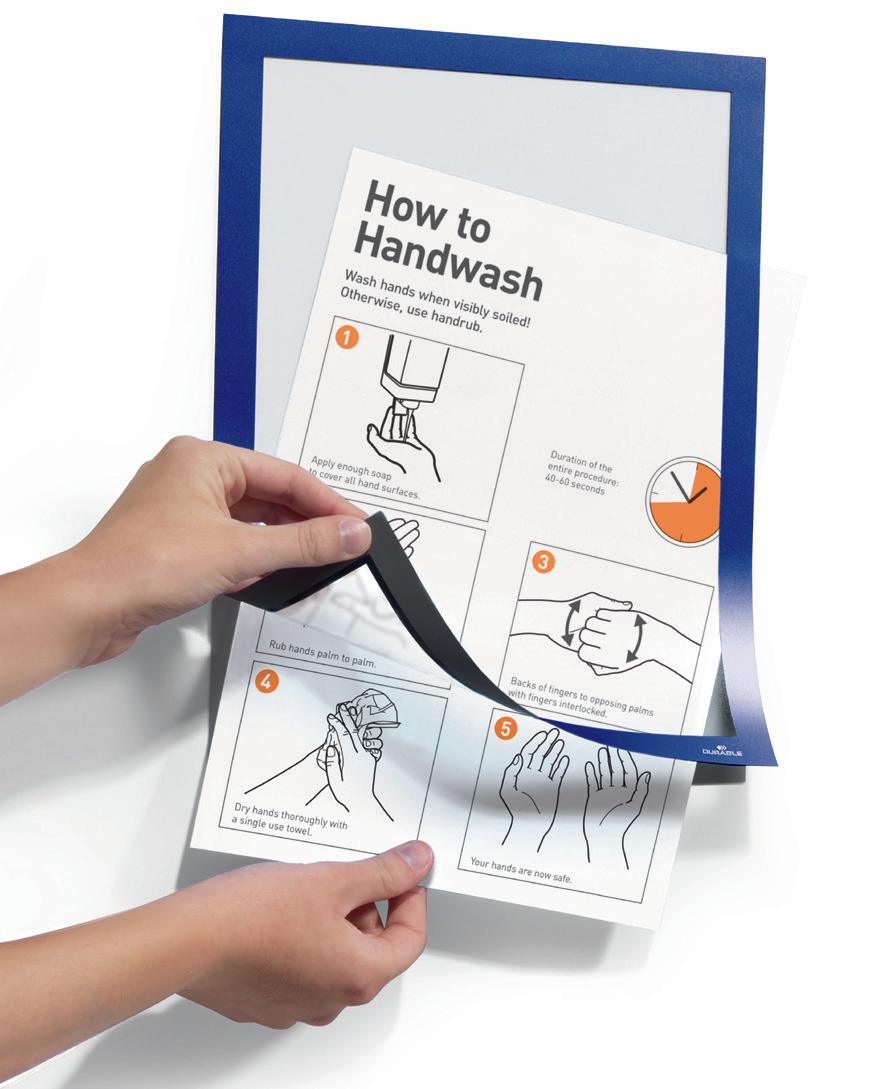


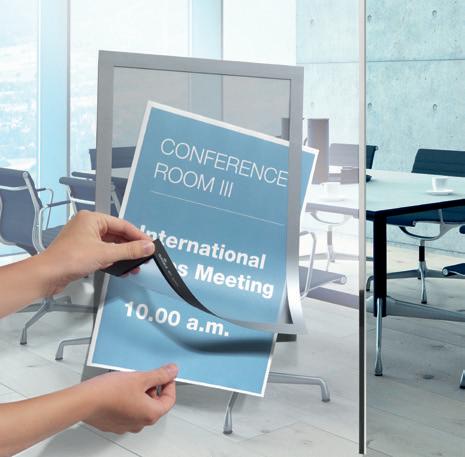
















These are unprecedented times. The continuing rise in interest rates, now the highest level for 14 years, inflation at a 40-year high and the pound touching a record low against the dollar, it is no small wonder the Bank of England have warned the UK may already be in a recession. Business insolvencies have increased by 72 per cent over the past year and whilst debtor companies continue to fail now so are creditors as a result of increasing levels of debt owed to them. The present climate is not going to improve anytime soon so it is imperative monies are received as they fall due.
When it comes to pursuing a debtor in respect of outstanding payment if the first demand, or a second reminder, does not coerce payment repetitive demands are unlikely to do so and only exhausts time and manpower. That initial demand is a vital tool. It should be clear as to why and when payment fell due and make clear the options available to you should monies remain withheld. It is wise to include with that demand the copy invoice(s) in question, a Statement of Account and if not voluminous a copy of the contractual payment terms. Doing so shall pre-empt the all too familiar excuses of a debtor purportedly being unaware of the position or not having in their possession the applicable documentation.
A demand including for accrued interest will undoubtedly focus a debtor’s mind in being faced with a claim for higher sum than that withheld at the outset. Should your terms not provide for contractual interest then statutory interest may be claimed in accordance with the Late Payment of Commercial Debts (Interest) Act 1998, for business to business transactions, at a rate of 8 per cent above the Bank of England base rate, which is of course increasing. Not only can this mean interest amounting to a considerable sum but within these provisions a fixed sum may also form part of your demand for the cost expended in pursuing late commercial payment. This sum is dependent upon the value of the invoice ranging from £40.00 to £100.00 for an invoice exceeding £10,000. More so these costs may be applied to each outstanding invoice thus should the debt relate to numerous invoices the demand is again likely to amount to a significantly increased value notwithstanding accrued interest.
Just as soon as practically possible unpaid monies should be demanded. A reputation for not allowing for aged debts over and above agreed credit terms is no bad thing. Whilst any demand may allow for further time in which to receive payment in most occasions there is no reason to provide any longer than seven days. Make clear that should the sum claimed be disputed a substantive response particularising the same is required by return. The demand should indicate that in the absence of due payment steps shall be made to present forthwith legal proceedings incurring additional costs that shall be claimed from the debtor. Providing such notice will only increase the likelihood of payment being received from even the most difficult of debtors. In the alternative, where the unpaid sum amounts to a value of £750.00 or more and liability is undisputed then reference that those steps being taken may include instigating insolvency proceedings. As any director shall be aware, or at least should be, seven clear business days post service upon a debtor company of a Winding-Up Petition the insolvency regulations require its existence be advertised, for the benefit of other creditors. The effect of which is almost without exception the company’s accounts being frozen by their own bankers, safeguarding their position. The detrimental effect of which has very obvious consequences with regard to their ability to continue trading. It is for this reason the company director(s) shall very likely do all that is possible to find amicable resolution unless the company has failed and their insolvency is accepted.
No business should suffer the consequences of another withholding payment in respect of services and/or goods provided. Demand your monies as they fall due. Do not fall foul of aged debt.
A group of 30 major UK businesses have spent a landmark £250 million procuring services and products from social enterprises and helped create 2,700 jobs in an ongoing programme from Social Enterprise UK, new figures reveal.
The Buy Social Corporate Challenge (BSCC) sixth annual report shows that the blueprint of corporates purchasing from social enterprises has resulted not only in millions of pounds going to support businesses tackling social and environmental issues, but has also created an estimated 2,700 jobs in those social enterprises in the lifespan of the project to date.

The Challenge sees Social Enterprise UK work with 30 large businesses, ranging from pharmaceuticals to finance, to identify and match social enterprise suppliers across products and services from food and drink to consultancy. Launched in 2016 the Challenge has a 10-year target of £1 billion of spend and is on track to reach this goal, with more than £91 million achieved in the last year, and a total of more than £250 million, or quarter of a billion, over the last six years.
The corporate partners on the programme are Amey, AstraZeneca, Barclays, CBRE, Coop, Compass/Foodbuy, Deloitte, EQUANS, GSK, John Sisk & Son Ltd, Johnson & Johnson, KPMG, Landmarc Support Services, Lendlease, Linklaters, LV=, Mitie, Motorola Solutions, Nationwide, Nestle, NFU Mutual, PwC, Robertson Group, SAP, Siemens, Sodexo, The Crown Estate, Wates Group, Willmott Dixon and Zurich.
To be a social enterprise, businesses are governed and constituted to achieve social or environmental impact. As businesses, social enterprises seek to deliver profits, but at least 50 per cent of their profits are reinvested into their mission. Social Enterprise UK estimates that by trading with Buy Social Corporate Challenge partners social enterprise suppliers have been able to reinvest approximately £26.5 million into the social or environmental missions.
To read the report visit https://bit.ly/3SHkDzR
The British Institute of Cleaning Science (BICSc) announced the winners of its 2022 Annual Awards in a special presentation ceremony held at The Forest of Arden Hotel & Country Club, which was hosted by TV presenter and former England international rugby player Martin Bayfield.
The awards celebrate brilliance in training and accreditation throughout the cleaning industry and are now recognised as one of the most prestigious accolades throughout the sector.
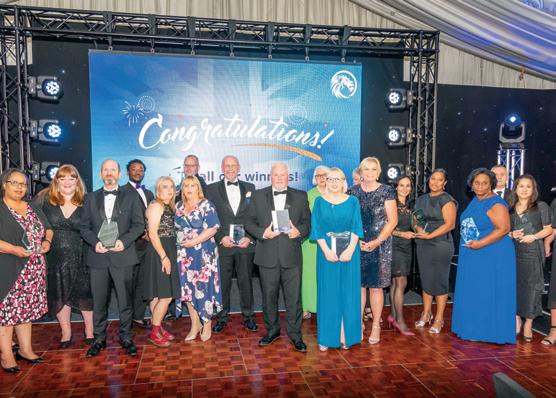
The 2022 BICSc Annual Award Winners are as follows:
• The Chairman’s Award – Mike Fletcher
• The Eric Hill Award – Colm McGrath
• The BICSc International Award – Andrea Yoko
• Commitment to BICSc Training within Healthcare – 2gether Support Solutions
• Commitment to BICSc Training within Education – University of York
• Commitment to BICSc Training within Daily Commercial Cleaning – Principle Cleaning Services


• Outstanding Corporate Member of the Year – University of Northampton
• Excellence in Training & Assessment UK – VINCI Facilities
• Excellence in Training & Assessment (International) – Emrill Services LLC


• Assessor of the Year – Tina Memory, London Borough of Hounslow
• Outstanding Client Commitment by a Cleaning Operative – Donna Harris, University of Northampton
• Outstanding Candidate of the Year – Rhys Goodard, VINCI Facilities

The remaining two sessions of the All-Party Parliamentary Group (APPG) for the Cleaning and Hygiene Industry inquiry into the role of cleaning and hygiene during the COVID-19 pandemic will take place on 11 October and 18 October.
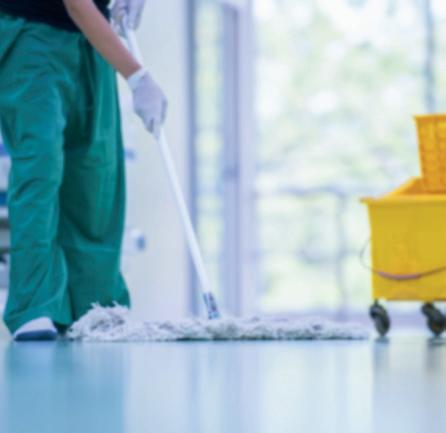

The inquiry is examining what was successful and what was not from the national approach to cleaning and hygiene during the pandemic to ensure lessons can be learnt. These will be taken forward to increase disease resilience to current common infections and help inform the UK’s response to any similar future public health emergency.
The review aims to produce a report with policy recommendations which will feed into the national UK COVID-19 Inquiry.

The upcoming sessions are structured as follows:
• Tuesday 11 October, from 10am: Evidence from contractors who delivered cleaning services at the time, alongside suppliers and manufacturers of cleaning and hygiene products which were very much in demand during the pandemic


• Tuesday 18 October, from 10am: Evidence from owners and landlords of a variety of buildings who had to deliver high standards of cleaning and hygiene during the pandemic, in order to protect the public.
Progress is being seen in some aspects of the built environment on the drive to be more sustainable, according to RICS Sustainability Report 2022, however the rate of advancement needs to accelerate significantly and become more widespread.
The report, which collated sentiment from almost 4,000 chartered surveyor contributors, around 1,200 of which are from the UK, across commercial and construction sectors globally, shows that some improvement in the push for sustainability has been made in the past year, notably in the commercial real estate sector as demand for green buildings continues to rise.
In construction, a significant share of professionals say they do not measure carbon emissions on projects.
Commercial Property - Looking at investors and occupiers separately in the UK, around 65 per cent of contributors note that occupier demand for green/sustainable buildings has risen over the past 12 months, however the UK is falling behind Europe as a whole, with Europe leading the way with around 52 per cent of contributors across the region seeing a modest increase in demand, and just under one-quarter stating that occupier interest in green/sustainable buildings has increased significantly.

As demand for sustainable buildings continues to increase not just in the UK but on a global scale, it is impacting both rents and prices, with a significant share of contributors seeing a market premium for sustainable buildings, and citing that non-green real estate assets are subject to a ‘brown discount’.

Construction - Survey respondents report that construction professionals in the UK are beginning to embrace digital tools and technologies to complete sustainability-related analysis for construction projects, predominantly to assess energy needs and costs, but they are less likely to utilise these tools to reduce embodied carbon or to measure the impact on biodiversity. Forty-seven per cent of respondents in the UK report that digital tools and processes are used to complete sustainability assessments on less than half or none of their projects. This year’s results also show that there is much room for improvement in measuring carbon emissions. Seventy-six per cent of professionals in the UK state that they make no operational measurement of carbon emissions on projects, which is in line with the whole of Europe, but slightly higher when compared globally (72 per cent). With more than half of the UK respondents also saying that they don’t measure embodied carbon, even for those that do, less than 14 per cent use it to select the materials they use in their project.
When probed on the barriers to reducing carbon emissions, around 38 per cent of contributors identified both the lack of established / adopted standards, guidance and tools and high costs or low availability of lowcarbon products as the most fundamental issues.
New dates announced for postponed APPG inquiry into cleaning and hygiene during COVID-19
18 months ago. Back then, only 19 per cent of respondents (on average) were reporting issues in finding workers.
still widely projected to accelerate further over the near-term.
Tarrant Parsons, Senior Economist, RICS
Demand for FM services continues to rise firmly across most sectors, according to the Q3 2022 RICS Facilities Management Survey, with manufacturing seeing a particularly noticeable acceleration in growth. While the healthcare and business sectors remain robust, retail is still lagging all other areas of the market.

In employment, a net balance of +51 per cent of respondents reported an increase in headcounts across the industry during Q3 and envisage a modestly positive trend in headcounts over the next 12 months. That said, di iculties in sourcing workers remain prominent in building and operation maintenance, evidenced by 77 per cent of respondents citing trouble finding candidates to fill positions. Moreover, a majority of contributors also continue to highlight challenges around sourcing workers for roles in support services, property management and energy management. Recruitment di iculties have risen rapidly across all categories covered in the survey relative to
Workloads are improving across the FM industry by a net balance of +85 per cent of respondents in the year to come, a slight increase on an already strong reading of +77 per cent. Sustainability management remains the frontrunner in terms of growth expectations compared to all other areas of FM. Meanwhile, workplace and relocation management are still in second place when it comes to the expected growth rankings, closely followed by strategic planning and project management.
Sustainability management emerged as the leading area with respect to growth expectations back in Q4 2021 and has remained there ever since. In fact, the gap between expected growth in sustainability management and all other areas of FM has widened over recent quarters, as the pressure caused by rising energy prices has brought the potential benefits of improvements in energy management practices into sharper focus.
Despite the generally positive outlook, profit margins are expected to come under pressure. This is likely associated with sharp increases in energy costs over recent months, while inflation is
The largest share of respondents (49 per cent) continue to cite potential cost savings as the primary driver of demand for FM services. With respect to motivation for outsourcing, the importance of accessing broader expertise was seen as the main pulling-factor during Q3, albeit greater flexibility as well as cost savings were seen as being almost equally as important.
Interestingly, respondents (on average) report that a little less than 50 per cent of workers have returned to the workplace compared to prior to the pandemic. Significantly, the share of workers returning, at least on a similar schedule to that found pre-COVID, has remained more or less steady over the past few editions of the survey. Back in February, 42 per cent of workers planned to work mostly from home and only sometimes from their usual place of work. The latest RICS survey findings suggest there has not been much movement in these intentions of late, with hybrid working models becoming increasingly established longer term.
Ain the sector may be the expected timeline for the collection of the expected information, with some being required from January 2023 (albeit the requirement comes from a di erent set of regulations). The bulk of the content of the golden thread requirements is likely to come into e ect in October 2023, leaving little time to collect information where it currently doesn’t exist.
Sofie Hooper, Head of Policy IWFM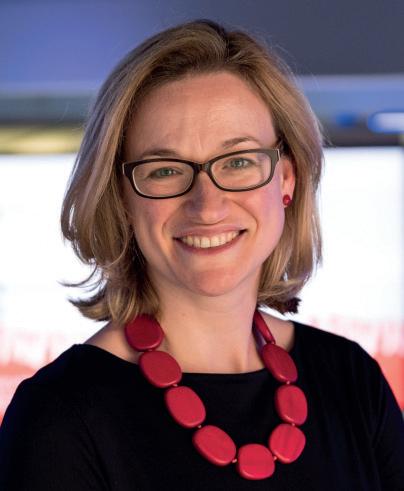
s the Building Safety Act was published in May 2022, a milestone in building safety policy was reached. However, the journey towards implementation of what was mostly a high-level principles framework is only being developed now, so building safety policy will remain firmly on the agenda for some years to come.
Currently, all eyes are on the two big consultations in town: the new building control regime for higher-risk buildings and wider changes to building regulations for all buildings, and the new safety regime for occupied higherrisk buildings. IWFM is dra ing submissions to both by the 12 October deadline.
The latter of the two consultations confirms the golden thread policy that will be put into the secondary legislation (unless, of course, consultation responses change the approach).
It outlines the content of the golden thread and how it’s to be maintained. The surprise for some

While there may be clarity about the ‘what’ of the golden thread, the principles of the ‘how’ is causing much debate. A key principle is that the information in the golden thread needs to be interoperable: capable of being exchanged and used on di erent so ware systems, while also retaining its structured format and ensuring no information is lost or distorted. For it to work, and for interoperability to deliver on the objective of supporting building risk management decisions for safety, the government needs to mandate an information structure and data schema and outline a pathway towards a national built environment data vision for the next 20 years.
Another area of great importance for FMs is understanding what’s coming down the line for refurbishments of existing buildings. While the
new regime for occupation (Part 4 of the Building Safety Act 2022) may ‘only’ cover residential, the new refurbishment rules (Part 3 of the Building Safety Act 2022) for higher-risk buildings will also apply to care homes, hospitals, and student accommodations. These rules will require more rigorous building control applications and stricter change control processes. For example, when the new rules come into force, building work such as a fire doors replacement programme in a hospital will require a more rigorous building control application. As part of the application, when any changes are made that deviate from the original building control approval application, the new change control process will require a change control application for a ‘major’ change, or a ‘notification’ to the Building Safety Regulator for a notifiable change.
Now is not the time to wait until the new regulations come into play. Submit your own comments to the consultations or get in touch with IWFM via policy@iwfm.org.uk before 12 October.

The provisions of the Regulatory Reform (Fire Safety) Order 2005 and BS 9999, are well established and understood. The new Building Safety Act now calls for each building to have a designated ‘Accountable Person’ to ensure compliance. If you are a building owner or manager, this could mean you.
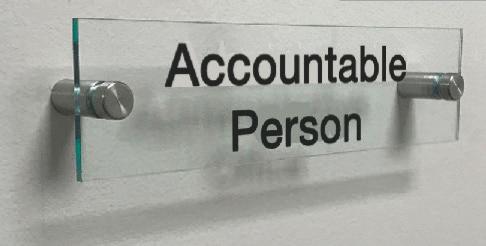
Mobility is key to Colt’s ability to reach you in a timely manner, anywhere in the UK.
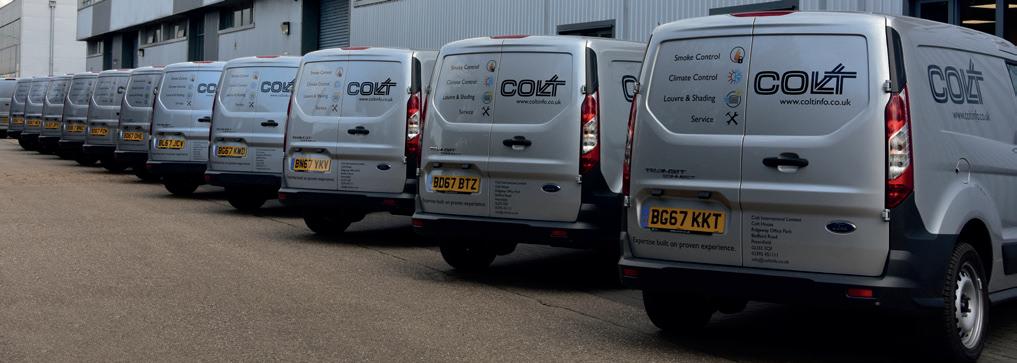
Does the buck stop with you?
Fortunately, Colt has been at the forefront of smoke control system design and installation since the early 1950s and is uniquely qualified to help you stay on the right side of the law.

A Colt service contract will keep you legal.
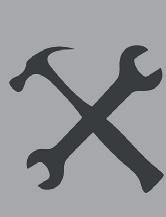

Only Colt has the depth of experience, the expertise and the national coverage to mitigate this weighty responsibility.
Our consultants are fully conversant with all smoke control systems, whether designed by Colt or other manufacturers.


They undergo regular training sessions to ensure that their knowledge of new products, systems and the ever-changing regulatory landscape is always up to date.
Our engineers assess components for re-use, repair or replacement.

Colt has the qualified engineers to ensure that every part of your smoke control system will perform as intended in the event of a real emergency.
Colt is the UK’s first company to be awarded certification to both IFC SDI 19 and SDI 05. Put us to the test.
To find out more or organise a survey, visit us at: coltinfo.co.uk/service-maintenance.html call us on 02392 491735 or email service@uk.coltgroup.com
flexible o ices that facilitate agile, hybrid workstyles is expected to remain robust in the long term. Companies will look for smaller, flexible workspaces that can cater for hot-desking on shorter terms, but while providing attractive amenities. The landlords that provide these services will fare better.
As if the pressure from the rising interest rates and changing o ice demand patterns was not enough, commercial property owners also need to consider new sustainability standards. These standards may be perceived as a government-induced headache, but there’s market demand for it too.
Arising interest rate cycle, hybrid working and a move towards greener buildings all point to challenging times ahead for commercial property owners, but it will leave resilient organisations well-placed to benefit as the nature of the workplace changes.

For observers of the o ice market, the unfolding developments are not a surprise. The latent demand for sustainability-focused flexible o ices, run with resilience in mind, has been growing for several years. It’s a trend that points to a working environment where o ice quality, convenience and carbon footprint matter most, both for productivity and attracting sta .
Amid double-digit inflation not seen for decades, interest rates are rising, making borrowing more expensive for debt-reliant buyers and exposing certain property ownership structures to considerable risk. The UK base rate is now 2.25 per cent, having risen from 1.25 per cent in early August, with fixed rate mortgages in the 4.85 per cent - 5.69 per cent range and variable mortgage rates around 3.50 per cent. Rates for small businesses will likely be higher.
Vacant or semi-occupied o ices compound those debt-related problems. Add to that the cost of upgrading buildings to meet environment standards and some property businesses could face serious di iculties. It demonstrates the value of a resilient
Most businesses are now adapting their work policies to accommodate the hybrid work model. This can mean a need for higher quality amenity led spaces, and more broadly for a great o ice environment that enable employers to attract and retain sta . It means that o ice providers need to stay abreast of what’s going on.
But remote working isn’t that unusual, in fact in London for example, remote working has always been more prevalent. This is because more people have jobs that allow for it, such as professional services, and information and communications roles, which account for about 22 per cent of jobs in London, compared to 14 per cent across England.

But the Policy Institute and King’s Business School recently showed that while the flexibility of the hybrid work model is valued, so too is the o ice environment. The sociability and buzz of an o ice is highly rated. A growing number of companies, including Apple, Freshfields, Citigroup and Google, are requiring sta to return to the o ice, if not full-time then for 2-3 days a week. It’s worth noting, though, that three quarters of employees believe the hybrid model is here to stay.
What this means is that demand for high-spec
The Environmental Performance Certificate (EPC) rating of a building can directly impact lettings. At present, the legal requirement under the Minimum Energy E iciency Standard regulations is that a commercial building must have a rating of at least E before a new or renewal lease can be granted. Overall, about 10 per cent of commercial properties do not have an EPC rating of E or above.
The government has made clear that it intends to introduce more ambitious energy e iciency targets. An EPC rating of at least B by 2030 is a strong possibility, with an interim target C-rating by 2027 also likely. Meeting these new EPC standards will be hugely expensive, made worse by the cost of borrowing, meaning that old o ice buildings may become obsolete. Already, landlords are selling o properties that fail to meet the standards.
However, forward-looking landlords will be on top of the sustainability issues for their properties, investing as needed to correct problems and also adopting processes, such as Service-Enhanced MultiOccupancy Buildings (SEMOB), to improve energy e iciency and reduce costs.
For tenants, the disruption caused by a property sale or o ice refit can have a significant financial impact in terms of work interruption. For them, it’s important to check the history of a building before signing a lease to avoid the possibility of eviction or disruption in the future.
In their due diligence, tenants would be wise to consider where SEMOB practices are in place. O ices that adopt SEMOB can unlock greater energy e iciency by managing the heating and lighting for hundreds of workers from a single central system. That’s good for all parties.
ownership structure that limits such risk exposure.Simon Eastlake, Managing Director, O ce Space in Town (OSiT) on how landlords that adapt to the triple whammy of rising interest rates, hybrid working and the net zero challenges can still keep their tenants happy










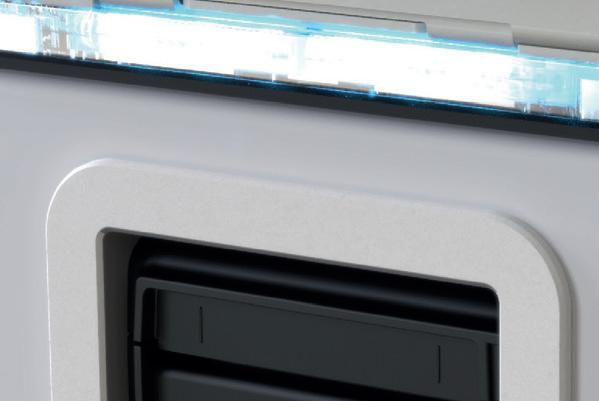









Protection of workplace premises is going digital. Altered work patterns and evolving regulations are prompting owners and tenants to give existing physical checks additional support to answer today’s data security, compliance, and personal wellbeing concerns.









Let SAM, our Smart Access Management system, be your ‘Digital Doorman’.
SAM makes it easy for facilities teams to control, check and enforce authorised workplace access. Intelligent contactless sign in upholds compliance and maintains a secure, real-time record in Azure Cloud of employees, visitors, and contractors across one or more sites. Real-time updates give premises managers continuous compliance assurance helping to create a positive, welcoming visitor experience for everyone.
Delivering assurance. Inspiring confidence.


Contact us now to find out more about how our Smart Access Solution can be built for your specific business needs.




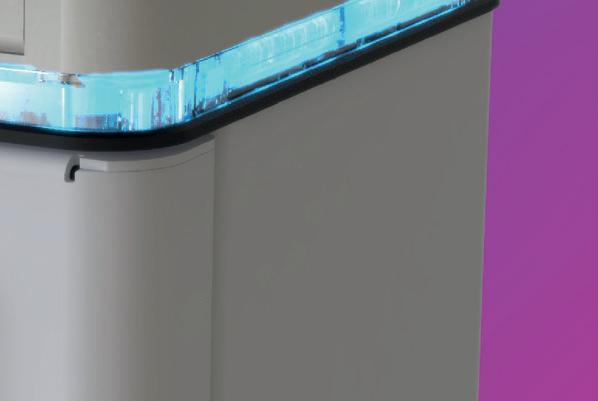




Email: SAM@pb.com
Phone: 02045 792 428 or visit: www.pitneybowes.co.uk/SAM





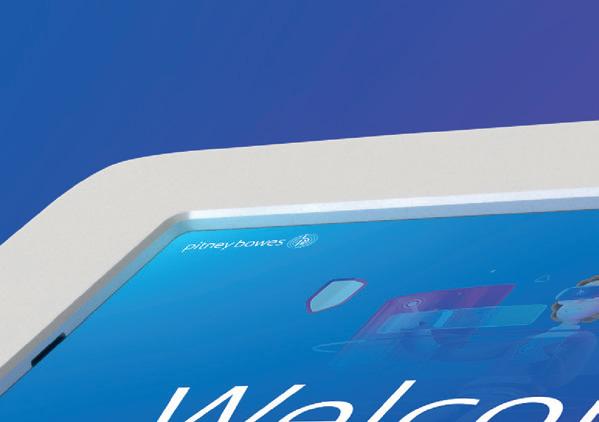

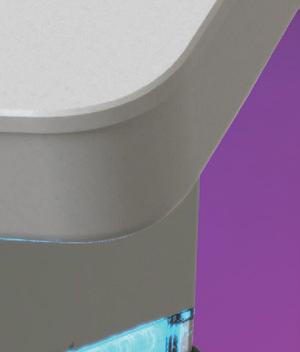




An organisation’s growth strategy defines its working model, resource management, budget allocations and priorities settings. All these parameters need to be monitored and assessed regularly to align them with the company’s strategy. If performance indicators are mapped according to company strategy, then measuring and managing performance is a parallel activity that guides the organisation in the right direction.
Make Your Key Performance Indicators visible By ensuring that they are visible across the organisation; once all the employees as well as leaders are cognisant with the goals of the organisation, understanding and working towards those goals becomes easier. While the KPI’s of individual employees, teams and departments would vary, they are interlinked and related to the common goals. Visible KPI’s also ensure accountability in the company.
When considered strategically, KPIs can become tools of not just performance measurement, but also performance management. The performance indicators can translate into a story about your organisation, shedding light on every tangible facet and letting you know areas of improvement by generating actionable insights. However, as varied as the insights would be for each organisation, so should be the KPIs. What might work as a performance measurement metric for one company, might not be the right measure for another organisation. KPIs are unique to every organisation and to get the performance metric to work for you, you need to pick the right ones.
While the objective of setting and monitoring the KPIs is to ensure a company’s progress by interpreting results and enabling leaders make better decisions, each plays a key role at a granular level. Every employee, team, and department need to have KPIs assigned that are in alignment with their goals, strategy and working models.
» A KPI should focus on solid, measurable goals that are both quantitative and qualitative.
» For an individual employee, performance indicators should align with the organic growth path in their job role, with some challenging objectives met for career
progression purposes.
» Rather than focusing solely on the end-goal, a valuable KPI should consider the segment of the goal. For example, instead on focusing on the low revenue KPI, measurement should be sub-divided, covering the individual reasons for the low revenue such as poor customer experience or obsolete service/ product o ering or poor working conditions (leading to demotivated employees). This way, actionable insights can be gleaned and remedial actions can be taken.
» KPIs should be relevant to the team so that they can gauge their performance to generate further growth options and opportunities. For example, for the marketing department of a company, if the KPI measures the outreach of their content on digital platforms, this would enable them to make their content more engaging and SEO-friendly.
» The right KPI should always be achievable. Nothing demotivates an employee more than targets which are not realistic. Also, an unachievable KPI would defeat the whole purpose of gauging progress based on the actual performance potential.

Many organisations fall short of selecting the KPIs that are Specific, Measurable, Achievable, Relevant and Time-bound (SMART). Similarly, the insights generated should end in an action item that can be worked upon for improvement. For example, instead of the KPI being ‘enhanced brand visibility,’ a more focused and measurable metric like, ‘20-25 per cent increase in the click rates on the company’s digital pages’ demonstrates progress made for the metric. This is the di erence between an objective and a subjective metric.
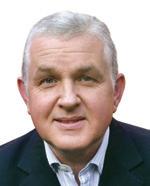
The role of data visualisation so ware Power BI in creating easy-to-interpret and insightful KPI dashboards is undeniable. With the help of the right BI tool, you could get KPI dashboards that can be accessed by your employees as well as leaders for better performance management. Leveraging technology to generate reports and dashboards is the concrete way towards ensuring that your KPIs are being assessed and worked upon regularly.
Power BI and other similar tools will only allow you to create powerful dashboards and the presentation of data in a visually pleasing manner. They do not guide you through the process of selecting the most appropriate KPIs for your service area/business to create an e ective and fit-forpurpose scorecard.
Choosing the right performance metrics (KPIs) for your organisation is the first and most important steps towards ensuring that you are collectively working towards your goals. These should be SMART and Objective wherever possible. They should also be based on the organisation’s Critical Success Factors (CSFs) so that for everything that is important to it will be measured and reported on accordingly.
Ensure Intersection of the KPIs with the Company Strategy
Key Performance Indicators (KPIs) are often thought of as mere metrics that demonstrate an organisation’s progress towards its goals. But they’re much more important than that, says Richard Davies, MD Evbex
Under the Regulatory Reform (Fire Safety) Order 2005, it is the legal duty of the “Responsible Person” to oversee the maintenance and testing of fi re safety systems. This includes fi re dampers and smoke control dampers, which are invaluable when it comes to maintaining the integrity of a building’s fi re strategy.
To ensure you meet the standards set out in BS 9999, your dampers should receive a full service once a year, be inspected at 6-monthly intervals and have 3-monthly functionality tests carried out by a competent servicer such as Kingspan Light + Air. Talk to us to arrange a visit.
Proper, preventative, pre-emptive service work undertaken by our qualifi ed specialists not only ensures that BS 9999 standards are met in full, but also offers considerable savings in time and money.
We will conduct the following procedures to ensure that successful and legally compliant damper maintenance is carried out:

Our engineers will look over existing damper maintenance provisions, review maintenance processes and offer advice on how best to proceed.
We will survey the site, verify damper locations and locate dampers to get a clear picture of the scale of the operation and an idea of the existing maintenance schedule.


We’ll check each damper individually, ascertaining the operational status of the system and all HVAC controls on-site.
We will consider which dampers to repair and which to replace, creating a cost-effective and considerate strategy for moving forwards.


On completion of the damper review process, we will assist in the completion of all asset registers, including the location, specifi cation and maintenance history for all dampers covered by the service contract.
Kingspan
2EX
www.kingspan.com/gb/en/contact-us/ www.kingspan.com/gb/en/services/smoke-fi re-damper-maintenance/
+44 (0)
FMs and their providers share one trait: upholding high standards at all times throughout their operations. If not, they might risk non-compliance, or worse still, injury.
Independent inspections are therefore crucial— they enable FMs to demonstrate their supply chain partners’ compliance and showcase their operational excellence. However, these inspections (which are a critical element of health and safety paperwork) should be conducted by impartial, consistent, and appropriately certified inspection bodies.
This is where ISO/IEC 17020 comes in. This is an accreditation awarded by UKAS, the Government appointed national accreditation body and it’s the gold standard for inspection bodies. FMs should ideally partner with organisations who possess UKAS ISO/IEC 17020 accreditation versus other alternatives.
By gaining accreditation which has been approved to ISO/IEC 17020, inspection bodies of types A, B, or C can demonstrate their impeccable credentials. Put simply, it’s a must-have for all organisations that perform inspections, whether for private clients or for public authorities.
The ISO/IEC 17020 is a conformity assessment designed for organisations that conduct inspections, surveys, and risk assessments. It applies to types A, B, and C inspection bodies, which are classified as follows:
The inspection body is fully independent of the parties involved and doesn’t engage in activities that might negatively a ect their independence of judgement and the integrity of their inspections.
The inspection body has some business activities that could potentially a ect their independence of judgement/the integrity of their inspection decisions. For example, perhaps they own, design, manufacture, install, or maintain some of the items that fall within the inspection body’s scope of accreditation.
The inspection body is an identifiable part of an organisation directly involved in the design, manufacture, supply, installation, ownership, use, or maintenance of items that fall within the inspection body’s scope of accreditation.
The ISO/IEC 17020 standard covers a wide range of activities. For example, these include examining materials, products, installations, plants, processes, work procedures, or services; determining how the examined services and products match up against the respective inspection requirements; and reporting the results of their inspection to both their clients and the relevant authorities.
Accreditation covers five major categories of requirements:
General requirements: impartiality, independence, and confidentiality.
Structural requirements: administrative needs, organisation and management.
Resource requirements: personnel, facilities and equipment, and subcontracting.
Process requirements: inspection methods and procedures, handling inspection items and samples, inspection records, inspection reports and inspection certificates, complaints and appeals, complaints and appeals processes.
Management system requirements: management system documentation, control of documents, control of records, management review and internal audits, corrective and preventative actions.
The ISO/IEC 17020 conformity assessment demonstrates inspection bodies’ competence, proving their inspections are reliable, consistent, and trustworthy. As such, it’s a key competitive advantage—inspection bodies that demonstrate ISO/IEC 17020 accreditation set themselves apart from the competition.
ISO/IEC 17020 is globally renowned and recognised by both the ILAC and IAF, meaning it has a reputation for quality. This makes it perfect for bodies seeking to conduct inspections for international clients. It guarantees they operate to the highest possible standards while also confirming the technical competence of their quality management systems.
Additionally, ISO/IEC 17020 accreditation boosts organisations’ wider reputation, helping to develop mutual trust between the inspection body and its clients. Clients know that their inspectors use the
appropriate methods, equipment, and safeguards to guarantee impartiality and confidentiality. In turn, this means that the ISO/IEC 1702-accredited inspection body will produce unbiased, impartial, and reliable results. It’s a win-win for both parties.
By adhering to the ISO/IEC 17020 standard, inspection bodies will also greatly reduce the likelihood of having to complete re-inspections/rework due. They will follow the latest inspection best practices at all times, meaning standards will never slip and they won’t have to waste time, money, and clients’ patience completing the same inspection twice (or more). They’ll carve out a reputation for quality, further enhancing their reputation in the market.
Reputational benefits are valuable, but staying compliant is critical. ISO/IEC 17020 accreditation shores up compliance. For example, consider that the ‘Managing health and safety in construction’ guidelines, published by the Health and Safety Executive (HSE), states:
Contractors must be able to demonstrate they have skills, knowledge, experience and organisational capability to manage health and safety;

Clients who appoint contractors must take steps to ensure that the designer or contractor has enough experience and a good record in managing the risks involved in projects.
By working with an ISO/IEC 17020-accredited inspection body, facilities management organisations can bring contractors on board, safe in the knowledge they can demonstrate their health and safety credentials. In other words, that they’re capable of to managing projects safely.
Last but certainly not least, ISO/IEC 17020 accreditation increases trust. This is crucial trust underpins all inspection activities. ISO/IEC 17020-accredited inspection bodies trust their inspectors will operate according to the highest standards. Meanwhile, customers will trust the inspectors’ judgments, consistency, and the reliability of their results.
The takeaway is clear: make sure you partner with inspection bodies who boast government-backed, UKAS-governed credentials, when choosing ISO/IEC 17020 accreditation.

Gemma Archibald, Alcumus Chief Operating O cer –Membership, outlines the benefits of partnering with inspection bodies who have been certified as meeting ISO/IEC 17020In association with www.alcumus.com



































is less costly than clearing up a er it has occurred. Therefore, having a PPM schedule in place makes the best sense. Surface water interceptors must be cleaned and emptied regularly to ensure they are doing their job of capturing potential pollutants.
System cleaning and flushing will reduce the risk of floods disrupting business activities in ways that are commercially and reputationally harmful. It also protects drains against deterioration, for example through root ingress.
Businesses must also be ready if the worst does happen. Ensuring a site flood response plan is built into business continuity planning is vital.
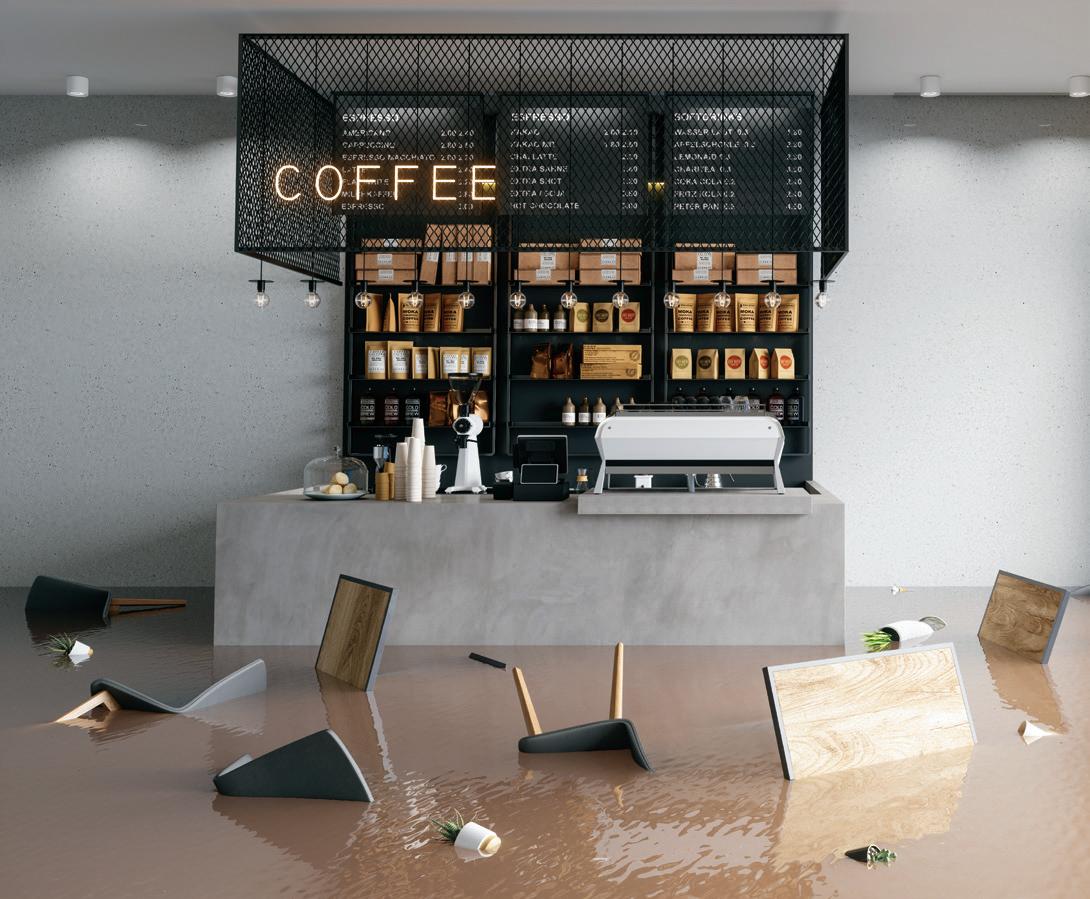
Having rapid access to a reputable drainage specialist, preferably one that understands your site drainage from carrying out PPM work, is likely to be beneficial.
Here in the UK we’re used to a variety of weather, but climate change is making that variety ever more extreme. That brings significant challenges as flooding does not just involve rivers bursting their banks or waves breaching sea defences. Overwhelmed surface drains and sewers o en contribute to localised flooding.
The following six-step checklist can form the basis of a timely site drainage resilience review:
Is your property in a location that is at particular risk of localised flooding? Just because a property has not flooded before, it does not mean it will not flood in the future.
Flood risks change over time. It is possible that the Environment Agency or your Local Flood Authority has recently put in measures to reduce flood risks in your business area. Or, changing local conditions may have increased risks.
It may be worth using flood risk checker services operated by UK governments. You can also sign up to receive local flood alerts. Where
Do you have an accurate and up-todate map of your site drainage? Site drainage systems can be developed over decades. Records are o en piecemeal and inaccurate and only when you have an accurate site drainage map can you begin to assess its condition, capacity and fitness for purpose, now and into the future.
These issues can only be properly addressed by commissioning a drainage specialist to carry out a full site CCTV drainage survey. This will show where remedial action may be needed to address faults that increase flooding risks.
It will also help you assess if your drainage system complies with pollution regulations. With localised flood risks increasing in many areas, this could be vital, to prevent your first flooding incident also being the first appearance in court for pollution o ences.
In the long-term, preventing flooding
If you are already experiencing drainage problems, now is the time to deal with them. If sinks and toilets are not emptying quickly, wastewater may be building up inside pipes behind blockages. Water pooling on hard surfaces may indicate blockages or breakages in surface water drains.
This is particularly common across parking or access areas, where the weight and vibration e ects of vehicles can contribute to drain collapses.
Di erent sites have di erent drainage problems. For shopping and leisure centres, sewers are o en compromised by toilet misuse, through the wrongful flushing of wipes and nappies.
Disposal of fats, oils and grease (FOG) and waste food down sinks and drains, in particular by restaurants and food producers, are frequent causes of drainage blockages.
Both can lead to localised internal and external flooding. Customer and sta awareness campaigns within such facilities may help reduce this problem.
Business sites may be at risk of flooding due to o site issues – for example if a local water course is blocked.
Understanding these issues and raising them, in a timely way, with relevant authorities and property owners is an
Climate change is creating new drainage challenges where the condition of site drainage systems can change more rapidly than in previous, less volatile, times.
Just like clean water pipes, surface water drains and sewers can be a ected by the seasonal contraction and expansion of clay soils, resulting in pipe joints being displaced, pipes cracking or collapsing.
This problem is expected to become more commonplace due to climate change, with northern areas of the UK increasingly a ected for the first time due to changing weather patterns.
During prolonged periods of dry weather, tree root systems grow more aggressively, increasing the risk of root infestation in drainage pipes.
Low flow rates in drainage channels during dry weather allow solid material and debris to build up, increasing the risk of flooding when the rains return.
In line with the government’s national flood strategy, there are three important elements to site drainage planning –protection, resilience, adaptation. So assess the risks, including through CCTV drainage surveying, put in place PPM systems, and improve site drainage where necessary. Otherwise, your sites may be exposed to unacceptable risk of serious flooding events and the far greater costs they would incur.
necessary, taking advice from a hydrologist may be advisable.
Climate change means it has never been more important to assess site drainage risks and take steps to control them, says Kevin Moon, Managing Director of drainage and wastewater specialist Lanes Group plc



























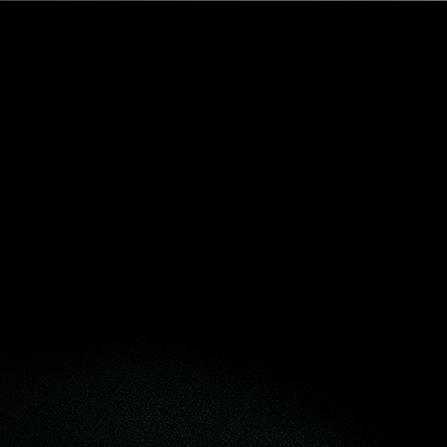
Tom attended a blind customer’s house where he found the customer’s dog had passed away. The customer was completely unaware.
Tom worked tirelessly to complete the job and then respectfully informed the customer, and provided comfort until his carer arrived.
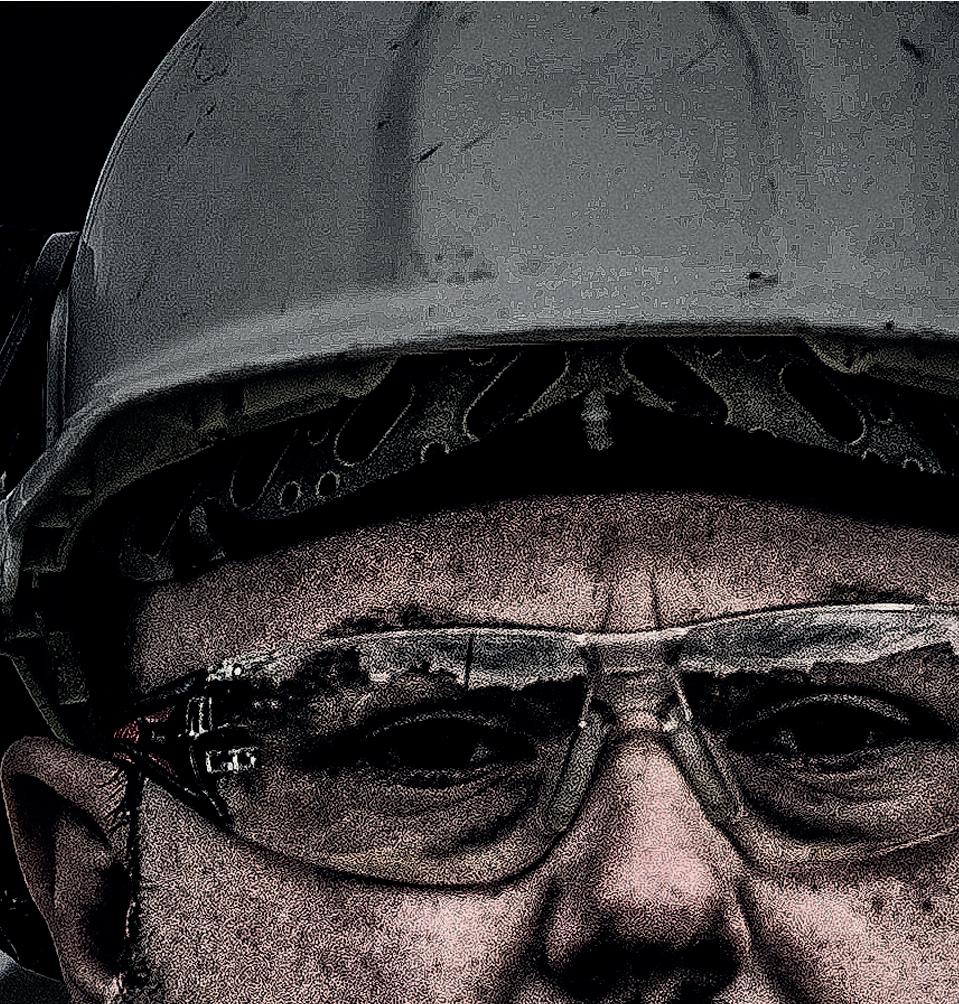
Complete water in, waste out solutions. Find out more: www.metrorod.co.uk





@AndrewHulbert It was an honour to be involved in the #WIFM conference today. So much energy in the room. I can’t help but reflect on my career as I reconnected with so many brilliant women that have supported us along the way. What a room!
Robert Trewick linkedin.com/in trewickrobert - Account Director at NG Bailey - All our best wishes to Peter Shore, who leaves the campus today. Peter has been part of our Broadgate family since 1996 and his influence, guidance and support to the teams will be difficult to follow. Good luck Peter!
@theCIOB Last night we celebrated the excellence of more than 20 individuals and organisations who inspired us. The most coveted award of the night, Construction Manager of the Year, was presented to Joe O’Connell from @kierconstruct https://orlo. uk/ali8u
Arnaud Salley linkedin.com/in/asalley Employee Experience | Digital Transformation | Workplace Technology - I’m happy to share that I’m starting a new position as Global Head of Estates Technology at Dyson!
Amy Brogan linkedin.com/in/amybrogan1 Driving a Sustainable Vision for Facilities Management - I’m so pleased we have created next generation opportunities via our Energy and Sustainability graduate programme. Looking forward to the first cohort joining in January. #sustainability #esg
BritishSafetyCouncil @BritSafe British Safety Council Sector Interest Groups are looking for new members! There are currently spaces in the following groups: construction, healthcare, housing and local authority, manufacturing, retail and stadia. For more information visit: http://britsafe. org/SIGS
Fiona Bowman MBA CIWFM FCM linkedin. com/in/fiona-bowman-mba-ciwfm-fcm4a4b7919 #BicscAwards Engaging with the #cleaning profession, highlighting how important it is for them to support staff who are affected by #domesticabuse. As a Lead Ambassador for #EIDA. (Employers Initiative on Domestic Abuse) we are reaching out to businesses everywhere. #employers #domesticabuseawareness #youarenotalone #domesticabusesurvivor


from the World Economic Forum has found that the built environment is responsible for 40 per cent of global energy consumption and 33 per cent of greenhouse gas emissions, with one-fi h of the world’s largest 2,000 companies adopting net zero strategies by 2050 or earlier.
As one of the world’s largest emitters of greenhouse gases, the real estate industry must unite to decarbonise our planet.
In the midst of an energy crisis, it might feel to some that their ambitious ESG initiatives need to take a back seat while the – hopefully – short term issues around energy cost inflation are resolved.
However, from a commercial and industrial real estate perspective, both issues are ultimately driven by the overall e iciency of buildings. With increased asset e iciency comes a reduction not just in energy consumption and costs but also in your carbon footprint.
Directions to the road to net zero?
With spiralling energy costs and ever-increasing regulations around ESG reporting, landlords and occupiers need immediate solutions to address these challenges. But most businesses simply have no idea what their carbon footprint is, or indeed what steps they need to take to even begin their net zero journey. It all starts with looking objectively about where you are today. Not in 2030 or 2050. But right now. With these insights, you can begin to create a sustainability blueprint to optimise your building or portfolio – and this is where tech comes in.

There has been an explosion of technological innovation in the built environment in the past few years. Smart sustainability solutions are here now, drawing on cutting-edge technology such as bespoke machine learning algorithms and AI to provide actionable building intelligence. Rather than asset managers and occupiers using intuition alone, these deeper smart insights into building performance allow you to make more data-driven decisions.
At Ecolibrium, a machine learning-led decarbonisation platform, we have developed a technology product called SmartSense which assimilates thousands of internet of things (IoT) data points from across a facility’s entire energy infrastructure. This information is then channelled through our proprietary machine learning algorithms. Customers can visualise the data through a bespoke user interface that provides actionable insights and a blueprint for achieving operational excellence, sustainability targets, and healthy buildings. This connected
infrastructure generates a granular view of an asset’s carbon footprint, unlocking ine iciencies and empowering smart decision-making, while driving a programme of continuous improvement to deliver empirical and tangible sustainability and productivity gains.


Our vision for industry is to help businesses create a balance between people, planet and profit –which can be called the ‘triple bottom line’. We like to call it sustainable prosperity, and really means that we aim to create equilibrium across all three elements. We firmly believe that being sustainable is not just about being green, it’s also making sure that you grow your business in the right way. Reducing your carbon footprint is key but not at the cost of profitability.
From a people perspective, you want to make sure that your working environment can inspire and encourage employees to do their best work. Are the light, humidity and temperature levels optimised? Technology can now automate some of these processes, adapting workplaces as required to boost productivity.
By focusing on the micro behaviours and operations impacting our local environment, only then can we understand how to positively impact the macro climate challenge we’re all facing.
We’ve never had access to so much data – but without smart technology synthesising it into actionable and useful intelligence, a lot of it is useless. We’ve made real progress in recent years to accelerate the integration of technology into physical spaces and places, and it is encouraging to see startup founders applying their time, e orts and talents into the sector.
Technological innovation certainly has the potential to unlock a more sustainable future for our sector, and I’m excited to see how sustainability-focused changemakers can lead the decarbonisation drive.
Chintan Soni CEO and Co-Founder of Ecolibrium


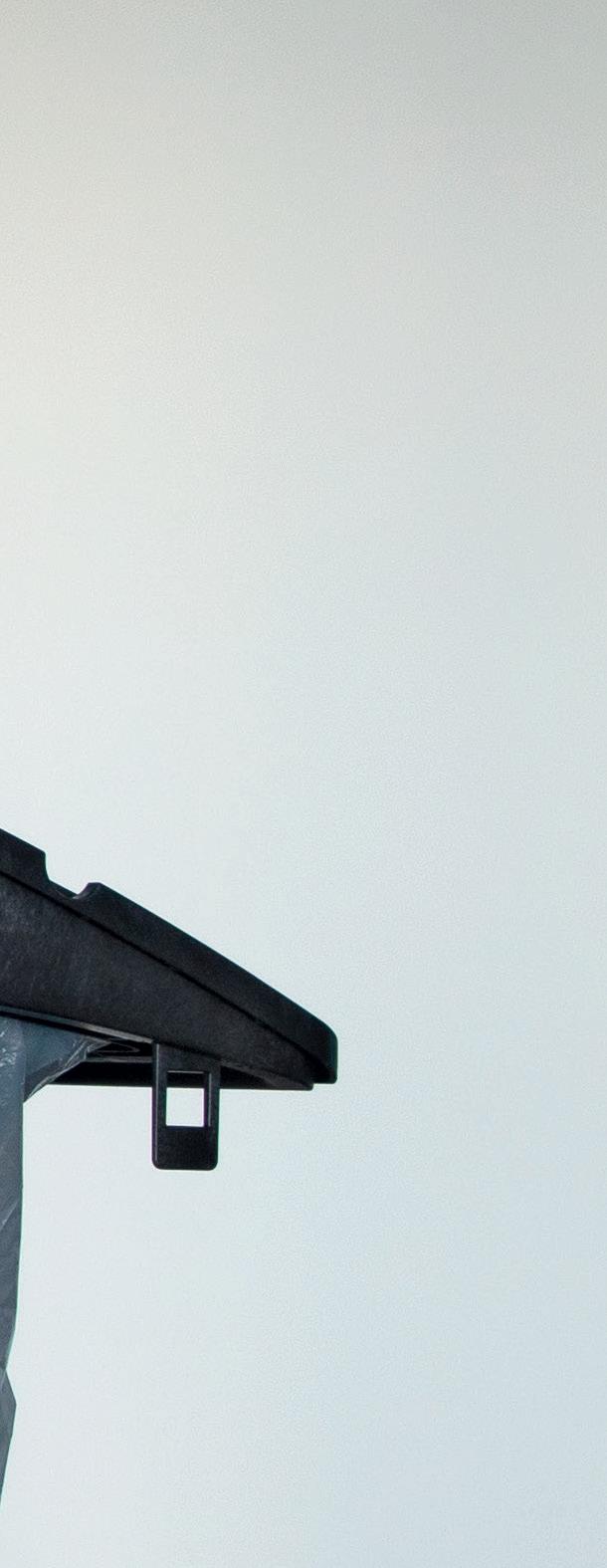




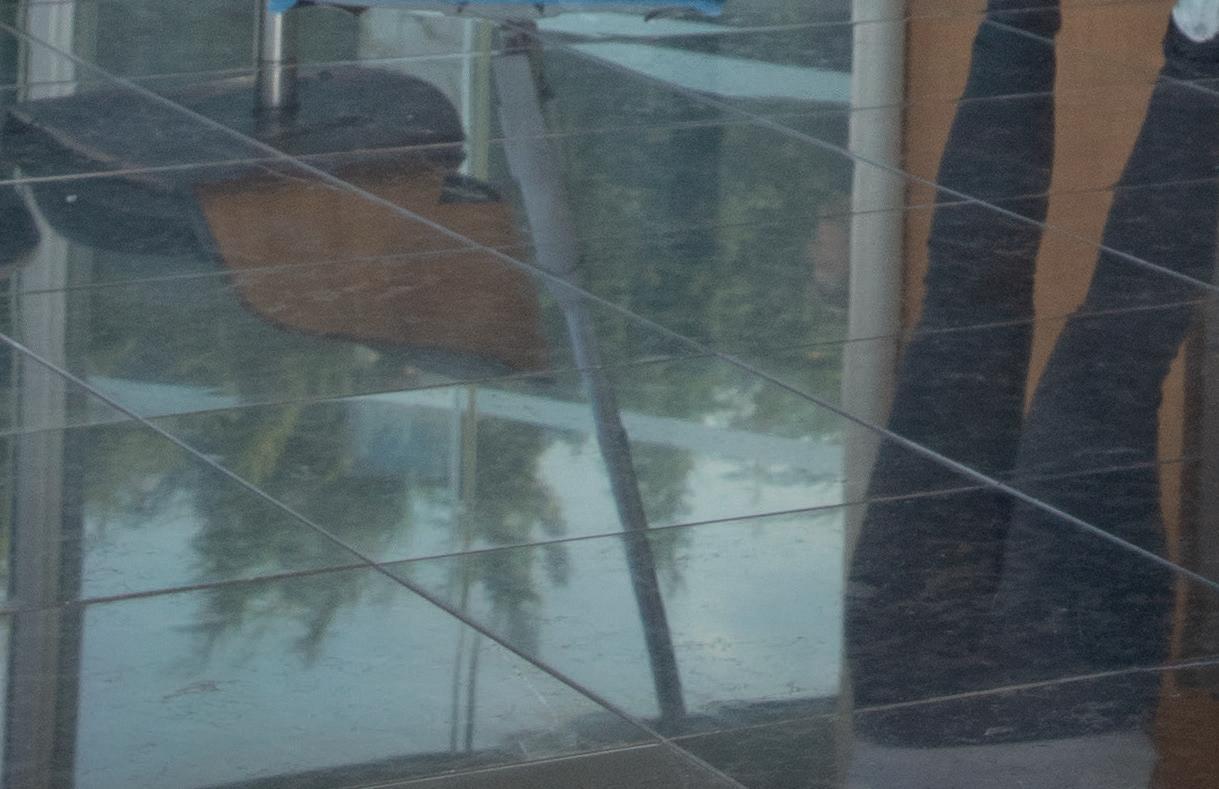















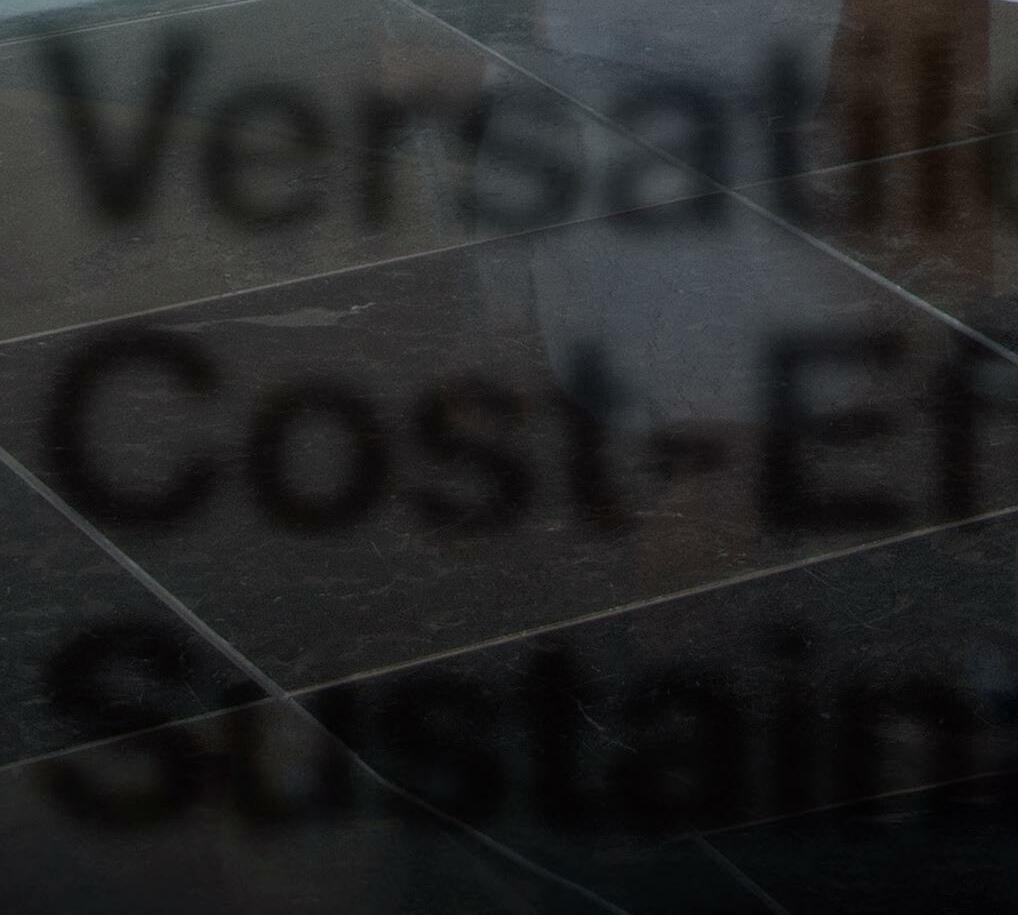

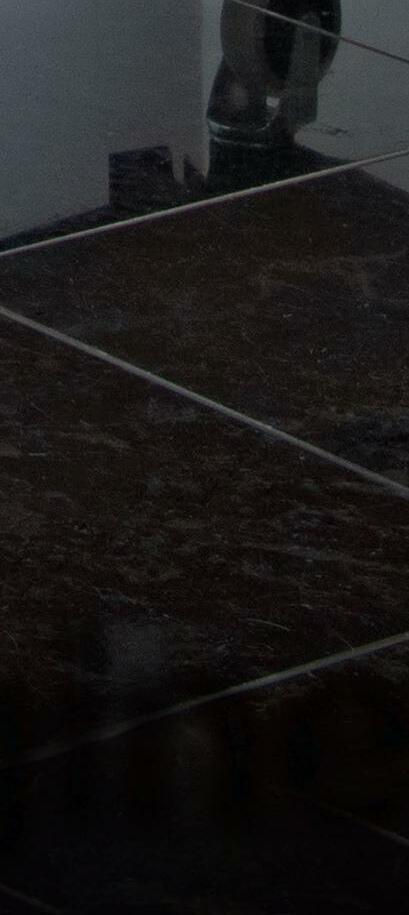

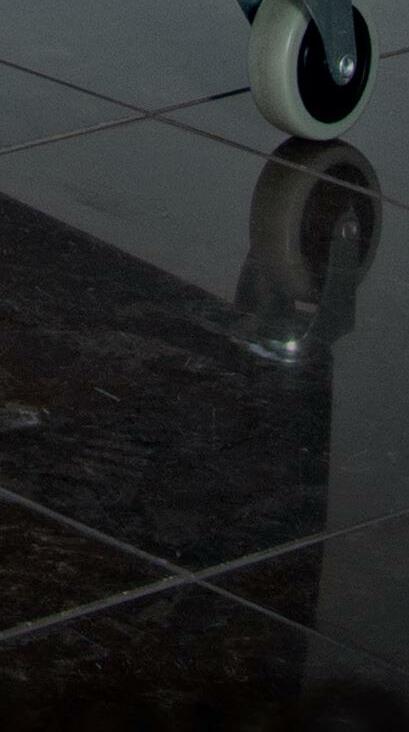
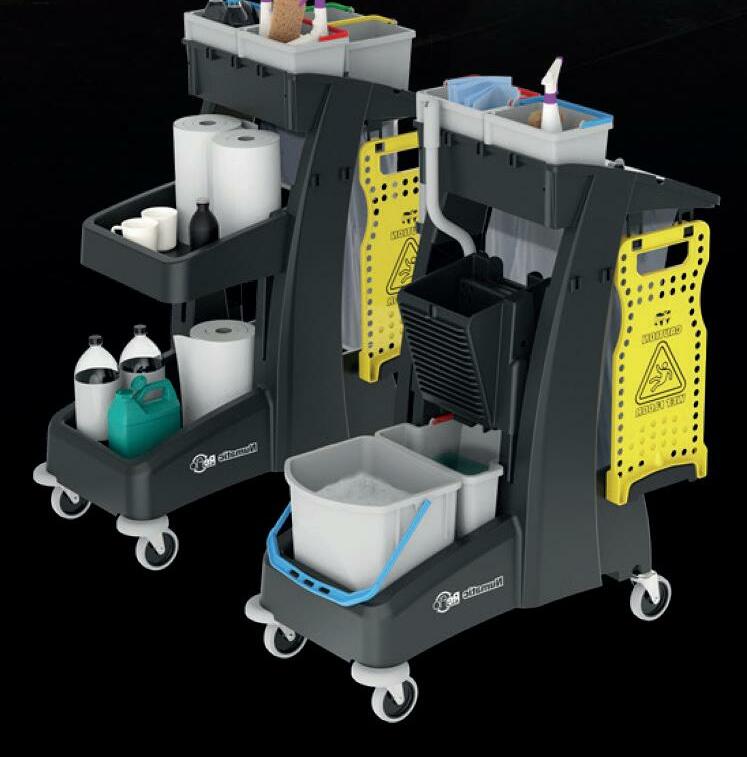



According to the ONS around three in four adults (77 per cent) feel very or somewhat worried about the rising costs of living. Although hybrid working remains a popular option, as energy and food bills continue to soar there’s growing uncertainty on whether it’s more cost e ective to work at home or in the o ice. Either way, what more can be done to support workers through what is predicted to be a challenging winter?
wouldn’t make sense to undo the work that’s been done to fully entrench hybrid working into history.
Why would workers go back to the o ice this winter? The idea that they should go back because it’s warmer in the o ice and they will save money is only true in some specific circumstances.
Workers will still have to get up early, drive to the o ice or the train station, ultimately losing hours of their life and money to the commute. It doesn’t seem plausible. In some cases, workers may be in a position to handle a spike in energy costs from not having to spend a small fortune commuting to work.
This could be a great moment for leaders to do something positive for their people. Organisations are potentially saving
In FMJ's regular monthly column, our team of FM experts answer your questions about the world of facilities management


a lot of money on space and a door has opened for them to ensure their workforce are happy and healthy this winter both physically and psychologically.
The AWA Hybrid Index recently surveyed nearly 80 o ices in 13 countries, representing nearly 80,000 employees. It revealed a seismic shi in working patterns, with people now coming into the o ice an average of just 1.4 days a week, versus nearly four days a week before the COVID-19 pandemic. What’s more, it found that on an average day two-thirds of desks are unused and just over a quarter of people are coming into the o ices. It would have to take something very drastic for these numbers to be flipped on their head.
Despite the potential for high domestic energy bills this winter, I believe most people will still work from home. However, one thing employers could do, which I don’t think is being talked about enough, is provide funding or grants for their employees to help them improve the insulation of their homes. I hope this is considered before organisations demand people back to o ices, sometimes against their will, or o ering to contribute towards their energy bills. Not only would it add comfort and improve wellbeing, in the long run it would contribute to a reduction in the UK’s greenhouse gas emissions.
Organisations must think flexibly when it comes to working conditions, and that goes beyond this coming winter. This issue goes deeper than workers attempting to squeeze every last penny out of their employers who are struggling to navigate a global crisis. It's an employment rights issue.
Encouraging people back to the o ice doesn’t feel right to me, especially when large amounts of carbon are being used in the quest to get people back in. We can’t go back to the old way of working, yet it seems like some camps are rubbing their hands with glee at the thought of workers returning. It
There will always be value in people coming together in an o ice to solve complex problems, deal with complex emotional issues, and connect socially with others. But few people will need a central location for 100 per cent of the time. As a result, leaders need to work with employees to make their life as comfortable as possible working from home because I can’t see that revolution ending any time soon.


C-J GREEN, CO-FOUNDER OF BRAVEGOOSE AND COCREATOR OF CLEVERGOOSE™ HR ADVICE TECHNOLOGY
It is fair to say employers have rarely faced such a convergence of challenges as they do at the moment, not least because they have to deal both with the commercial challenge of ensuring the sustainability of their organisations but in addition they are looking at the demands of rapidly changing workforce dynamics. This is all contributing to the need for organisations to keep on their toes when it comes to supporting their teams. So what can be done at times like these to ensure those in our workforces are supported in the di icult months to come?

This is an obvious one but you cannot overemphasise the need for strong communication channels when times are challenging. It is not enough, however to merely send out updates about the business. Hunt out the best ways to get your workforce engaged and communicating and don’t choose just one method on rare occasions.
useful free tools for employers and employees to use, o ering support with financial wellbeing which is well worth signposting to your teams.
There is no magic wand to guide us through these changing times but if you are prepared to listen, learn and trial di erent approaches in collaboration with your teams they are more likely to feel supported.























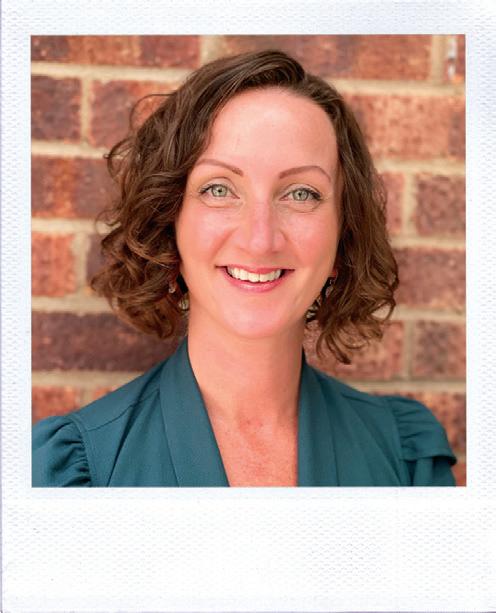

Most people feel supported (or not) as a result of the skills of the person they work directly for, so are all of your people skilled at strong communication? When people can see the power of two-way dialogue they feel genuinely supported.
This one is particularly key if you have a hybrid workforce and are getting to grips with workforce dynamics being a little di erent. Or maybe you have always wrestled with the challenge of head o ice versus operational employees on the ground.
Make sure those based in o ices are feeling the same appreciation as those working in other environments and vice versa. You may have to work a little harder to reach those you don’t see day-to-day but that only makes the need for appreciation more important. It doesn’t have to be costly, think about asking your people what makes them feel appreciated.
Making sure that appreciation is targeted at the person you intend it for is important. Accepting that everyone is di erent and may need to engage, connect and hear appreciation di erently is crucial, even more so when times are challenging.
Before embarking on the next project to boost morale or engage your teams think about who you are targeting.
There are not many workforces who won’t be impacted by the rise in cost of living and we all know that it is challenging for people to perform well when they could also be stressed about things outside of their control.
Look at the tools you have in place to support them and the forums you are providing for your teams to seek support if they need it. The money and pensions service have some really
research from Money
Organisations must think flexibly when it comes to working conditions, and that goes beyond this coming winter. This issue goes deeper than workers attempting to squeeze every last penny out of their employers who are struggling to navigate a global crisis. It's an employment rights issue. AndrewMawson
to return to the workplace rather than stay
Not so long ago there was the buzz around working from home but, with additional cost of living pressures there seems to be a move to a return to work culture. Recent research from Money Supermarket stated that 14 per cent of Britain’s workers are looking to return to the workplace rather than stay at home and work due to the cost of living increase. Still however, many individuals are weighing up travel and time costs versus staying at home and associated costs.
A number of organisations are rising to this home
A number of organisations are rising to this challenge and are looking at innovative ways to support their teams working from home that are above and beyond the “increasing salary” conversation to ensure that the organisations stay sustainable and that their employees are looked a er.
This support is being delivered through a number of ways and include some of the following:
Recipe cards for families, ranging from a couple or families of 4/6
Information that outlines how to feed a family of four healthily for a fiver
Energy top tips leaflets
The provision of grants for sta to assist them with improvements to their properties (covering energy e iciency)
A number of organisations are linking into the 4 day a week discussions and the viability of allowing people to take on a second job
Loans for public transport
Salary sacrifice for cycle to work / child care schemes
More flexibility in hours worked
Sell back of holidays and providing financial advice
Speaking to employers there is a clear understanding that more
is needed to assist sta but there are also the wider impacts that the cost of living crisis has on the organisation themselves. But the question remains the same, what more can be done to support workers through what is predicted to be a challenging winter? Will the challenge continue once the costs plateau or as costs soar is this going to be the new norm? With this in mind employers will be forced to look at additional support measures for sta to maintain healthy levels of recruitment and retention – all of which could have a knock-on e ect on a wider level across the economy.
THE CORPORATE REAL ESTATE CONSULTANT’S VIEW

 RAJ KRISHNAMURTHY, CEO, FREESPACE
RAJ KRISHNAMURTHY, CEO, FREESPACE

Workers have been given more flexibility and choice in the way they work. However, being given the right environment to work is all employees want and businesses should focus on this rather than getting too caught up about forcing a specific working pattern.
The challenge is coordination of schedules. For example, enabling informal social circles within the workplace can help people coordinate their plan to visit the o ice together. Technology can be used e ectively to enable this.
Third – curate the experience: Coming to the o ice should not be a chore. On the other hand, it needs to be an experience to look forward to. Service defines experience. Thinking through ‘a day in the life’ scenarios can help define the services and touchpoints to curate an experience which will make every visit memorable.
During the summer heatwaves, we saw an increase in o ice occupancy across the UK and London as more workers commuted into o ices to make the most of the cooler working environment thanks to air conditioning. More of the same come winter as workers seek the heat and warmth of the o ice is a strong possibility. What can businesses do to make it easy for employees to navigate the upcoming challenging days?
Regardless of the time of year, organisations must carefully consider what sort of experience they want their employees to have, be it at home or in the o ice.
Our research has revealed four aspects businesses can focus on to do the right thing this winter.
First – o er flexibility: The workforce expects and needs their workplace to o er a variety of space options, be it a dedicated desk, quiet areas, relaxation zones, standing desks, collaborative spaces or private meeting rooms. There will be a lot of pressure on this in the coming months. Employees will be seeking to work flexibly across days (time) and location (space), and the o ice will need to provide this. What is clear is that the new way of working is now having a profound impact on space planning, design and usage.
Second – facilitate collaboration: One of the main values of a formal working environment is it provides a ‘place’ to collaborate.
Fourth – engage through communication: Consistent, relevant and bi-directional messaging is the best way to ensure employees are connected with your mission. Communications need not be formal but they need to be easy. There has been tremendous innovation around using technology e ectively – understanding context, identifying location, anonymising personal data, all while making it easy for the user. By maximising methods used to obtain feedback or collect anonymised data, businesses can ensure they provide the right support to employees.
Organisations must also look at ways of making working from home this winter as manageable and comfortable as possible, especially given the backdrop of energy costs. While they could o er to help in monetary terms, leaders should ensure they o er their employees a channel and outlet with which they can openly discuss any concerns.
With teams having more say on when and how much time they spend in the o ice, and what activities they do while there, organisations should forecast requirements on a daily basis to consistently make the best use of the space that they have available and to help support their workers.
This newfound freedom needs to be harnessed. Businesses will gain significantly from the smarter use of their real estate resources in the months and years to come
Email: sara.bean@kpmmedia.co.uk
Do you have a question that you’d like answered by the FMJ Clinic?
Make sure your world is a cleaner, greener place than it was before. Partner with Kärcher and access the professional cleaning solutions you need to reduce your carbon footprint, meet your sustainability goals, and keep cleaning responsibly.
When sustainability matters, Kärcher delivers.


The last few years have seen a surge in awareness and support around environmental change. COP26 last year was a huge global event, and since then we have all felt the impact of climate change on a local level through the summer heatwaves in the UK.
A BCG report found that respondents from numerous countries are more environmentally aware since the outset of the pandemic, with the younger generations leading the charge.
As more members of Generation Z enter adulthood, their environmental concerns need to be listened to in order for businesses of all kinds to win over their support. This means businesses need a strong ESG strategy to attract talent and
need to demonstrate sustainability to appeal to customers.
Universities and colleges are one of the first real o icial public bodies that young people encounter, and they are not afraid to speak their minds about them. A study by the Times Higher Education found that a university’s sustainability policy and work is more important than location for mobile students.
Additionally, a study by the National Union of Students found that over 60 per cent of students want to learn more about sustainability at university, with 87 per cent of all students agreeing that their university
should take sustainability more seriously.
It’s generally accepted that the built environment accounts for around 40 per cent of greenhouse gas emissions, and that this is set to double by 2050.
Higher education estates make up a significant percentage of the built environment. There are around 164 universities and higher education institutions in the UK alone. Many of these establishments have numerous sites and sometimes hundreds of buildings. The University of Edinburgh, for example, has 458 buildings across seven sites.
Not only does the higher education sector have a great opportunity to make a positive di erence but having a clear sustainability policy and delivering may be
critical for continuing to attract students in a highly competitive market.
There are many ways that FM can provide greater sustainable practices to an education estate. The use of technology is particularly important, primarily through the use of computer-aided facilities management (CAFM) systems.
As already noted, school and university campuses host a range of large buildings with various needs. For example, accommodation buildings that require specialist health and safety, science labs that may need specific alarms and ventilation, and all buildings that need specialist fire doors.

These buildings all have di erent energy uses, too. Some may only be in operation during core work hours ofnine to five; others, like libraries, may be in use 24 hours every day of the week.
All of these factors require di erent sets of paperwork, sta time, management and reporting, which can be hugely timeconsuming and not very cost-e ective. CAFM helps to solve these demands by streamlining all asset, building and maintenance activities. By using a CAFM system, universities are able to control the scheduling and allocation of maintenance for the many assets located across the educational campus, ensuring all areas are always available for students. Similarly, when managing the estate as a whole, intelligent data supplied by an e ective CAFM system is able to help a university to identify any underperforming or ine icient assets and replace them with those that will improve energy and reduce emissions.
Integration with third-party tools, such as sensors or BMS
(Building Management Systems) enable data from multiple sources to be captured and analysed to inform actionable insights around sustainability. For example, input from sensors enable FM teams to turn o lights and heating in buildings that are unoccupied in order to save energy and minimise their carbon output.

E iciencies gained can o er a rapid ROI, while changes made for sustainability reasons can be shared with students and employees alike.
Universities are renowned for sharing best practice and it always pays to learn from what others are doing around the world. Here are a couple of case studies that show how our CAFM solution, QFM, and other technology has supported higher education estates around the world.
Curtin University
Ranked in the top one per cent of universities worldwide, Curtin University

There are many ways that FM can provide greater sustainable practices to an education estate. The use of technology is particularly important, primarily through the use of computer-aided facilities management (CAFM) systems.”
supports 55,000 students at campuses in Australia, Dubai, Singapore, Mauritius, and Malaysia. It was awarded Australia’s first 5-star ‘Green Star-Communities’ rating from the Green Building Council of Australia (GBCA) and given a sixth star in 2020.












Perth is home to Curtin’s largest campus. Here, the university is seeking to transform the estate into a ‘City of Innovation’, with the first stage covering student accommodation, shops, a boutique hotel, commercial and residential space for lease, and public areas.
To support this, the site’s facilities management team required new CAFM so ware that could meet its current needs and scale alongside its ambitious growth plans. Currently, Curtin averages more than 25,000 reactive jobs raised per year. Given its ambitious growth plans, routing all requests through the help desk to then manually allocate and track each job was not a viable option.
Here, our QFM solution provided an integrated, mobile-enabled facilities and asset management system to streamline and automate end-toend business processes for the operations and maintenance portfolio at Perth.
Maintenance workflows have been automated for reactive and planned jobs, with in-built prioritisation escalations helping to ensure the most urgent works are completed first.
Operational e iciencies and enhanced resource utilisation are helping Curtin to operate with a more e ective and sustainable maintenance regime which minimises wastage and ensures the estate is wellmaintained.
Well-maintained assets use less energy, and Curtin has also been able to remove paper from its processes thanks to going digital – its QFM app contains 60 digital maintenance forms which FM sta use to manage jobs.
The use of technology to achieve sustainability objectives extends far beyond the optimisation of FM on existing campuses.
The Bräckeskolan school in Gothenburg wanted to renovate and modernise its building, but the existing 2D building drawings were inaccurate as changes made to buildings over the years had not been properly recorded.

Through a process of laser scanning, we created a 3D building information model
(BIM) model. This gave the architects a complete design model to work from, safe in the knowledge that all measurements and dimensions were accurate. In case there were any concerns, designers could take a virtual tour of the space and collect measurements themselves.
The adoption of BIM not only ensured a smooth project this time around, but has improved modelling so that all future works will be much more e icient.
In Kålltorp, we supported a student accommodation provider to deliver virtual tours to prospective students that were not able to visit the site in-person. This was through the use of visualisation technology that o ered students a virtual tour of the space.
Students could explore the rooms, get a genuine feel for the size of the space and even plan on how they would decorate. The tours were such a hit that all 123 apartments were rented out without a single physical tour.
Not only did this o er an inclusive solution, but it’s great for sustainability too – the lack of physical travel can make a big dent in carbon output.
Higher education institutions have always been known for being forward-thinking and innovative organisations. Now, they have a chance to be a leading sector in
estate management and set an example that other industries can follow.
Many are already adhering to the 17 UN Sustainable Development Goals (SDGs) to help them embed social, environmental, and economic practices into their operations and their teachings as a strategic priority.
Some universities have started o ering carbon literacy training courses in order to teach students and sta ways to live and work more sustainably. Others, as we have seen, are adopting technology to increase e iciencies in estate management and construction projects.
The learning here is that achieving genuine sustainability success requires a multifaceted approach and collaboration between multiple teams. From the FM side, access to accurate information and insights is critical. It leads to immediate improvements in e iciency, as well as a treasure trove of insights that deliver measurable ROI.
It’s a programme that may take time to develop and implement, but the benefits are clear. First and foremost, change is necessary to reduce carbon output and its impact on climate change. Secondly, with the well-publicised predicted rise in energy costs, minimising utility bills across the university estate will be a major budgetary concern. Beyond that, universities may struggle to compete if students continue to place such a high priority on environmental factors.
We’ve seen some great examples of how institutions from around the world have enhanced sustainability through the power of CAFM and BIM. Hopefully, more will follow suit and set the sector as a standard bearer for environmental achievements.
Operational e ciencies and enhanced resource utilisation are helping Curtin to operate with a more e ective and sustainable maintenance regime which minimises wastage and ensures the estate is well-maintained.”









The UK market for critical communication systems and commercial two-way radio has traditionally been characterised by regional owner managed businesses. Now organisations can benefit from the same level of service that this offered plus national coverage with the support of an international parent company.





In 2019 CSE Global – a leading international systems integrator for advanced and innovative technology solutions – acquired British two-way radio systems provider Chatterbox as their initial presence in the UK. The CSE UK family now encompasses this, rebranded as CSE Chatterbox and three other two-way radio companies – CSE Radiotek – a leader in the rental of two-way radios for events and touring , CSE Zycomm (which includes W3Z , a regional broadband supplier) and DTS Solutions – creating an unrivalled offering for business communications solutions.

The group is now a market leading supplier of integrated professional communication systems, with a mission to provide the ultimate
communications solution to every client.


In providing clients with systems that protect workers, improve communications and maintain security CSE has the capability to understand and embrace emerging technologies and harness the appropriate technology for every application, to meet and often exceed client expectations.


CSE has the benefit of working with world-class technology partners, including Motorola Solutions, Hytera and Tait, plus a wealth of expertise working across continents around the globe. It is unparalleled in its ability to serve its clients whatever the challenges.


The energy crisis, rising inflation and a move to net zero means FMs must find new ways to reduce costs and improve building e ciencies. FM software can play a vital role in helping to address these challenges
The cost of heating, lighting, cooling, maintenance and other expenses makes facilities management one of the most sizeable operating investments, believes Esther Coleman, Product Manager, Idox; with FMs responsible for the proper management of all risks and proactive responsibility for maintenance issues, ensuring building compliance and controlling expenses.
“To successfully manage these in a streamlined and cost-e ective way, facilities managers need the tools to centralise these functions for complete visibility of tasks. CAFM empowers facilities managers to proactively monitor and manage all maintenance functions, compliance and safety across an estate, away from the inaccuracy and manual nature of spreadsheets.”
Deploying CAFM tools helps organisations understand the data behind the most e ective
way to maintain their facility, says Paul Bullard, Director of Product Management at MRI So ware.
“Whether it’s determining how o en a site should be cleaned, understanding how many people are on or o -site to manage, or gaining a better picture of energy usage, CAFM tools o er businesses the data required to ensure owners and operators make the right decisions and the best use of their facilities.”
An additional advantage adds Karl Breeze, CEO at Matrix Booking is that by taking care of repeatable and time-consuming tasks that no longer require a human interface, FMs get time back to spend designing and engineering facilities to service sta and their individual needs.
“No longer do facilities managers need to play gatekeeper to rooms, desks or shared equipment – employees can see for
themselves which resources are available and when, then book, cancel and rebook without wasting anyone else’s time. Access to a visual picture of historic resource usage means that FMs can more easily predict organisational needs in the future.
“Furthermore, predictions can be made more accurate using the latest in sensor technology, which records the actual occupancy of rooms and desks, which is typically somewhat di erent from planned occupancy. This information empowers FMs to ensure that increasing demand is met, and spending on resources is reduced if demand for space or equipment drops o .”
Another area where FMs can help a business cut costs and increase e iciencies is supply chain management, says Paul Witter, Chief Partnerships O icer at BigChange: “Facilities managers should be looking for supply chain partners who are embracing digitalisation. Be proactive and if required, change suppliers to one that matches your aims in terms of embracing digital technology. This is the best way to drive e iciencies in the supply chain.”
Because CAFM systems need to span the same broad field of operations as facility
management itself, it’s important to choose the so ware that suits your particular needs.
“The facility management profession has quite a broad footprint, which is why we o er solution sets to suit the dominant domains of FM activity,” says Alison Wright, Marketing Manager UK, Planon.
“Buildings may serve di erent purposes like knowledge work (o ice), manufacturing (factories), selling (stores), health services (hospitals), education (Universities) and other specific purposes like computing (data centres).
“The acquisition of new properties (owned or leased) incurs new FM activity in the areas of asset and maintenance management and space and workplace management for instance, while the decommissioning of properties involves activity (projects) from the FM side too.
“Think of moves. Here, Real Estate Portfolio Management is an important component of our CAFM solution set: capital planning & project management, transaction planning & management, lease management and lease accounting. The key aspects here are not only about supporting the real estate activities as such, but also the business integration with other domains of FM activity like space/workplace management, asset/ maintenance management and so on.”
According to Neil Harrison, CEO at Ostara Systems, it’s vital that the so ware you choose focuses on what you are looking to achieve. He explains that when it comes to managing their maintenance, for most clients this takes the form of cost control and maintaining legislative compliance.
He explains: “Controlling client maintenance spend can be done in di erent ways. Crucially, the Ostara System has been designed to ensure that it establishes a culture of only paying for work done. The process aims to promote a trusted and fair relationship between clients and contractors. The control mechanism uses an automatic calculation of expected costs, based on contractor rates and time on site. To ensure an accurate reflection of time on site, our mobile app works on all Apple and Android devices, and has the ability to validate an engineers’ location.”
According to Breeze of Matrix Booking, before any changes are made to help coordinate hybrid working, you need clarity
around how you want to transform the workplace.
He says: “Before we recommend any so ware tools, we focus on the use of data to guide organisations in reviewing their real estate and reassessing what the new workspaces are for.
Utilisation and occupancy data should inform any decisions; crucially because every company’s scenario will be di erent. This data-driven approach will make sure that the process of transition isn’t a tentative trial and error attempt; but a concerted commitment to a new working dynamic.”
the built environment. If your CAFM solution is not flexible enough to adapt already, you might want to consider whether it is the right one for you.”
Managing occupancy has never been so challenging, so for Breeze, new flow management solutions can address an organisation’s ability to manage the flow of people to and through buildings, avoiding overcrowding and enabling physical distancing in communal areas.

The key word here is “adaptability” comments MRI’s Bullard. “The latest CAFM software must be proactive in helping organisations adapt to the ever-changing requirements placed upon the facilities industry. They should be agile enough to support managing hybrid working environments, as more often than not, there’s no longer a ‘normal’ or ‘standard’ in the built environment.
“They enable teams to manage their visits to the o ice by utilising the same familiar, intuitive applications as experienced with meeting room and desk booking. Users can schedule their arrival time, desk and meeting rooms via a mobile app before they even leave the comfort of their home giving them control, comfort and confidence.”
The key word here is “adaptability” comments MRI’s Bullard. “The latest CAFM so ware must be proactive in helping organisations adapt to the ever-changing requirements placed upon the facilities industry. They should be agile enough to support managing hybrid working environments, as more o en than not, there’s no longer a ‘normal’ or ‘standard’ in
Because many facilities are nowhere near as populated as they were during the week, says Paul Whitter, CEO of BigChange: “Data analytics can identify periods of low use or no use for plant in these premises, enabling management to take informed decisions on temporarily shutting plant down or reducing run times.
“Using BMS a facilities manager already has the ability to control plant and plan
ahead. You have visibility of areas that are not going to be used, enabling you to accurately plan plant shutdowns. Instead of emails from HR reminding you to turn o the lights and properly shut down your o ice computer, a CAFM system will give facilities managers all that data and that visibility, so they can adjust schedules accordingly.”
Deploying a CAFM tool that enables organisations to understand and monitor their energy consumption through customisable reporting and analytics can play a big part in helping them move toward a net-zero position says Bullard and there are tools to track and manage energy usage to boost sustainability.
“MRI So ware’s portfolio includes eSight Energy, a UK-based so ware development company that empowers property owners, operators, and occupiers worldwide to manage their energy consumption and environmental footprint.
“The so ware integrates with a broad range of real estate data sources and delivers a unified view of a company’s energy footprint – whether via interactive dashboards or detailed, customisable reports. The result is to provide actionable insights that reduce consumption.”

Coleman also feels that by monitoring energy usage across an estate, CAFM so ware provides a detailed picture of areas
reporting of actual compliance levels against requirements, and subsequent identification of PPM needs.
“One of the key advantages of CAFM systems is the ability to systemise and reduce client administrative input. However, this should be accompanied by a level of client oversight and review. A good CAFM system should be easy and quick to audit, whenever a client requires.”
Alison Wright points out that the introduction of IoT infrastructures around buildings, has presented the asset and maintenance management domain with additional asset classes to maintain.
She explains: “One of the cases here is the timely replacement of batteries now present in many types of sensors. Although the activity is simple, the required timeliness of replacement as well as the diversity in location of sensors represents new types of use cases for CAFM.
where ine iciency can be tackled.
She says: “It can also help proactively manage assets with routine checks and PPM, ensuring all equipment operates at peak e iciency. The comprehensive reporting capability in CAFM systems allows facility managers to use data for e icient and informed decision-making – resulting in the more productive use of resources.”
Cutting down the commute is another advantage of using the right so ware, says Breeze. “Many civil servants were commuting further than necessary to work in previously designated buildings or having to work from an o ice that was not conveniently located close to where they needed to be that day.
“By expanding access through our Public Sector Hub Network comprising over 375 sites, o ering 2,700 shared meeting and collaboration spaces and tens of thousands of desks, employees can now easily search the vast public sector estate and choose the location or workspace that best suits their requirement.”
In terms of compliance, Ostara’s experience has fuelled a philosophy of identifying what clients should have, not just what they already have.
Explains Harrison: “For each legislative requirement (or client identified standard), the system is configured to be building ‘type’, or asset driven. This allows for accurate
“In addition to this we see integration of BMS (Building Management Systems) as a trend which provides important information on asset condition, operating e iciencies and energy use of the systems attached to the BMS. Analysing that data provides valuable information on interventions that should be planned for.”
Aside from o ice space e iciency, Bullard believes that the ability to access, analyse and understand data through CAFM so ware is increasingly valuable for a number of sectors.
“FM in healthcare is critical. Understanding what is happening on-premise with patients enables healthcare providers to optimise their resources – which has become more important than ever in the UK, even as the country recovers from the pressure of the pandemic. CAFM tools give healthcare providers oversight of what’s going on with their facilities, including sta presence in many cases, enabling them to ensure they can care for patients in a quick manner and provide them with beds.
“In retail, there is a di erence in the needs of each retail setting. For example, there will be a di erence between clothing and grocery setting. Both will ultimately want to understand what is happening and ensure safety compliance, which a CAFM system would support.
“The focus of CAFM in an educational settings used to be focused on space management; now, it’s on the achievements of students. A CAFM system provides additional data that enables educational institutions to improve facilities for optimal learning.
“What remains common across all is that FM used to be about fixing things. FM is now about recruitment, retention, and helping people feel safe in their facilities.”
Understanding that you’re unique is what makes us different.
Ostara brings clarity and innovation to the often complex world of maintenance and facilities management.
Ostara brings clarity and innovation to the often complex world of maintenance and facilities management.
Ostara brings clarity and innovation to the often complex world of maintenance and facilities management.
Ostara brings clarity and innovation to the often complex world of maintenance and facilities management.
The Ostara CAFM System was designed by FM professionals with extensive experience of managing the maintenance of some of the UK’s largest blue-chip companies. Ostara was developed to improve the quality of your FM/maintenance activity, improve financial controls, reduce costs and ensure that your buildings are compliant and safe.
The Ostara CAFM System was designed by FM professionals with extensive experience of managing the maintenance of some of the UK’s largest blue-chip companies. Ostara was developed to improve the quality of your FM/maintenance activity, improve financial controls, reduce costs and ensure that your buildings are compliant and safe.
The Ostara CAFM System was designed by FM professionals with extensive experience of managing the maintenance of some of the UK’s largest blue-chip companies. Ostara was developed to improve the quality of your FM/maintenance activity, improve financial controls, reduce costs and ensure that your buildings are compliant and safe.
The Ostara CAFM System was designed by FM professionals with extensive experience of managing the maintenance of some of the UK’s largest blue-chip companies. Ostara was developed to improve the quality of your FM/maintenance activity, improve financial controls, reduce costs and ensure that your buildings are compliant and safe.
Ostara’s functionality includes:
Ostara’s functionality includes:
Ostara’s functionality includes:
Ostara’s functionality includes:
� Helpdesk and work order management
� Helpdesk and work order management
Helpdesk and work order management
Helpdesk and work order management
� PPM planning tool
� PPM planning tool
PPM planning tool
PPM planning tool
Compliance and health and safety
Compliance and health and safety
Compliance and health and safety
Compliance and health and safety
Contractor performance management
Contractor
Contractor performance management
Contractor performance management
� Invoice validation and financial management
Extensive Reporting Suite with real time reporting
Extensive Reporting Suite with real time reporting
Extensive Reporting Suite with real time reporting
Extensive Reporting Suite with real time reporting
� Invoice validation and financial management
Invoice validation and financial management
Mobile App with offline functionality
Mobile App with offline functionality
validation and
management
� Auditing
Auditing
Auditing
Auditing
Let’s talk. Contact us on:
+44(0)844 880 2582 info@ostarasystems.com
Let’s talk. Contact us on: +44(0)844 880 2582
Let’s talk. Contact us on: +44(0)844 880 2582 info@ostarasystems.com
Let’s talk. Contact us on: +44(0)844 880 2582 info@ostarasystems.com
www.ostarasystems.com
www.ostarasystems.com
www.ostarasystems.com
App with offline
Mobile App with offline functionality
Asset Management
Asset Management
Asset Management
Management
Internal resource management
Internal resource management
Internal resource management
Internal resource management
The Ostara system is intentionally flexible acknowledging that no two clients have the same requirements. Ostara prides itself on being a market leader in innovation and customer service.
The Ostara system is intentionally flexible acknowledging that no two clients have the same requirements. Ostara prides itself on being a market leader in innovation and customer service.
The Ostara system is intentionally flexible acknowledging that no two clients have the same requirements. Ostara prides itself on being a market leader in innovation and customer service.
The Ostara system is intentionally flexible acknowledging that no two clients have the same requirements. Ostara prides itself on being a market leader in innovation and customer service.


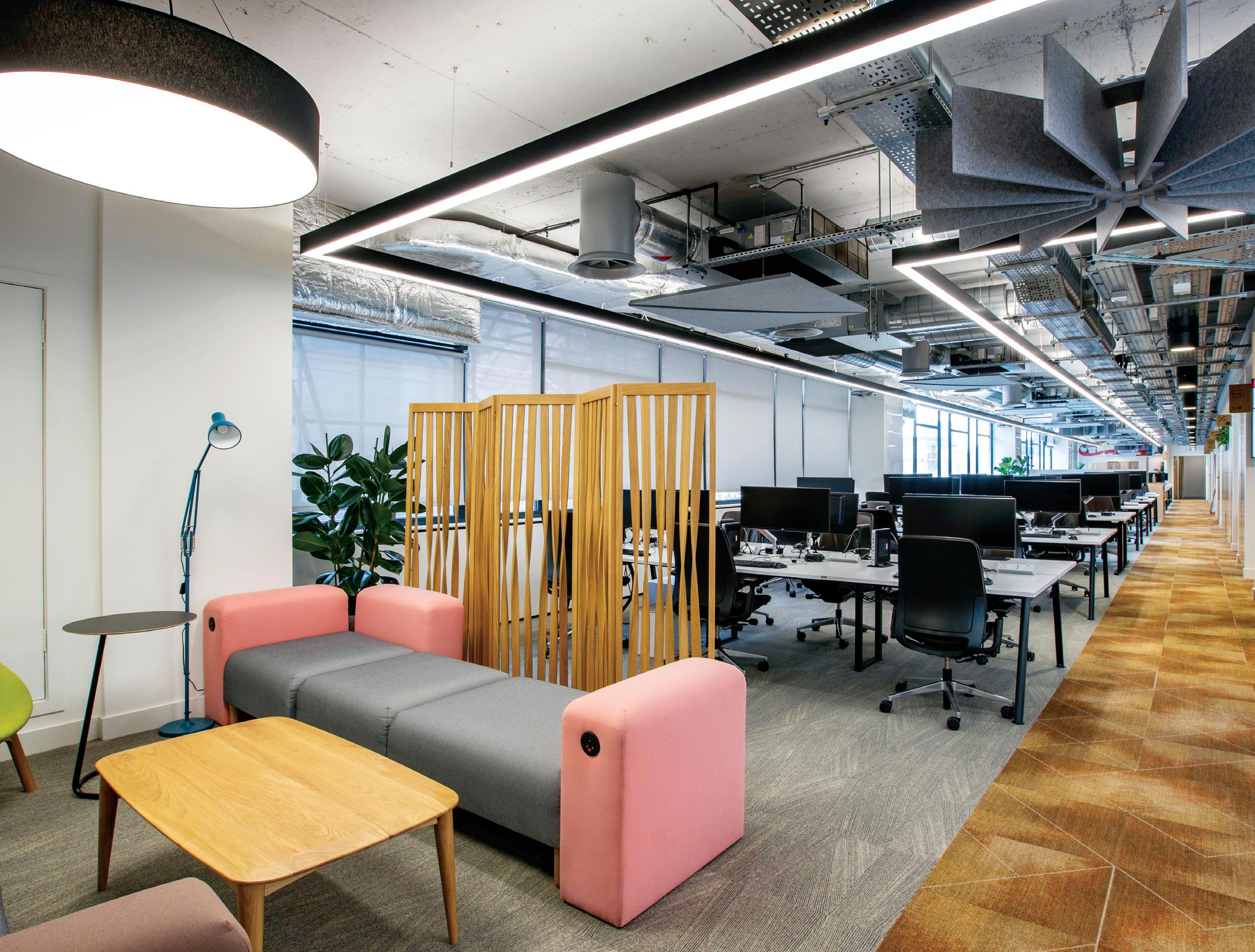
The extreme weather this summer and the terrible floods in Pakistan show the urgency in combatting climate change. Meeting the UK’s 2050 net zero targets may be more daunting for the built environment when you consider that approximately 70 per cent of the country’s non-residential building stock was constructed before the year 2000.
In its guidance paper, ‘Delivering Net Zero: Key Considerations for Commercial Retrofits,’ the UK Green Building Council (UKGBC) argues that if energy and carbon targets are to be achieved, much of the sector will have to undergo some form of retrofit by 2050.

In its report, ‘Building to net zero: costing carbon in construction’, the House of Commons Environmental Audit Committee advises that the retrofit and reuse of buildings, which keeps the carbon locked in, should be prioritised over new build. Only where retrofit is not possible, the EAC recommends the e icient and more e ective use of low-carbon building materials. However, it warns, reforms to permitted development rights appear to have created an incentive for demolition and new-build over retrofit.

Mitakshi Sirsi, a Director at architecture and design practice WILL+Partners and




Chair of the Sustainability Community at CoreNet UK agrees with this synopsis.
“If someone is asking whether we should replace or retrofit, we should retrofit, yet we o en don’t do that. If the building is only 20 years old and there is no problem with it structurally, why bring it down?”
As an architect with expertise in sustainable design, Sirsi is actively engaged in climate-change impact activism and dialogue, and has some valuable insights into how the built environment, design, construction and facilities management must work together to meet the challenges ahead.
Mitakshi Sirsi began her career studying architecture in India and during her training, studied climatology, essentially a course in passive design and understanding the climate context of buildings.
“This got me interested in the environmental impact of what I was doing and the momentum built from there,” she says. “I’ve been lucky enough to have had a wide range of experiences - architect, sustainability consultant, policy researcher and now I’m running a sustainability teamso it’s been an interesting ride.”
Her experiences include working as a researcher for the US Green Building Council (USGBC) chapter in Chicago. This required supporting an Energy Benchmarking Ordinance bill and communicating information to representatives, which she explains, “was an interesting lesson in how to present policies to lawmakers. I realised that they need sector specialists to tell them what needs to be done. You can’t always just blame lawmakers for not getting it right as they rely on the [environmental] experts to explain what’s what.”
She moved to London to complete a masters in environmental design and since then has specialised in environmental sustainability in buildings. At Will+Partners, her and her team support projects from bid to construction, retrofit and new builds, providing design guidance on sustainability in buildings, making sure all the bases are covered on sustainability, including the value chain. She is also involved in directing management policy through research and using training as a tool to incorporate highlevel strategies and certifications through the life cycle of buildings.
“It’s important to ensure that the design team is up to speed and trained in their project’s sustainability needs,” she says, “and we are there to advise on any sustainability queries that clients might have.
“We’ve also done quite a bit of work in the wellness area – for instance I was one of the researchers involved in the BCO ‘Wellness Matters: Health and Wellbeing in o ices’ report. And with increasing focus on ESG we also help our clients understand and set up their ESG strategies, especially those within the built environment sector, because that is our core competency.”
As part of her drive to promote more sustainable design through the application of research, engagement, and a focus on interdisciplinary application; earlier this year, she began serving on the operational committee board of CoreNet UK Chapter as a sustainable community lead.
“We aim to bring people from corporate real estate who are interested in sustainability together. We meet to discuss topical issues, talk about case studies and examples in an informal way, and we also aim to create a platform for knowledge transfer and sharing between people.
“We recently put together a successful roundtable event which looked at the challenges we’re facing and how industry and regulations need to catch up to each other – it’s aimed as the start of a continuing series where we address sustainability topics that are important to CoreNet UK members.”
One of the key issues discussed at the CoreNet Global UK Chapter Sustainability Roundtable event she says is that of embodied carbon and the adoption of the industryproposed amendment to UK Building Regulations 2010, Part Z.
largely overlooked.
But, as Sirsi explains: “It’s been talked about for a long time in construction and it’s only now that people are hearing about it outside the sector, suddenly it’s a big problem to solve, and we need to move faster to measure and manage it. The common-sense thing to do is use a building as much as you can before demolishing it, which is the more straightforward solution.
“The problem is it [embodied carbon] is unregulated at the moment, and construction teams, clients and designers are not required to think about it in depth.”
As the carbon which is embedded into the building during construction or fitouts, embodied carbon is not something you can easily improve or remove after a building is built. Up until recently, within the FM sphere which typically concentrates on operational carbon within the lifecycle of a building, embodied carbon has been largely overlooked.”
As the carbon which is embedded into the building during construction or fitouts, embodied carbon is not something you can easily improve or remove a er a building is built. Up until recently, within the FM sphere which typically concentrates on operational carbon within the lifecycle of a building, embodied carbon has been

This is where Plan Z comes in, with a proposal in the Carbon Emissions (Buildings) Bill to introduce legislation towards mandatory reporting of carbon emissions in the built environment, along with limiting embodied carbon emissions on projects. The proposal has broad industry support, and if enacted would ensure that embodied carbon is assessed on all large projects, as part of a comprehensive whole life carbon assessment. It would also ensure that embodied carbon emissions are capped on all major construction projects - initially through limits on upfront embodied carbon, but over time expanding to cover all aspects of embodied carbon.
Sirsi welcomes this initiative as “an interesting concept and it’s fantastic that the construction industry is pushing regulation,” but she cautions, “a lot of work needs
to be put in to regulated embodied carbon management, to address the retrofit challenge and improve our existing building stock.”
Something of huge importance to FMs operating older and less e icient buildings is that of stranded assets, which as Sirsi describes it, in the buildings context, happens when an asset becomes a liability, and is no longer lettable or usable due to changes in external factors, such as regulations.
She says: “This means [the building] becomes undervalued due to this change before its time. It might for example, happen to buildings because of the Minimum Energy E iciency Standards (MEES) for example, so this is where the refurbishment agenda comes into play as you can retrofit buildings to meet new carbon reduction requirements.”
Financial incentives are another way of addressing this issue. She notes that much of industry best practice is now being pushed by investors and new non-financial disclosure regulations for the larger organisations. Within the commercial building sector, according to the RICS sustainability survey, enhancing the sustainability attributes of a building could enable landlords to command a rent premium, and for those buildings that aren’t green or sustainable these buildings could be given a ‘brown discount’ – discounted rents to compensate for not being sustainable.
Here, argues Sirsi, “the needle needs to move so all green buildings merit a standard rent and
is insulated. This is why we need wide ranging policies that are impactful, and talk about outcomes, both long and short term.”
Another issue which has gained traction within the built environment, not least in the comments made at the Net Zero conference held by Workplace Trends in July, is that of overcoming greenwash in the sector and embracing the concept of ‘disruptive sustainability’.

As a green activist Sirsi admits that the construction industry is slow moving and making radical change is a longer process, but within FM which is on the operational side, it’s more about “making one good decision at a time”.
“Activism is a key part of the process and I’m very for it, I also think technology will make all the di erence by helping people measure and reduce operational carbon. Within FM, technology disruption and PropTech is changing the way we do things and can drive small improvements which can build up quickly to result in larger overall impact.”
She’s also a huge advocate of encouraging the di erent parts of the built environment to work more closely together.
those which are not e icient are forced to go green to compete in the market. People will soon have standard sustainability requirements which buildings must meet and thus the retrofitting drive will start in earnest.”
When it comes to the energy crisis, on the operational side FMs are encouraged to improve the performance of Building Management Systems (BMS) and look into adopting greener HVAC solutions such as communal heating systems and heat pumps, but again argues Sirsi, all these e orts depend on reviewing the lack of green investment in existing buildings.
“Planning a shi in fuel mix, while progressive, isn’t resolving the fundamental problems of the retrofit issue. We are creating a dependency on high energy use due to the ine icient building stock in the UK, and the regulations currently do not address the demand side of the problem su iciently, keeping energy use high, and consequently, our electricity and heat bills rising.
“When we start reducing the energy demand we also create the long term resilience of the building stock, so that if we have less energy available to use, we can still stay just as warm because the building
“Addressing climate change and pursuing sustainability requires what I call the ‘collective individual’, where we need the enlightenment of the individual for the collective to bring about systemic change.
“This should start early, for instance within our education system, but that plan is long term, and unfortunately as fun as it would be, the world isn’t being run by seven-year-olds!” I believe that the climate crisis is as great or a greater challenge as the pandemic, but because it’s not as pressing as COVID, change can be slow. Yet if the world can come together to address a pandemic, I am cautiously hopeful that it can do the same to address the climate crisis.
“We have existing frameworks such as So Landings which have been around forever, but are not always used to their full potential, so we need to embrace training and learn about the impact of our actions in our daily work.”
For her part, Sirsi will continue to promote sustainable design in her day job, share best practice in her CoreNet capacity and is also contributing to the sustainability sections of the upcoming BCO Guide to Fitout, an upgrade to the 2011 edition.
She concludes: “For me, it’s all about outcomes, outcomes, outcomes. We need to understand what the actual impact of our daily actions are likely to be. While we are in serious need of significant improvements in the sector, let’s embrace the incremental ones and make as much di erence as possible.”
Activism is a key part of the process and I’m very for it, I also think technology will make all the di erence by helping people measure and reduce operational carbon. Within FM, technology disruption and PropTech is changing the way we do things and can drive small improvements which can build up quickly to result in larger overall impact”











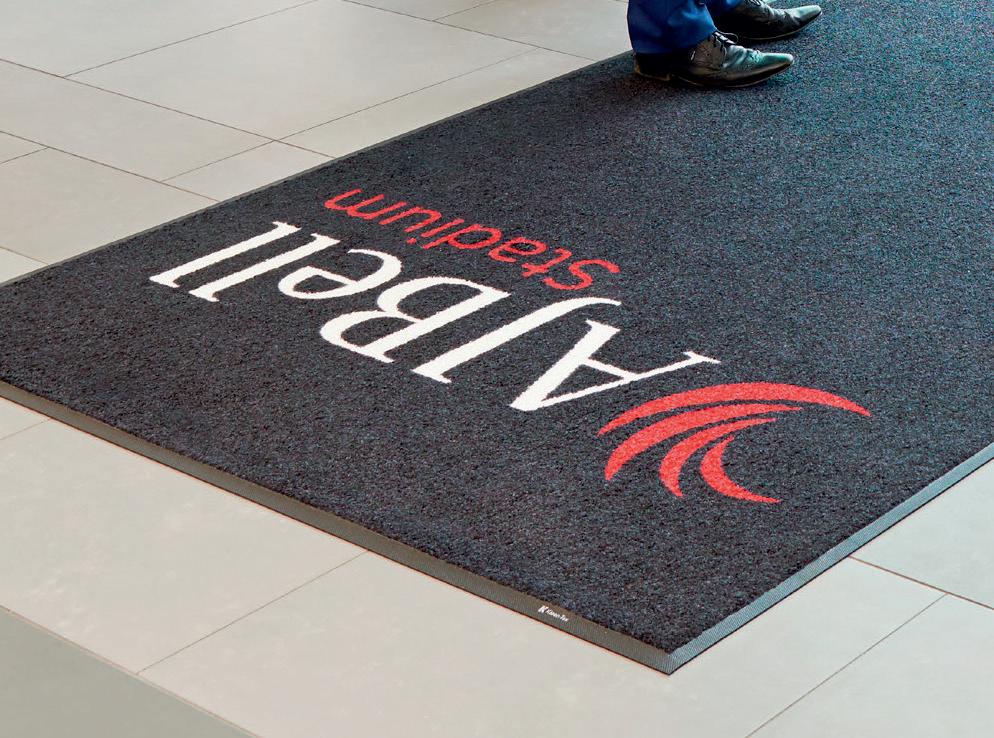

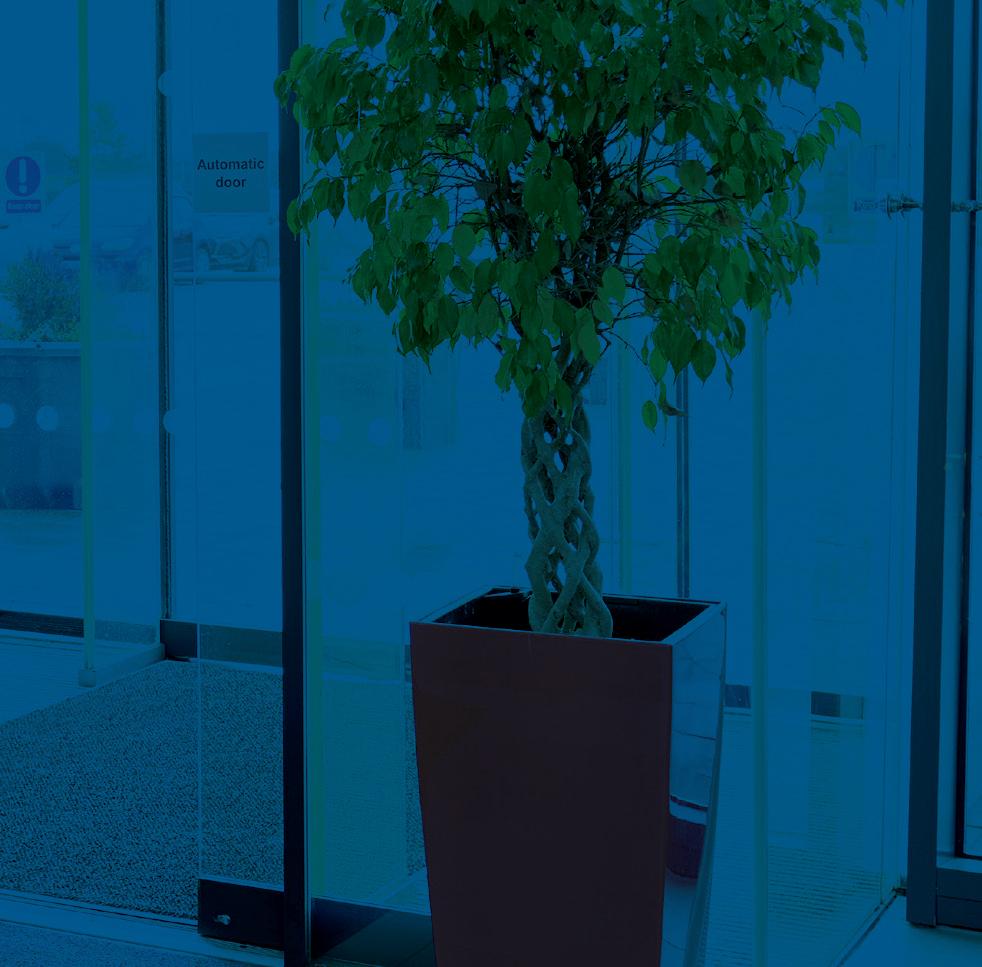

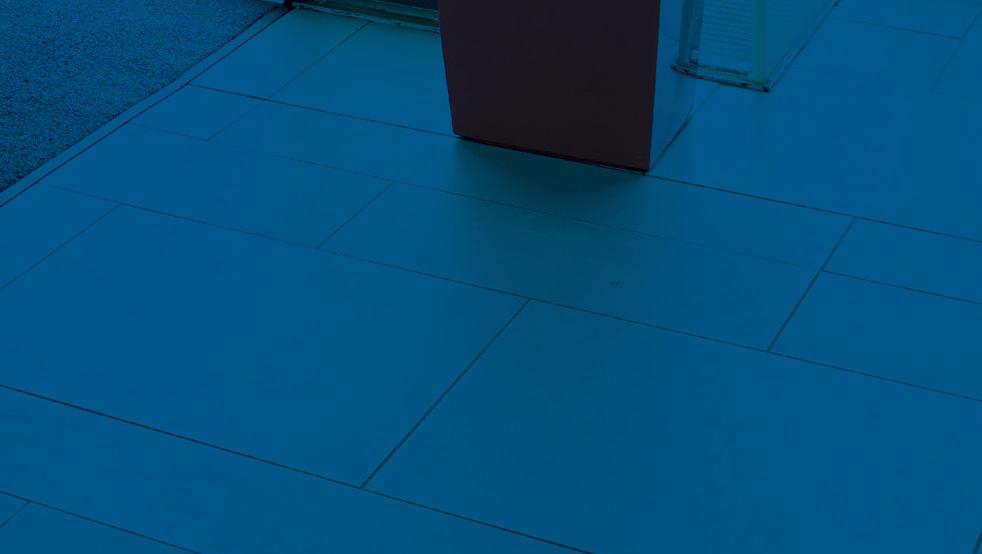
The Internet of Things (IoT) is rapidly becoming an indispensable technology for many facilities managers. Wireless IoT sensors provide a comprehensive, cost-e ective, and simple method of data collection, allowing businesses to utilise this data in various ways to benefit occupants, operational and energy e iciency, and security.
However, for many FMs, the potential of IoT remains untapped, with concerns relating to security being the greatest barrier to IoT adoption. This prevents them from accessing cutting-edge technology and reduces their potential for driving e iciencies within their buildings. How can IoT security weak points be addressed so that both facilities managers and tenants can feel confident that their data and

IoT solutions come in many forms, and they all carry the question of how they’ll keep your critical systems and data secure. Almost all contemporary technology comes with the risk of being open to cyber threats. In the event of a cyber-attack, you not only risk losing data or having sensitive data leaked, but having information altered or processes disrupted, leading to equipment misfiring or even system shutdown. This can be expensive and timeconsuming to resolve and carries a great risk of reputational damage. At a time of limited resources and intense competition, facilities management companies can’t
a ord to lag behind their peers, and security concerns shouldn’t prevent them from adopting IoT technology if it can increase e iciency.
Rather than simply avoiding IoT in order to evade the risks, it’s better to take steps toward understanding those risks, what they could mean and how to assess the security controls of any IoT solution.
The main problem with IoT architecture and security is that any IoT ecosystem will involve the linking of multiple di erent technologies. The more systems and technologies you have working together, the greater the potential for

IoT expert Pippa Boothman VP Marketing & Communications at Norwegian tech company Disruptive Technologies, the developer of the world’s smallest wireless sensors and IoT infrastructure, explains how to address IoT security weak points
the introduction of malware and security breaches. Unless you have the proper controls in place, managing the ways in which each technology product connects with the others, it becomes possible for those with ill intent to exploit security vulnerabilities in one area in order to gain access to the entire system - usually, without being detected. Many raced to be the first to launch first-generation IoT systems, and unfortunately, security wasn’t a primary concern. Now, it is key to ensure that the systems in place are capable of controlling any security threat.
The problem is that most IoT solutions involve a huge diversity of machine-tomachine connections, and that makes tackling the overall security complex; particularly when each component –hardware, applications, firmware, networks – is typically developed and managed by a di erent company. This means that it can o en be unclear who is responsible for managing security across the system as a whole, making it more di icult for you to ensure that your entire system has the security protocols it requires.


This is especially true in Industrial IoT, where legacy hardware and so ware are frequently incorporated into an advanced, connected solution. The older components are used to perform new functions far beyond their original intent and without the security controls of new devices built into their code. This adds a further burden of responsibility to the newer IoT architecture, which may not have the capacity to handle the additional threat.
First-generation IoT solutions typically rely on generic gateways as a node (i.e. the connection point among network devices to connect sensors, devices, equipment, and the cloud). They can also be used to translate protocols and exchange






















information. But they are notoriously vulnerable to attack, presenting single points of failure and inviting what are commonly known as ‘man-in-the-middle cyber attacks’ (MitM). This is where the intruder secretly intercepts and relays messages between two parties who believe they are engaged in private communication. This is essentially digital eavesdropping, and it provides the attacker with ample opportunity to intercept, capture, and manipulate sensitive information.
approaching the security of IoT. The first is size. It is much harder to electrically attach to a tiny device, making it more di icult to break into. This will reduce the probability that someone makes the required e ort, although it would not stop a serious attacker.
communication. This is essentially digital
System login details—providing unlimited system access which they can return to at any future point—or debit card numbers are examples, and they do this in realtime. Critically, this means that because the attackers are masquerading as authorised users, their system infiltration can o en go undetected for long periods of time, allowing them to syphon data and wreak havoc within the system.
Bolted-on solutions rarely work.
While it can provide a degree of protection, security as an afterthought is rarely as e ective as security that has been prioritised from the start and built into the IoT solution, something that has been intensely tested and proven to be secure. But even in that case, it’s a clear fact that the simpler the IoT architecture is, the smaller the risks become.”
Bolted-on solutions rarely work. While it can provide a degree of protection, security as an a erthought is rarely as e ective as security that has been prioritised from the start and built into the IoT solution, something that has been intensely tested and proven to be secure. But even in that case, it’s a clear fact that the simpler the IoT architecture is, the smaller the risks become.
Take smart sensors, for example. There are multiple smart sensor designs. Some are integrated, some can be operated externally. Some are wired, others wireless. But when you make a smart sensor that can be used independently, free of legacy system integration, working on its own unique network, with no wires going in and nothing coming out, you significantly mitigate the risk of intrusion. The simpler the system, the fewer the entry points and areas of weakness.


There are two prongs of attack when




The second is to develop the security system together with the sensors from the start. The protocol, SDS, uses end-to-end encryption where the data is encrypted inside the sensor and kept encrypted all the way until it is safely received in the cloud. The sensor messages are only relayed by the Cloud Connectors and are never decrypted by other devices before they end up in the cloud. The encrypted communication link between the sensor and the cloud is designed to avoid MitM attacks. This architecture significantly reduces the number of attack vectors, making the Disruptive Technologies sensors among the most secure in the market.
system together with the sensors from end-to-end encryption where encrypted only relayed other devices
IoT-based technology is widely acknowledged as the future of facilities management. It has the potential to create significant e iciencies in every building. However, until the issue of security is addressed, there is a barrier to making systemic changes that could transform the way buildings are managed.
information, with 333.2 billion emails estimated to be sent and received every day within the UK. However, according to VIPRE’s whitepaper: “Email is the most commonly exploited threat vector by cybercriminals who use it to spread malware, including ransomware”. Consequently, it is becoming increasingly vital for businesses to strengthen their email security, particularly with confidential, valuable and potentially sensitive information being shared across the internet.
There is a range of technological solutions available to strengthen email security, with tools such as ‘sandboxing’ blocking malware before it can enter a network – in turn, giving the user and organisation continued control of the email and network access points, while preventing suspicious emails and/or links from entering a user’s inbox.
Furthermore, security email tools that prompt the user to double-check an email before sending it are valuable to avoid any costly mistakes from occurring. The user can be alerted with questions such as: ‘Are your recipients the right people to share this information with?’ or ‘Have you attached the correct document?’ Thus, users are reminded to make sensible decisions through the support of this technology, while continuing to notify them about any possible data leakages or threats in advance.
Earlier this year, VIPRE released its latest whitepaper, How to Stem the Flow of Ransomware highlighting that by investing in a multi-faceted cybersecurity strategy, businesses can strengthen their protection against ransomware attacks – recently declared the most significant cyber threat facing the United Kingdom.
Ransomware is not an unfamiliar concept. However, the magnitude of attacks has advanced through increased frequency and sophistication, targeting businesses of all sizes and industries. Recent research has spotlighted cybercriminals’ tendencies to exploit the introduction of hybrid working to launch attacks on remote workers, with the Information Commissioner’s O ice (ICO) revealing an increase in ransomware attacks – rising by 66 per cent between 2020 to 2021.
The first line of defence in safeguarding organisations from cyber-attacks falls upon the human workforce. As the end-users, it is their responsibility to make the final call on whether to download an external file or send sensitive information. Nevertheless, it is unavoidable for humans to make mistakes. Common internal errors include emailing the incorrect person, downloading malicious attachments or clicking on phishing links – making up 95 per cent of data breaches. Such mistakes can cause severe repercussions for businesses of all sizes; such as
financial damage through both ransom demands and business disruption, in addition to damaging a company’s reputation and provoking a loss of productivity.
According to research by IBM, ransom demands can reach up to £31 million on average. And, unfortunately, paying ransom to a cybercriminal doesn’t guarantee the return or unencryption of data, with stolen data continuing to remain at risk of being leaked. Therefore, providing the workforce with the required knowledge and support against ransomware attacks is fundamental to avoiding them altogether.

Prioritising education surrounding ransomware attacks is crucial for minimising human risk. As part of this, all workplaces should o er consistent security awareness training – as opposed to an annual ‘tick box’ exercise. Regular security awareness training will strengthen a user’s understanding of potential cyber threats, and more importantly, help to prepare them to prevent these attacks. A business’s first line of defence must be secure, or else it creates vulnerabilities for attacks to take place. In turn, empowering users with confidence and self-trust is of extreme importance within a business’s overall cybersecurity strategy to achieve maximum prevention.
Undeniably, email remains an indispensable tool for both the internal and external exchange of
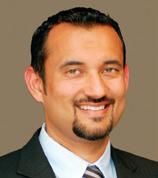
Damage limitation and containment are crucial from the start of any cyber-attack, placing significance for businesses to have a recovery plan in place. Implementing a contingency plan will benefit not only the business, but its stakeholders and similar organisations, both short-term and long-term. While minimising disruption and ensuring the business can get back up and running, it also allows the organisation to continue to learn from potential errors.
Once a threat has passed, a retrospective audit of what happened should be conducted. This data can then be shared across businesses in an attempt to develop a faultless security approach, and reduce the possibility of future recurrences. Prevention is better than cure. However, in the event of an attack, having a dependable ransomware response plan prepared is key for business continuity and to minimise any detrimental consequences that could arise from data loss, for both customers and stakeholders.
Combining email protection, regular security awareness and a recovery plan to create a multifaceted approach is fundamental in transforming and strengthening security measures. For maximum protection, it is best that these security strategies work alongside one another – rather than separately, to provide businesses with 360-degree protection against the modern threat landscape. This means that businesses and their users will be given the confidence and reassurance they need, closing the door on any potential gaps for attackers to take advantage.
To take action against ransomware attacks, organisations must embrace a layered cybersecurity approach – which includes a combination of IT and business processes, employee awareness and software, explains Usman Choudhary, Chief Product O cer of VIPRE







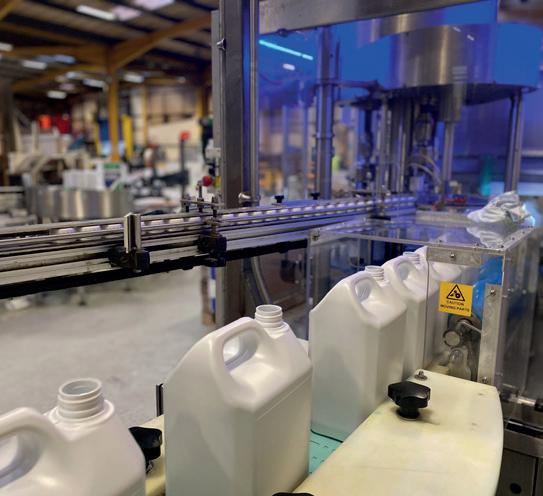

So much has happened in the last two and a half years that the role of the o ice and its running is unrecognisable compared with spring 2020. Research released in summer 2022 from real estate firm Savills into occupancy levels on the average number of o ice workers in a workspace over the course of a working week in the central business district of various European cities confirms this. It found that the City of London has one of the lowest occupancy rates at 32 per cent (the West End faring a little better at 38 per cent) with Paris topping the chart at 54 per cent, closely followed by Madrid at 52 per cent.
Meanwhile in figures released in May, the O ice for National Statistics (ONS) reported that 84 per cent of workers who had worked from home during the Covid-19 pandemic planned to continue a mix of WFH and o icebased activity. The hybrid model of working seems here to stay.
Lighting is one area that can support hybrid working patterns. Lighting control specialists Prolojik has worked on a number of o ice schemes where its technology is able to assist facilities managers and other stakeholders with identifying unoccupied
areas of a building and avoiding wasting energy on them. Its Plexus system was supplied and installed at Bloom, an o ice project in London’s Farringdon area. Here, developer HB Reavis wanted to make this 144,000 sq. mix of work, retail and amenity space world-class in terms of connectivity and flexibility. To this end, the first floor is given over to Ready To Work, (RTW) HB Reavis’ tech-enabled workspace area.
In a collaboration with Symbiosy, the Plexus system took a traditional Dali lighting system to incorporate high-end features such as space utilisation. Using the results from the dashboard about how tenants are using the space, the developer can now guide
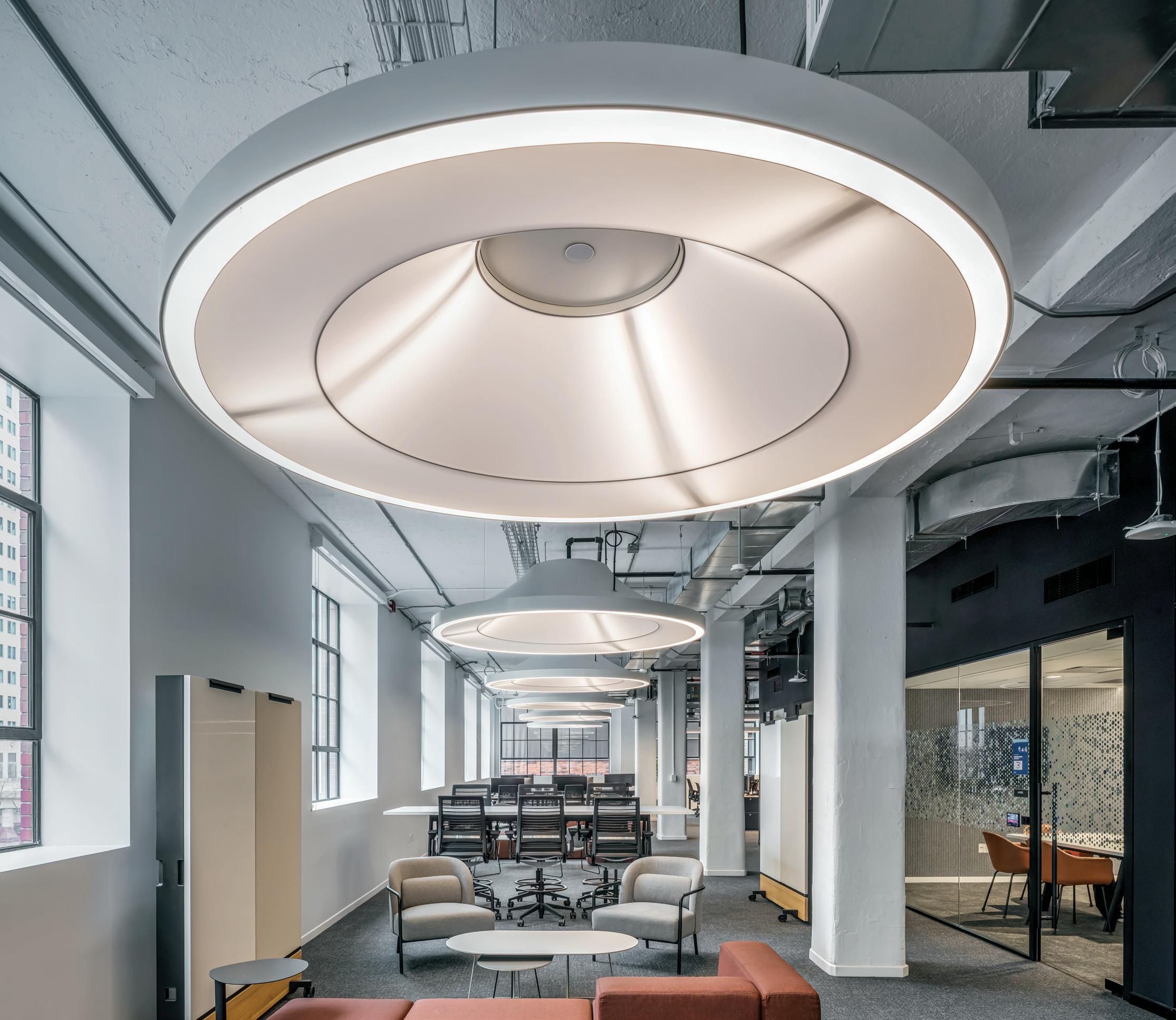
them about their space needs. Now with the ability to control and adapt the system by third parties, the system not only allows for energy e iciencies but better overall future proofing of the building, working with the Building Management System (BMS) to obtain data about space usage and user control. All of this forms part of the Internet of Things (IoT) which means that depending on where people are, regular adjustments can be made to the track lighting in the main workspace area and the adjustable lighting in the meeting rooms, as well as temperature control and HVAC.
Having a more joined up approach to both lighting and HVAC is something facilities managers can expect to see more. Heating and cooling system specialist Artus and commercial lighting manufacturer FUTURE Designs launched the Multi Service Unit (MSU) earlier this year. This purposedesigned multi-functional system gives those charged with running buildings the opportunity to o er a more sustainable and comfortable environment for their occupants. This chimes nicely with the ‘flight to quality’ argument currently being discussed in the o ice sector. Organisations are keen to fitout the workspace in their buildings with a high spec to help maintain their desired occupancy levels, support the move towards hybrid working, as well as attract and retain top talent. The MSU’s functionality is threefold: an advanced patented air conditioning system, intelligent lighting system and Class A acoustics. The advantages of consolidating traditionally separated services supports architectural integration with one point of contact, putting HVAC, lighting and acoustics into one to help reduce time and costs across all building phases with quantifiable energy, carbon (embodied and operational) and space savings. Because there is a reduction in packaging, mounting points and coordination, this also has a positive environmental impact.

Giving employees more freedom in where they work in the post-pandemic o ice has several strands, all of which involves FM planning. Firstly, the location: if sta are working from home in a hybrid working set up, how much responsibility does the FM have for the WFH set up in terms of the correct levels of lighting, desk height etc? When the workforce is in the o ice are sta able to customise how they work? This is where we could see a return to the task lighting which, enables people to have more
autonomy about how their workstations are lit, particularly for those that require better luminance.
Humanscale’s Nova, for instance, is designed to complement any work surface and enhance any workstyle. Its highly sculptural, striking form can be adapted to suit the requirements of the user, with the custom lens and LED array creating a uniform pool of glarefree light wherever needed.
Nova is also ENERGY STAR®-certified, an internationally recognised mark of high e iciency.


















While once o ice lighting was characterised by quite cold fluorescent strips, today things are quite di erent, particularly post-pandemic. Lighting in the workplace has evolved to give a much so er, more domestic feel, perfect for those more used to working at home. For instance the Aero 313 light fitting is designed specifically for the Marquette Building in Detroit. This building is the latest in a series of campuses BDG architecture + design has created for creative transformation company WPP.
These lights are manufactured from laser-cut aluminium, chosen for its lightweight properties, which is then powder-coated white.
Around a continuous circle of LED lighting, there are three layers of fire-rated stretch fabric, coloured white on the underside so that light can di use and reflect. The mounted LED strip supports the internal back lighting of stretched fabric to provide di used light across the face of the luminaire, which provides optimal illumination without unwanted glare. The
have found a creative, non-traditional
The advantages of consolidating traditionally separated services supports architectural integration with one point of contact, putting HVAC, lighting and acoustics into one to help reduce time and costs across all building phases with quantifiable energy, carbon and space savings.”
by BDG to a fully functional o ice light manufactured by FUTURE Designs
with the first full prototype made
wooden crates to transport luminaires were craned into the windows of the Marquette Building. The Aero 313 has
large-scale luminaire, measuring 2235mm in diameter and 550mm deep, incorporates a number of practical requirements such as sprinklers, M+E systems, speakers and smoke detectors. In this way, the designers have found a creative, non-traditional way to approach the ceiling and acoustics budget. The journey from initial sketch by BDG to a fully functional o ice light manufactured by FUTURE Designs took place during the pandemic, with the first full prototype made in May 2020 and manufacturing beginning just a month later. The initial shipment was dispatched in October of that same year. FUTURE Designs also manufactured bespoke wooden crates to transport the luminaires, which are fully reusable with no pallets, card or shrink wrap packaging, to minimise weight and reduce any corresponding environmental impact. Upon arrival, the luminaires were craned into the windows of the Marquette Building. The Aero 313 has a simple three point install with pre-wired power lead for added ease of assembly.
As we evolve to a post-pandemic workplace, the FM community as well as real estate and HR teams will have to work hard together to provide o ice spaces that are more flexible and better able to deal with the ramifications of hybrid working. It’s clear to see lighting is a crucial part of this way forward for the workplace.
FMs can have a significant impact on the whole life carbon footprint of the lighting they manage. Some of the changes that can be made are relatively simple, whereas others may need the involvement and support of customers.

Where installed fittings are already based on e icient LED technology, a “repair first” strategy is more resource e icient, and has a lower carbon footprint, because the embedded carbon in the light fitting itself is not lost. Clearly not all fittings are repairable, but where this is an option, it should always be the first consideration.
Awareness that replacing old product with new does not usually represent the best outcome for end of life luminaires is much higher. Even when the waste products are recycled, that is still a suboptimal environmental outcome.
There are still many large -scale installations of traditionally lamped light fittings. Upgrading those to LED is absolutely correct. The carbon footprint of the use phase of most lighting products is by far the largest part of their whole life carbon footprint, and usually dwarfs the carbon footprint of manufacture and transport. But an even better outcome, is to upgrade any existing fluorescent fittings by simply retrofitting gear trays/light sources. An increasing number of lighting manufacturers are now o ering this service.
A few companies within the lighting industry are starting to o er remanufactured/refurbished light
fittings. Such fittings are more resource e icient, and will almost always have a lower carbon footprint than new products. Specifying and selecting remanufactured products will help this sector to grow.
A standard for the remanufacture of luminaires is currently under development – once finalised and published, BS8887 will give specifiers and end users the confidence that remanufactured products can be installed with confidence.
Where there are no options for repair, upgrade or remanufactured products, specify modular/ repairable fittings. That means that if one critical component fails in use, the component can be replaced without having to replace the complete fitting. This improves resource e iciency and saves the embedded carbon footprint associated with making new products.
Where fittings are replaced, handle the old fittings with care. If handled correctly, they could be sent for remanufacture, rather than simply recycled. But to be remanufactured, it is vital that they are kept in “as removed” condition.
Where the new fittings are purchased from a Recolight scheme member, then Recolight may be able to direct old fittings to a remanufacturer. For this to be successful, careful removal of the fittings is vital. They should be removed as though they were intended for reinstallation. For example, this means avoiding damage to the housing, placing the fitting on the floor rather than dropping the fitting, and avoiding the use of inappropriate tools.
Any gas discharge lamps should be removed and set aside for collection and recycling.
The fittings should be wrapped appropriately, for example with “cardboard bubble wrap” (which Recolight will supply) to prevent damage, palletised, and shrink wrapped. All fittings should be stored indoors prior to collection by Recolight.
When specifying new fittings, include a requirement for demonstrable commitments to net zero in the purchasing or tender criteria. Even better, give that requirement a visible and material weighting in the bid assessment process. It is important to check that any such claims are credible so there are a number of ways of checking the reality of the claims:
Is there visible commitment to the policy from the top of the company?
Has the company set short-term plans, actions and targets, not just a long-term “Net zero by 20X0” target?

Check the extent of the target. For example, many companies have a target for 2030, but with a disclaimer that it only covers scope 1 and 2. But for most, the scope 3 use phase is by far the most dominant impact.
Is the company’s net zero performance regularly assessed by an independent 3rd party?
Has the company any life cycle assessment data for their products?
To what extent does the company rely on carbon o sets? O sets should only cover absolutely unavoidable, irreducible carbon emissions. And even then, they don’t really work. If the company does use o sets, do they have a plan to reduce reliance?
Avoid companies that use the phrase “carbon neutral” - in all likelihood, they will have relied heavily on o sets, rather than changing business practices.
When specifying new fittings, include demonstrable commitments to the circular economy in the purchasing criteria. Currently, the best way of incorporating this is probably to reference SLL/ CIBSE’s TM66 specification. The specification scores a product group against a range of criteria to show the extent to which it embeds circular economy principles. It is currently in beta release, and some of the criteria cannot be reliably and objectively assessed, but it is close. When finalised, TM66 should make it much more straightforward for specifiers to compare the “circularity” of lighting products.
Nigel Harvey, CEO of Recolight, the WEEE compliance scheme for the lighting industry, outlines how FMs can incorporate environmental considerations into lighting OCTOBER 202242 FOCUS LIGHTING ENLIGHTENED ENVIRONMENT







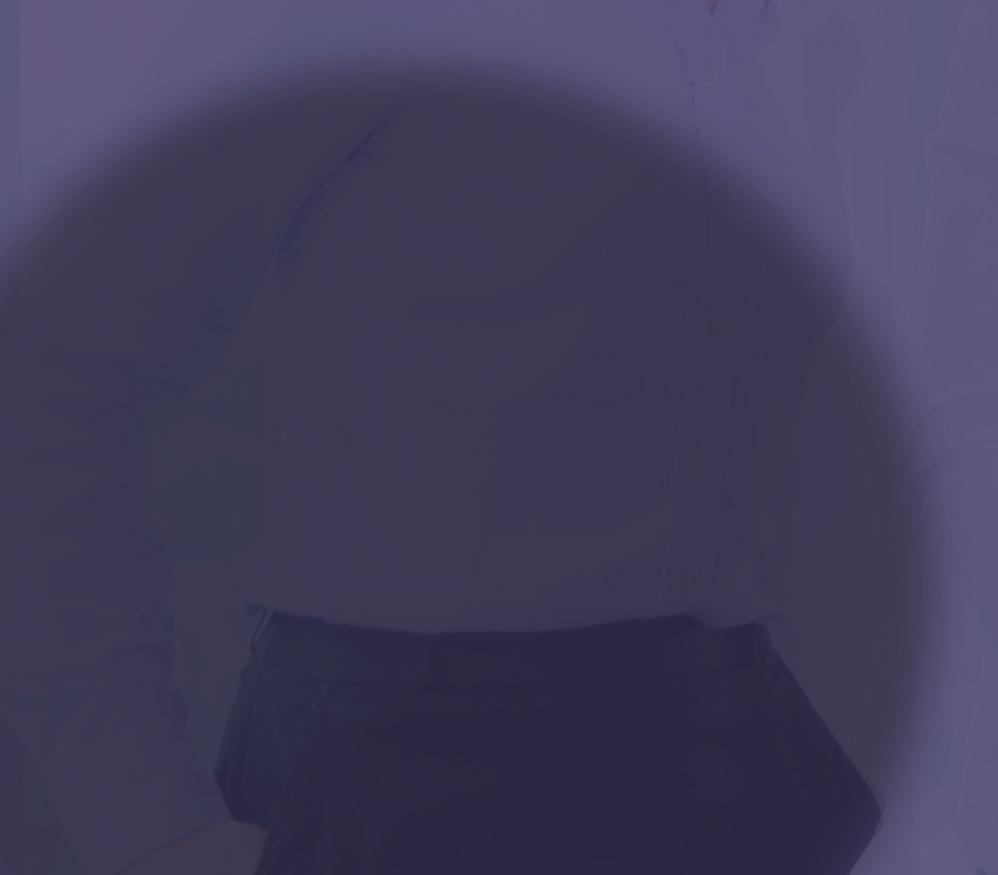




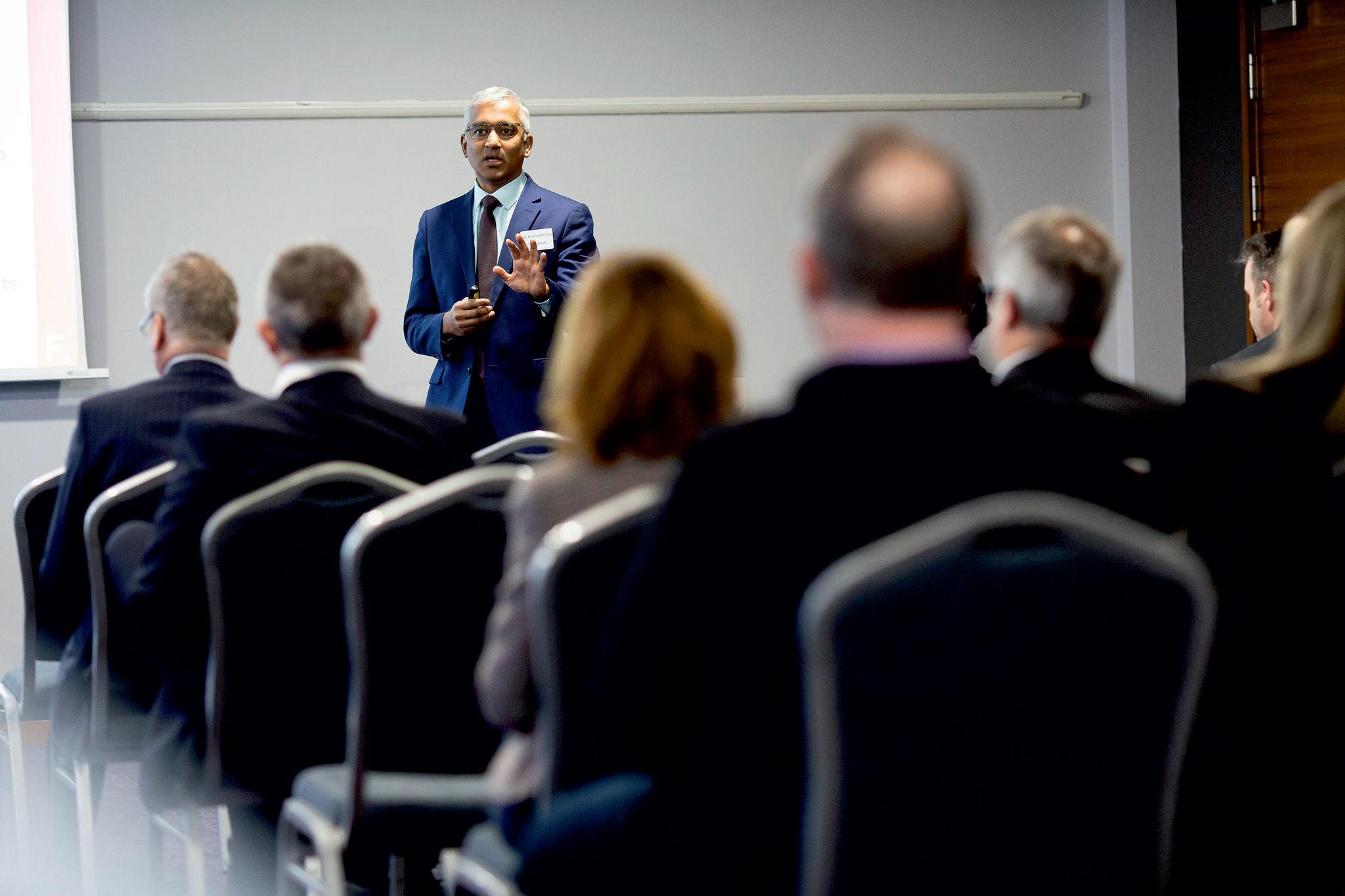


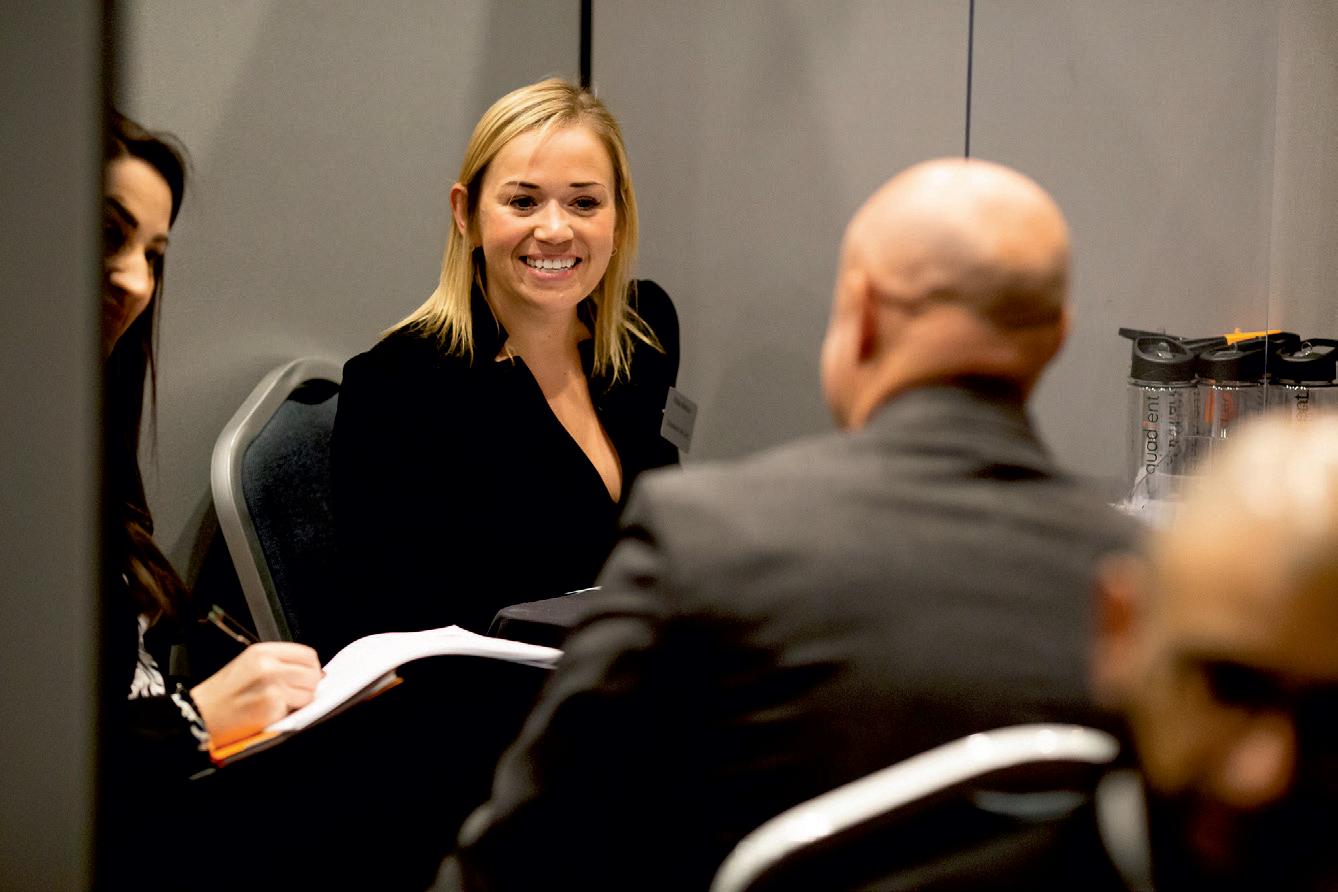

Following the recent update to British Standard 8580-2: Risk assessments for Pseudomonas aeruginosa and other waterborne pathogens, Armitage Shanks brought together experts from across the healthcare sector at the company’s London Specification and Design Centre in Clerkenwell. Attendees included clinical leads responsible for infection control, water services managers, engineers, contract managers, microbiologists, and scientific writers, alongside innovation and specification representatives from Armitage Shanks.
Healthcare-associated infections (HCAIs), such as those caused by waterborne pathogens, have a significant impact in the UK, causing thousands of days of absenteeism for healthcare professionals, millions of occupied hospital bed days, and billions in costs for the NHS. Adding to this, HCAI’s can cause considerable harm and distress to patients, many of whom are already seriously ill.
When looking at areas where facilities managers can be extra vigilant, hospital complexes play host to ‘goldilocks zones’ for pathogens where water supply systems provide the perfect temperature and moisture conditions for them to prosper. With the far-reaching nature of these systems, it’s not just healthcare professionals who now must beware
of the dangers, but anyone who has contact with the water supply system, including manufacturers, engineers, construction managers and, crucially those in charge of ongoing maintenance.
Earlier in 2022, the British Standard 8580-2 was issued to engage with these issues and assess how teams may collaboratively approach and prevent waterborne infections. The Standard revisits the risk assessment process, and provides a step-by-step guide that is accessible for those conducting them, regardless of team and for the facilities mangers who are in charge.
A key part of the revised Standard, the need to engage a diverse crosssection of roles is clear to see. In part this is through the Standard’s focus on the risk assessment processes and its aims to create absolute clarity in its results. Red/amber/green rating systems are encouraged to ensure clarity, as numerical scales can be independently interpreted while a risk rating of ‘red’ leaves no room for doubt.
The added clarity and step-bystep process rea irm the bottom line of the Standard, which aims to raise awareness of HCAIs caused by waterborne infection and broaden
responsibility throughout teams and facilities managers.
The gold standard suggested is a multi-disciplinary approach that can foresee risks, while working to guard against infection at every stage – from hospital CEO to clinical teams and, significantly, FMs.
In practice, the scope of people who have contact with water systems in healthcare settings, the terms on which they work, and the diversity of training and experience are all substantial barriers to ensuring this multi-disciplinary approach can be adopted. It’s therefore key for teams to come together under one direction with FMs helping to assess the wider role and engage all of those involved.
FMs need to be key drivers in raising awareness around the waterborne pathogens as well as in delivering the education and training necessary to combat and prevent the issues and dangers they present. It became clear at the forum that responsibility for delivery, alongside the variety of jobs and internal structures in place across facilities are causing blockers in putting e ective measures in place.
With the expansion of responsibility beyond, new priorities and challenges quickly become clear – here FMs must play a critical role in balancing the
needs of the multi-disciplinary team and engaging teams, from clinicians to maintenance sta . With some parts of the team having more familiarity with the risks and prevention methods than others, robust and ongoing training will be key to successfully mitigating water safety risks.
By linking the practical steps team members can take to reduce risks with the tangible benefits their actions bring, it can also help ensure and clarify the need for implementing these measures and the necessity to protect all parties. In particular, with the added threat to patients and carryon e ects for healthcare professionals, FMs for hospitals and healthcare settings need to ensure the full team is equipped with the knowledge and understanding to prevent the spread of waterborne pathogens.
Universal competency was raised as the end goal of training strategies, with comprehensive, engaging and detailed training as the route leading to this.
The consensus of the forum was that FMs will have a key role to play in progressing implementation of the Standard, each individual will have to take responsibility – from installation and maintenance to usage throughout the multidisciplinary team. However, this responsibility does not solely lie with FMs and the way forward is undoubtedly a holistic approach founded on a basis of knowledge, competency and collaboration.
For those who attended the discussion, it was an opportunity to share insights from their own areas of expertise and understand the issues from di erent perspectives.

For Armitage Shanks, it was a chance to better define and update its understanding of the role it plays in serving the needs of its users, reiterating its commitment to supporting FMs and the environments they operate in.
For more information, visit: https://bit.ly/3rfpIni
Anil Madan, Non-Residential Marketing Manager at Ideal Standard reports on an event to discuss waterborne pathogens and the role of facilities managers and multi-disciplinary teams in healthcare FOCUS HEALTH AND SAFETY WATER SAFETY FORUMIn a world of mounting environmental concerns, it’s little wonder that sustainability has become a priority. Everyone’s talking about it. From the smallest businesses to the largest enterprises, every organisation is looking to reduce its impact on the environment – but finding ways to do this isn’t always easy.
Indeed, with numerous sustainability goals, everchanging standards, evolving agendas and vigorous hygiene requirements to meet, contributing towards a greener environment may seem like an overwhelming challenge for many facilities management businesses. And where do you even start when there are so many areas of the business to consider?
One vital service that’s sometimes overlooked when it comes to improving an organisation’s green credentials is cleaning. Even though maintaining hygienic facilities is essential for every facilities management business, it’s not always the first place an organisation may focus on to make changes. But perhaps it should:



From reducing carbon footprint when cleaning, to meeting and exceeding industry sustainability standards, to reducing waste and consumables usage – the impact of driving sustainable practices through an organisation’s cleaning function can be considerable. And that’s before mentioning the potential positive knock-on e ects of working with responsible partners and end customers.
However, whether the goal is to use less water,
save energy or reduce emissions, it requires the right products with the right service and solutions. And that’s why Kärcher Professional is partnering with facilities management businesses of all sizes to provide them with the high-quality equipment and expertise to increase productivity while driving sustainability.
By using Kärcher’s market-leading products, specialist service and support, facilities management businesses can start to reduce their carbon footprint, meet their sustainability targets, and keep cleaning – responsibly. They can ensure they’re an appealing supplier to procurement teams looking for green partners and help meet their clients’ sustainability goals too.
It may sound like a step change – and it is. However, Kärcher’s goal is to help organisations take small steps towards their sustainability goals. It’s all about championing a greener environment one clean at a time.
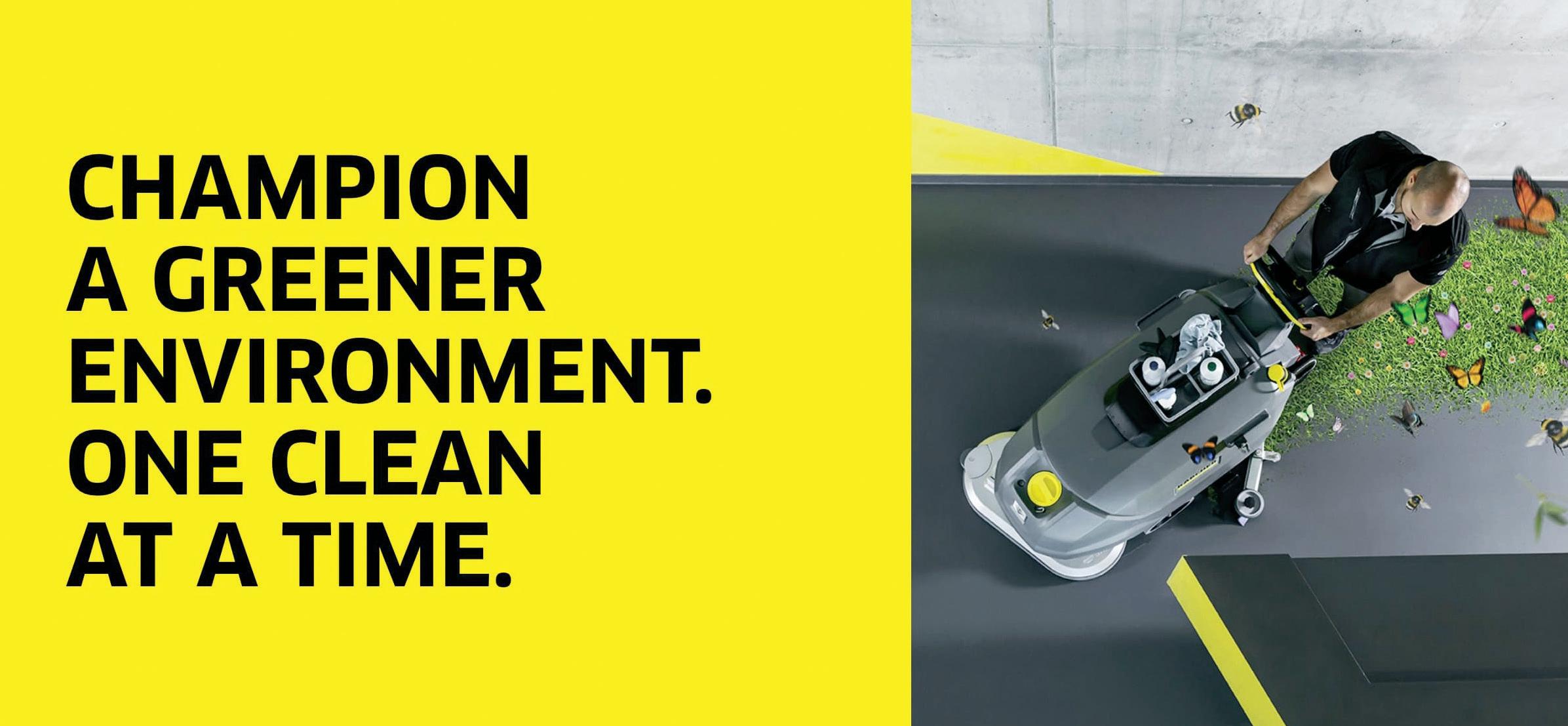
For example, renowned professional services company, PricewaterhouseCoopers (PwC), wanted to reduce its energy bill by turning lights o an hour earlier at night. Kärcher worked alongside leading facilities management services organisation, Atalian-Servest, to provide a solution that could clean an hour quicker at all of PwC’s o ices.

It’s in this way that Kärcher drives innovation, constantly striving toward greener, more e icient outcomes. And all Kärcher’s products are ecoe icient by design. With their eco!e iciency mode

engaged, Kärcher products can reduce energy and water consumption – using brushless motors and Li-ion batteries to deliver results. But that’s not all.
High pressure cleaning with eco!e iciency can lead to increased intervals between services, and the exact dosage of detergents means less wastage too. Meanwhile, scrubber drying with eco!e iciency can result in a 30 per cent reduction in vacuum power and lowered noise levels thanks to noiseabsorbing roller brushes.
In fact, Kärcher’s commitment to sustainability permeates everything it does. Whether it’s the sustainable way in which its products are produced and transported; its responsible approach to machine end of lifecycle; or the initiatives in place at its UK head o ice such as electric charging points and tree planting initiatives, Kärcher cares. And with Kärcher Academy training programmes, which are designed to help operators use equipment in the most environmentally friendly way, Kärcher provides organisations with guidance on everyday sustainable cleaning practices.
With a deep understanding of facilities management, and the awareness that managing multiple teams across multiple sites can take up a lot of energy – in every sense – Kärcher is the leading professional cleaning solutions provider you can rely on. With the widest range of expertly engineered cleaning equipment, market-leading service and world-class support, why choose anyone else?
Lavazza Professional has unveiled its 24/7 self-service micro café for businesses across the UK: Moments by Lavazza Professional. Placing premium Lavazza co ee at its heart, this new modular micro market is designed to be a hassle-free alternative to canteens and provides organisations with a vibrant hub to fuel workplace productivity and drive sta engagement.
Research has shown 85 per cent of employees feel that quality co ee increases productivity and improves morale, making it an important element of the post-pandemic workplace as business look to attract and retain talent.
Ashley Weller, UK Market Director at Lavazza Professional, comments: “We are delighted to be bringing this new o er to market. Whether it is time spent getting to know new colleagues, collaborating on new ideas and projects, or quiet time prepping
for a productive a ernoon, every moment counts. By bringing the best elements of co ee culture into the workplace, businesses of all sizes can engage, and delight employees returning to the o ice and reap the rewards.”
The micro café centres around the ultimate Lavazza co ee experience, with Bean to Cup co ee machines serving premium espresso-based drinks, including
lattes and cappuccinos, using Lavazza expertly roasted Arabica and Robusta beans. Products in the micro café can be paid for using unattended payment stations, via a central kiosk or smartphone app. Smart fridges are also available that come with built-in payment systems, providing an extra layer of security – all options help to reduce overhead costs and make day-to-day management more e icient than expensive canteens.
In addition to premium Lavazza co ee, the one-stop-shop will also o er a varied menu of traditional vending snacks and cold drinks, plus fresh food such as wraps and sushi from more of Britain’s best loved brands.

The Moments by Lavazza Professional bespoke design radiates a sleek, premium experience and is supported by a world-class fully managed service, ensuring every business can benefit from the power of authentic Italian co ee.
www.lavazzapro.co.uk/systems/micro-cafe/



Noise-induced hearing loss is one of the world’s most commonly reported physical diseases – particularly in the workplace. It’s an accumulated ailment that increases at every time of over-exposure to noise. The bad news is that hearing loss can be permanent.
That’s why Hellberg Safety’s new and improved noise protection technology has been developed to deliver the most advanced passive and active protection for a variety of risk environments.
The SECURE series features a choice of basic or multi-functional ear defenders and communication solutions, which are available in three protection levels.

The SECURE ACTIVE series with active listening systems, allow you to communicate with your colleagues, hear warning signals and other important information while protected from hazardous noise.
SECURE RELAX products protect your hearing while you enjoy listening to your favourite radio station, while SECURE REACT headsets allow you to listen to AM/ FM radio and communicate with your colleagues while still being protected from harmful noise.
Hellberg Safety’s SECURE series are market-leading hearing protection products within a wider range of Eye, Face, Hearing and Communication solutions that have been developed to deliver optimum personal wellbeing and safety at work.
Humidity control specialist, Condair, has appointed Louise Kelly as its new HR Manager. Louise brings a wealth of experience to Condair having previously worked in HR roles at The Body Shop, Catalina Re and The Hartford.
Tony Fleming, Head of Sales Cluster Northern Europe at Condair, commented: “As an organisation, Condair has always been very focused on supporting and developing its team, and providing a happy and fulfilling place to work. It’s because of this that I am so delighted to welcome Louise on-board. Having worked with such progressive companies before, we feel very lucky to have her join Condair.”
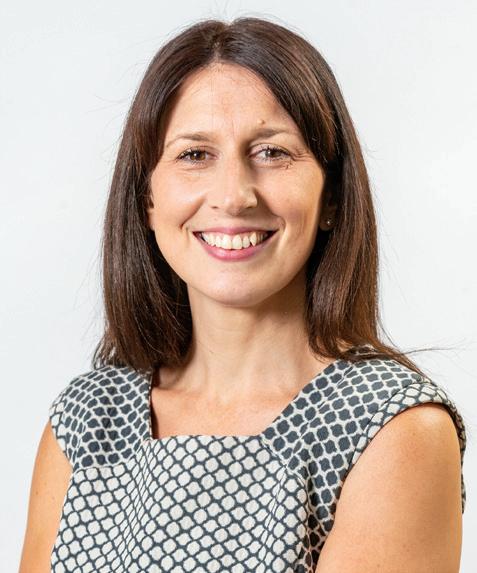
Louise commented: “I’m greatly looking forward to getting to know the people at Condair and continuing to support and develop a working environment that is collaborative, challenging, motivating and rewarding for all of our employees. With more than half of our employees having been at the company for at least 10 years, it’s evident that Condair greatly values the importance of investing in and developing people. This talent and experience really shines through in the expertise and services the company provides.”
The Condair Group is the world’s leading specialist in humidity control and evaporative cooling, with energy e icient, hygienic and innovative technologies for commercial, industrial and heritage applications. Condair is represented in the UK by Condair Ltd, which o ers system design, manufacture, supply, installation, commissioning, maintenance and spares.



A new distribution agreement between GreenTeck Global and Alliance Scotland has already inspired one Scottish hotel group to swap its cleaning products for a chemical-free alternative.

Thanks to the partnership, Crie Hydro Family of Hotels recently committed to introducing GreenTeck Global’s COSHH-free AquaTeck SC100 cleaning system across its eight-hotel portfolio, which are all set within iconic Scottish locations.
The AquaTeck SC100 allows businesses to convert ordinary water into hypochlorous acid (HOCL); a naturally-occurring steriliser that is known to be the most powerful natural disinfectant available. This allpurpose cleaning solution not only destroys 99.99% of all bacteria, pathogens, viruses and odours, but its non-toxic qualities ensure the non-allergenic solution is as safe for those using it as the environment.

Once fed through a standard water so ener, ordinary food-grade salt is added to produce two litres of the chemical-free solution every minute – a solution which is more e ective than bleach yet can be safely tipped away with zero harmful e ects.
The Family’s move follows the success of a four-
month trial of the AquaTeck SC100 system at its four-star Crie Hydro Hotel, in the heart of Perthshire, in early 2022. By using the sustainable sanitising solution across the property’s front-of-house areas, the hotel was able to reduce the amount it usually spent on chemical cleaning products by around £450 each month, saving nearly £2,000 during the trial period alone.
What’s more, by being able to produce GreenTeck Global’s innovative 100% natural cleaner on tap and refill cleaning bottles as needed, the hotel also saved the equivalent of 2,430 single-use plastic bottles.
Not only did the hotel group find that embracing a more cost-e ective and energy-conscious alternative boosted its carbon credentials by lowering plastic waste, but it also eliminates the need for added detergents while continuing to deliver the highest levels of cleanliness for guests.

Hybrid working provides a better work life balance for most people and is a key factor that people look for when looking for a new job. Now is the perfect time to ensure that hybrid working is successful in your workplace with a perfect combination of technology, mobility, and ergonomics so that each workplace and meeting point can be adapted appropriately.
As a modern work expert, Durable develop and produce intelligent products and solutions for the modern workplace. The range is characterised by clever detail, premium materials, high-quality manufacturing as well as multi-award-winning design. Durable’s extensive product range has made it simple for you to transform your workplace to suit your sta requirements.

With a laptop, it’s possible to work and take part in video conferences wherever you are. However, user comfort is o en sadly lacking. The table is too low, balancing the device on your knees on the sofa is annoying, and wobbly stacks of books are far from the ideal solution for achieving the right height. With the Laptop Stand RISE, the fully adjustable desk mount is suitable for laptops and tablets between 9″ and 17″. The height and the tilt angle can be adjusted to suit
your personal needs. The Laptop Stand RISE is stable and non-slip.
Whether you use it as an additional device, an onthe-go appliance, a presentation tool, or a control panel, a tablet is a piece of standard equipment for many people and is used for private streaming as well as work. The Tablet Holder range o ers





an excellent solution to make working and presenting with tablets extremely e icient. The high-quality holders can be individually attached, rotated, or fixed into position and can be adjusted to fit all standardsized tablets.
When working in the o ice or from home, stationary computers, mini PCs or docking stations are o en used. That’s why it’s always good to have one or two monitors available for computer work. But if the monitor is wrongly positioned, it can lead to headaches and back pain as well as neck and eye strain. With its functional design elements, the awardwinning DURABLE Monitor Mount PRO is available in various models to make working with a screen more ergonomic. The elegant, infinitely adjustable mechanical elements allow each user to adjust the height, angle, and distance of the monitor to fit their individual needs.
Forbo Flooring Systems’ Nuway primary barrier matting has been a market leading entrance flooring system for over 40 years. And now, ahead of the Winter season, it has updated the Nuway Grid range with a brand-new scraper bar colour option: Black anodised, which has been developed in line with market trends to create high end, contemporary designs.

Designed to be used in the area immediately inside a building and suitable for use in busy retail, healthcare, o ice or education environments, Nuway Grid is an e ective solution to help keep the interiors of any building dirt and moisture free. O ering a modern aesthetic with leading performance, the new Nuway Grid Black Anodised o ers the same performance characteristics as Nuway Grid, but with a stylish black anodised finish.
The addition of the Black Anodised finish, which is available with 11 di erent coloured textile inserts, will allow specifiers and flooring contractors to create not only a durable primary barrier matting system, but one that is beautiful and contemporary– helping to meet all design briefs.
Forbo provides a complete supply and fit service for its Nuway barrier matting products, saving architects, flooring contractors and end users from the hassle of sourcing a contractor to install the chosen system. Using FESSI contractors handpicked by Forbo, clients will receive the best quality installation service.
Makita has launched a new 18V Brushless Robotic Cleaner designed for commercial and industrial use.
Equipped with superior 2D LiDAR sensor and camera technology, the new DCR300 18V LXT Brushless Robotic Cleaner can map and memorise up to 10,000m2 of space across five di erent rooms and use this information to not only return to its original position, but also track optimal routes for e icient cleaning.
Powered by either single 18V or dual 18V LXT batteries, this innovative solution from Makita provides continuous cleaning power of up to 240-minutes over an impressive 600m2 area (when used with two 18V 6.0Ah batteries in parallel).

The DRC300 can be controlled directly by the unit, RF remote control (included) or with a smartphone via a bespoke app which o ers users even more functionality and benefits. Here, operators can access performance history such as cleaning dates and times and the percentage of cleaning areas covered, which contractors can use as evidence or scheduling.
With a large 3L dust box and HEPA filter to capture very fine particles, and a filter clogging notification to show when the filters require maintenance, the cleaner comes equipped with one main brush and two side brushes, which are detachable without tools, and a large carry handle, for easy transportation.
uvex has launched a new collection of safety eyewear that o ers protection for workers as well as the planet.


The uvex i-range comprises three models which all feature large, flat lenses for an unrestricted field of vision with an x-tended sideshield to provide additional protection from hazards.
The uvex i-lite spectacles have a modern design with ergonomically shaped side arms that provide a secure fit without pressure. They utilise uvex supravision coating technology for permanent anti-fog and scratch-resistance, delivering optimal vision during work. The side arms also feature multi-incline points to allow for a high level of individualisation, ensuring a good fit for all facial shapes and head widths.

The uvex i-guard spectacles feature the same benefits with the addition of a so , flexible face seal made from recycled materials. Adapting to any facial shape without pressure, the seal provides protection against liquids, particles and dirt, marking 3 and 4 in accordance with EN 166.
The uvex i-guard+ safety goggles, meanwhile, include a headband that o ers increased impact protection. Ideally suited for demanding work, uvex i-guard+ goes above and beyond the minimum requirements and provides increased mechanical strength.
In addition to the standard uvex i-range, uvex has unveiled the i-range planet. As part of uvex’s ‘protecting planet’ focus, it features the same three models but created with recycled and bio-based materials and resource-saving manufacturing.
www.uvex-safety.co.uk/en/product-group/uvex-i-range/
Intrepid team members from Birmingham building services provider J S Wright have raised more than £4,200 for their adopted charity a er completing an epic challenge in the Lake District.
Twenty-six sta and three suppliers tested their fitness, commitment and determination by taking part in the Lakes Triple Challenge in aid of Warwickbased Molly Ollys, which cares for children with life-threatening illnesses.
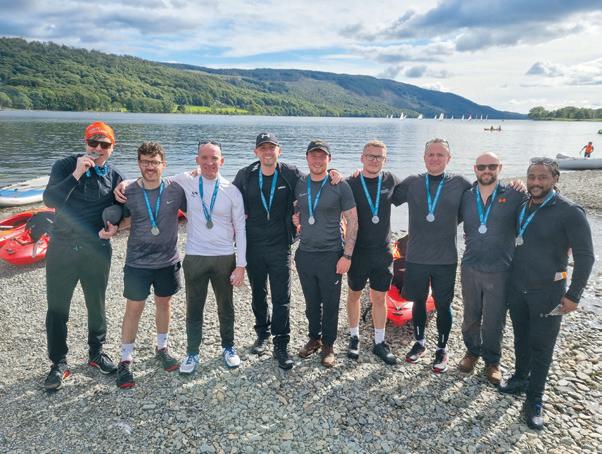
They cycled through the trails of Grizedale forest, trekked to the summit of the 803-metre-high Old Man of Coniston and kayaked across Coniston Water, one of the UK’s largest lakes, covering more than 24 miles over an eight-hour period.
J S Wright Director and Team Leader David Cook said: “This was an incredible achievement a er our sta and suppliers endured a day of testing and gruelling challenges. We were all proud of our e orts for such a great charity.”
David added: “Thanks go to all those who made donations - and it isn’t too late to donate by visiting www.justgiving.com/fundraising/jswrightmollyollyswishes.”
Molly Ollys provides emotional and financial support, where appropriate, to children throughout the UK with terminal and life-threatening illnesses.
Rachel Ollerenshaw, Co-Founder of Molly Ollys, commented: “The J S Wright team are made of tough stu ! From this particular fundraiser, they have raised enough for us to do eight wishes for eight children facing terrifying health challenges – we can’t thank them enough.”
www.justgiving.com/fundraising/jswrightmollyollyswishes www.jswright.co.uk
CHAS Managing Director Ian McKinnon outlines how adoption of the Common Assessment Standard has gathered pace since its rollout began in 2019 with multiple major contractors now specifying the scheme and explains why now is the time for contractors who haven't yet taken the assessment to embrace the scheme.
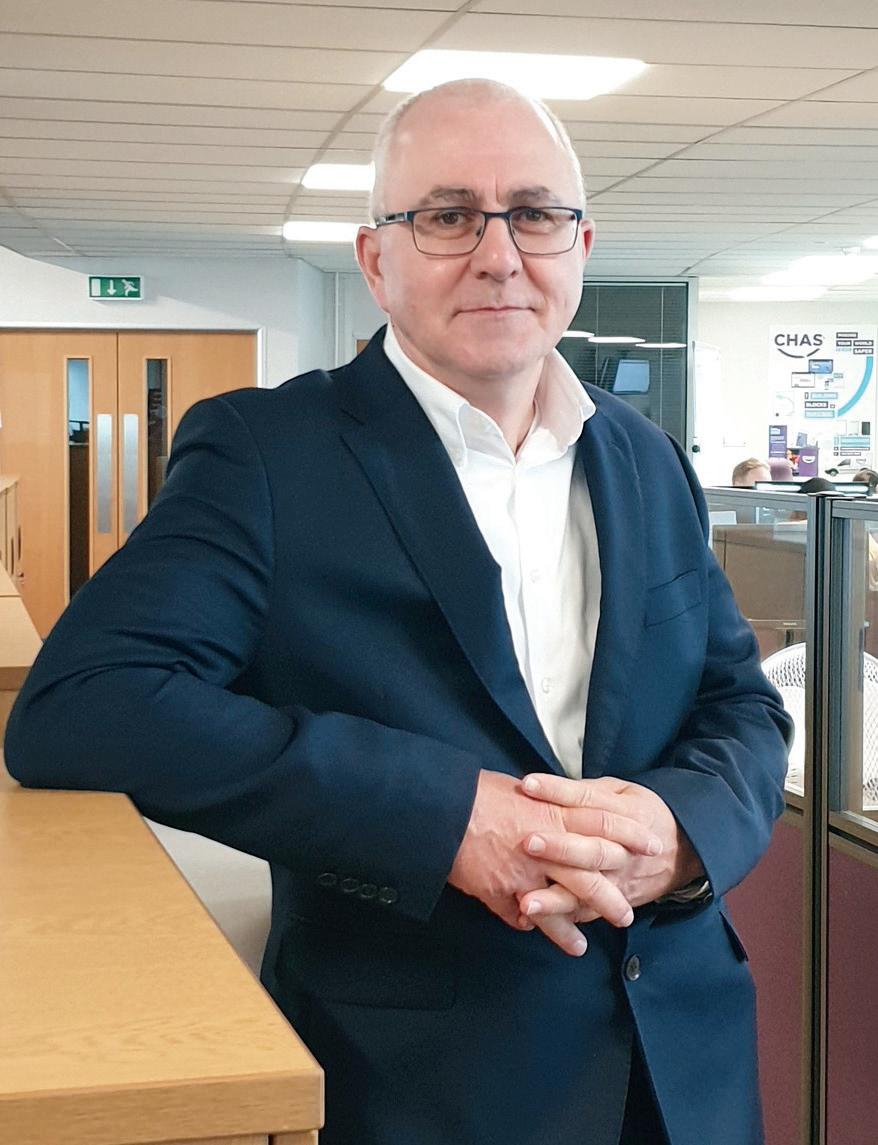
What is the Common Assessment Standard?
Developed by Build UK, Civil Engineering Contractors Association (CECA), and other accreditation bodies and industry experts, the Common Assessment Standard is a leading accreditation programme that's recognised industry-wide. It replaces multiple assessment schemes with one comprehensive industry-agreed questionnaire based on existing prequalification questionnaires, including PAS 91.


As well as streamlining what was a complex, costly and repetitive system, the Common Assessment Standard helps organisations demonstrate regulatory compliance across 13 key areas of risk management including criteria such as
sustainability, diversity, equality and inclusion and modern slavery.
The Common Assessment Standard was launched in 2019, at which time CHAS became the first assessment body to o er the scheme. CHAS has now assessed thousands of contractors to the standard via CHAS Elite, the most well-recognised accreditation of the Common Assessment Standard.
A key milestone in the rollout of the scheme that has accelerated its adoption was the introduction of a data-sharing agreement in 2021. The agreement means the details of everyone who passes the assessment can be accessed via any of the providers, regardless of which assessment body carries out the audit. For CHAS contractors, this means they only need to complete the Common Assessment Standard once a year via CHAS's intuitive, easy-touse, online contractor portal to qualify for a wide range of work rather than having to sign up to multiple schemes - saving time and money.
Meanwhile, clients looking for pre-qualified contractors simply specify the Common Assessment Standard to find contractors accredited to a single, consistent industryagreed standard. Clients can access a database of these contractors via the services of any of the assessment bodies - such as the free CHAS Client Portal.

The Common Assessment Standard has rapidly become the elite standard for prequalification, with multiple major contractors now specifying the scheme.
Within the public sector, the Crown Commercial Service (CCS) has asked for contractors appointed to its seven-year framework to assess their supply chains using the Common Assessment Standard for some time. Meanwhile, expected updates to
Procurement Policy Note (PPN) 08/16 are likely to encourage or even mandate that Contracting Authorities in the public sector assess their supply chains using the Common Assessment Standard.
An up-to-date list of who specifies the Common Assessment Standard can be found here https:// builduk.org/priorities/increasing-productivity/prequalification/.
It's no surprise that so many contractors have chosen to take the Common Assessment Standard with CHAS. As well as being the founder of thirdparty accreditation and a trusted authority on supply chain risk management, CHAS is renowned for providing a friendly and e icient service and high customer satisfaction levels.
CHAS contractors receive additional benefits such as access to discounted e-learning resources and free legal advice, 20 per cent discount with Speedy Hire, free-of-charge TradePoint cards and discounted membership to Checkatrade.com. CHAS is also committed to helping contractors who are not yet ready to complete the Common Assessment Standard to work towards higher levels of accreditation.
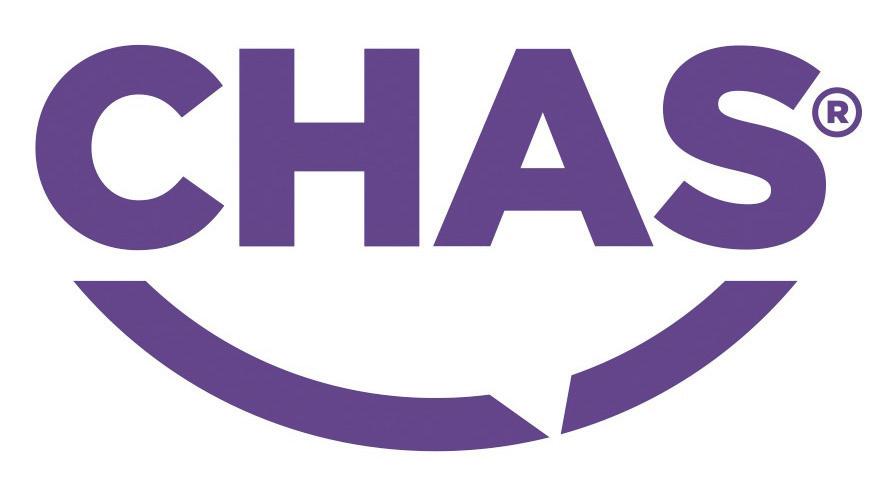
Now is the time to take the Common Assessment Standard for contractors of all sizes as we are rapidly moving towards a situation where you won't be able to win work without it. There are two levels of certification: desktop and site-based. Companies apply to CHAS for the certification level appropriate for their business based on factors including trade, size and the requirements of their clients. For companies that employ fewer than 10 employees and have a turnover below £1.8 million or a balance sheet totalling less than £1.8 million, the assessment standards will be applied proportionately.
How can you find out more?
To find out more about qualifying for, or specifying, the Common Assessment Standard, visit www.chas.co.uk or call 0345 521 9111
2N, the global market leader in internet-enabled intercoms and access control systems, has added new functionality to its devices by upgrading its OS.
The new 2N OS enables bidirectional video through the 2N® IP Style, the company’s flagship intercom. This allows visitors to see the person they are talking to as well as vice versa, which is of particular value for buildings which decide to go without a dedicated reception.
Bidirectional video is also a response to the growing demand for inclusivity in device functionality, as it allows the hard of hearing to communicate using sign language.
The upgrade has security advantages as well: First, ONVIF settings have had a total rework, with 2N intercoms now supporting T as well as S profiles. The S profile already supported basic video streaming; the T profile enables advanced video streaming. This opens up a range of new possibilities, including motion detection and tamper alarms, as well as the support of bi-directional audio.
Second, the 2N OS upgrade improves the quality of images sent to the 2N® Indoor View answering unit, a 7″ touchscreen designed for luxury residential projects. The upgrade also allows users to zoom in on the answering unit so that they can see the caller's face, name tag or ID more clearly. Furthermore, for the first time, the upgrade allows visitors to leave a videomail on the 2N® Indoor View when the resident is not at home.
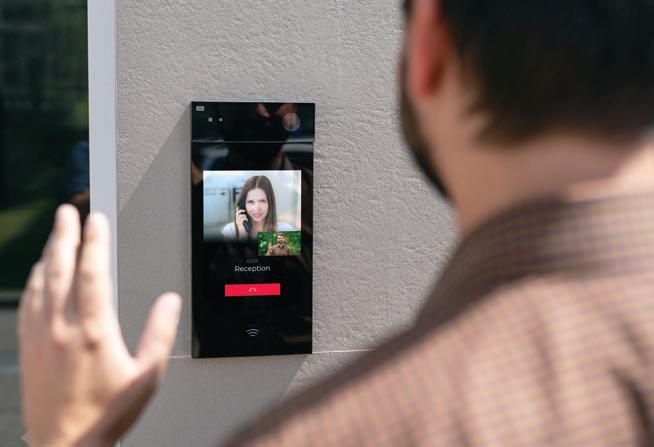
www.2N.com


Jangro, the largest network of independent janitorial distributors in the UK and Ireland, is delighted to announce that it has achieved its second year of being Planet Mark certified.

This renewal means that the company has been successful in reducing its carbon emissions by at least five per cent over the past 12 months. In fact, in the latest reporting period (1 Jan 2021 – 31 Dec 2021), emission sources including electricity, natural gas, water, fleet, business travel, waste, and paper were reduced by 6.9 per cent per employee.
Through this ongoing accreditation, Jangro is furthering its commitment to realising a brighter and more sustainable future. It continues to measure and reduce its footprint, plan long-term ambitions and motivate its team to innovate. Additionally, it remains committed to measuring its social value contributions (the net social and environmental benefits generated by its team).
As part of the Planet Mark certification, Jangro has committed to making a year-on-year reduction of its carbon footprint by five per cent annually. Planet Mark is a sustainability certification that verifies and measures carbon and social data to reduce emissions and achieve the United Nations Sustainable Development Goals (UN SDGs).
An extended range of sustainable and functional High Visibility working clothes for light to night, dawn to dusk.
As workplace visibility decreases and the potential for accidents increase, Snickers Workwear High Visibility garments work hard to protect your wellbeing and safety on site.
The extensive range of Jackets, Trousers, Shorts, Toolvests, Shirts and Fleeces all work together to satisfy the requirements of Class 1, 2 and 3 protection levels.
These outstanding products combine Snickers' unrivalled hallmarks for Protective Wear with the requirements of the EN 20471 standard for high visibility warning clothes.
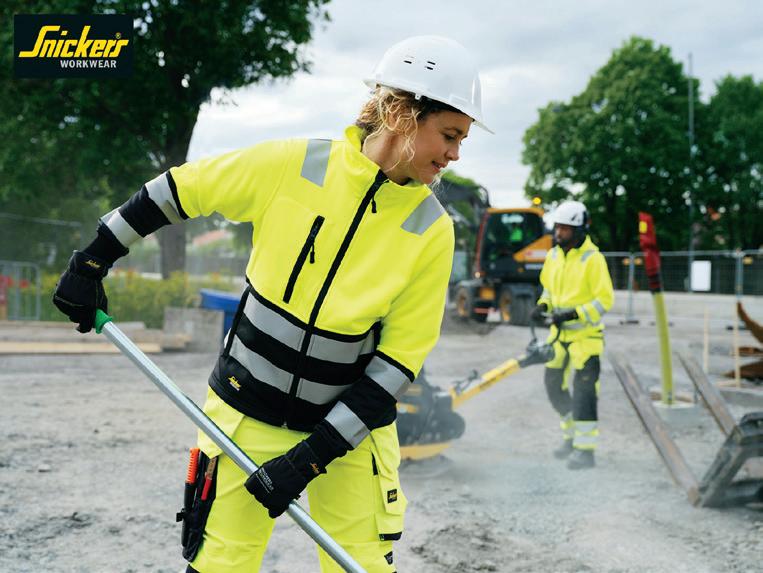
With advanced designs and sustainable SORONA fabrics, all these working clothes have durable, colour-fast protection, retaining shape and comfort throughout the life of the garments. Added to which, all Snickers Hi Vis garments can be custom profiled to ensure 'stand out' coverage for your corporate brand.
www.snickersworkwear.co.uk sales@hultaforsgroup.co.uk
01484 854788

Using our new calculator we are now regularly calculating savings achievable for potential clients.
These savings are based on data you provide us. We used to expect a payback period of six months. Increasingly we are finding that the cost of investing in Waterblade is repaid in just one month. The main factor is of course the rise in energy costs. This is also because our prices have remained the same for three years despite materials price increases. We can do this because our manufacture costs have dropped as our sales volumes have risen.
month. The main factor is of course the rise in energy costs. This is also because
If you want to save water and energy on your washroom taps, we are happy to calculate your saving and send you a sample to try out.
Waterblade is WRAS approved and UK manufactured in premises with ISO 9001 and 14001. It o ers the best handwashing performance there is at low flow.

www.jangro.net
www.planetmark.com/member/jangro/ www.planetmark.com


www.thewaterblade.com nigel@thewaterblade.com

Meliha Duymaz has joined Skanska UK as Chief Financial O icer and Executive Vice President.
Duymaz is an established finance leader with a breadth of experience across services, operations and major construction projects. She joins Skanska UK from Network Rail, where she was Finance Director for the eastern region running from London to Scotland, its largest regional business with 10,000 employees. In this role she has overseen a significant portion of Network Rail’s investment budget in multi-billionpound programmes and projects.
Prior to this, Duymaz served as Managing Director for the Anglia Route, leading multifunctional teams responsible for infrastructure management and service delivery for some of the most intensely operated rail routes into London. She has also worked for a diverse range of other organisations including Serco and Huntsworth.

CIBSE Head of Certification, Andrew Geens, retired at the beginning of September a er 11 years in the role, with Sebastian Gray (pictured), a CIBSE registered Low Carbon Consultant, Low Carbon Energy Assessor and ESOS Lead Assessor and EnMS Specialist, taking on the role.
Geens has said he is confident that the incoming head will continue to promote the wider use of energy certificates in Government initiatives to improve the energy performance of buildings, and will drive CIBSE Certification forward to be a leader in the IMS industry both in the UK and abroad.









Following a period of significant growth certified social enterprise and experts in specialist security services, Corps Security, has appointed a new National Account Director and a new Operations Director to ensure e icient service delivery across Corps’ new major contract wins.

Mark Taylor has been appointed National Account Director at Corps, supporting major accounts including the portfolio for global commercial real estate services and investment firm CBRE. Taylor brings over 20 years of extensive experience working at a senior level within international security companies and has been responsible for national accounts across corporate and retail environments.
This appointment coincides with an internal promotion for Ken Fissenden from National Account Manager to Operations Director. Fissenden will facilitate one of the largest client account wins in Corps’ history. His role will include reviewing how Corps can introduce their blended approach of people and tech to drive e iciencies in the client’s security provision. Corps carefully manages the number of o icers required on larger contracts, in turn allowing money to be reinvested to support increased wages and encourage retention across the business.



workplace culture can be a major di erentiator when it comes to retaining employees and keeping them happy, productive and engaged. And, at a time when recruitment is a major challenge across the vast majority of sectors, it’s vital to get it right.

Great company culture is no longer a ‘nice to have’–it’s a prerequisite for job seekers in what is essentially a job seeker’s market. People like to know what they can expect from an employer. They want to know a company’s values, how their contribution matters and what is the shared purpose of the team. It is a business’ culture and values that help to spell this out and importantly, make employees’ everyday lives more positive and rewarding.
This is especially true since the pandemic when mission statements on o ice walls suddenly couldn’t be seen and stood for nothing. Instead, employers were forced to rethink their culture, re-articulate their values, scratch beneath the surface and find more dynamic ways to create positive employee experiences, both in and out of the o ice.
Of course, it’s not just about creating a positive culture, an organisation needs to be able to articulate it clearly too. What are the aligned values, beliefs, behaviours and experiences that make up
a company’s DNA? Communicating these values regularly and keeping them ever-present (through words and actions) makes it easier for employees to really feel and embrace them. It also makes it more likely that potential new recruits will see those values in your people, your brand and your workplace.
A common challenge is communicating culture authentically. A er all, every employer is going to say they’re a brilliant one. Nowadays, people can see through well edited corporate videos and workplace perks hold little value if a business doesn’t walk the walk.
‘management delivers on its promises’.
The survey also featured two open-ended questions – ‘is there anything unique or unusual that makes this a great place to work?’ and ‘if you could change one thing to make it a better place to work, what would it be?’
Responses to these questions included:
“Right now, I can’t think of anything which would improve Moneypenny – as I have had such a great experience the past two years and I am sure that it will continue for many more years.” “The company is the perfect balance of professionalism and compassion.” “I enjoy my job, get paid well, love the people I work with and can have time o when needed. I don't think there is anything I would change.”
The Culture Brief and Culture Audit cover a company’s programmes and practices and feature a range of questionnaires to be filled in by HR or people directors. The Brief section focuses on facts and figures, whereas the Audit takes a deeper dive with more in-depth questions around what an organisation is doing to create a great workplace for all sta .
Salary: £50,000
Location: Maidwell Hall, Northamptonshire https://bit.ly/3M0B1Jo
Salary: £20,255
£23,008
Location: South East Wales (Cardiff/Monmouth) https://bit.ly/3BXVqua

Salary: £42,597 - £48,048
Location: HQ, Bridgend
https://bit.ly/3UY1Odx
This is where external certification can o er real value – as a neutral, unbiased seal of approval that an organisation has created a culture its employees love.
In August, Moneypenny was o icially accredited as a Great Place to Work-Certified organisation. This is a significant achievement based on anonymous surveys of employees’ experience which scores the business across di erent aspects of workplace culture, such as inclusivity, employee wellbeing and management. Great Place to Work leverages 30 years of research to quantify the current state of a workplace culture and demonstrate how it compares to the best in the world.
The process includes two key elements: The Trust Index Survey and The Culture Brief and Culture Audit. The Survey is based on the Trust Index and considers elements such as justice, integrity, innovation, collaboration and pride.
Over a 12-week period, Moneypenny issued the survey to all employees across the UK and US, who were asked to respond to seven demographic questions and 60 core statements, such as
Only those businesses that achieve a Trust Index score of 65 per cent or over receive the Great Place to Work certification and become eligible for the Best Workplace Lists, including Best Workplaces in Tech, Best Workplaces for Women and Best Workplaces for Wellbeing.
For Moneypenny, the benefits of becoming certified are far-reaching and extend beyond the recruitment and retention advantage. It demonstrates a commitment to fair pay, prioritisation of an ESG agenda and a company-wide – even cross-continent –shared sense of doing the right thing.
There’s a commercial benefit too, as prospects and clients recognise that we operate at far higher standards than typical outsourced providers. Businesses, their investors and other stakeholders are demanding that companies conduct fair and sustainable business – and they want to make sure that their suppliers are doing the same.
The award adds to what has been an excellent year for Moneypenny so far, following the recent acquisition of Alphapage in Colorado, US and the company’s continued strong growth. We now have over 1,200 sta based in the UK and US and I believe our o ering of amazing people superpowered by cutting-edge technology is a winning combination.
The key to attracting and retaining talent? Being a ‘Great Place to Work’ says Jess Pritchard, Head of the Corporate Sector at Moneypenny on winning GPTW certification
David was appointed as Managing Director of Chubb Fire and Security UK&I in July 2022, almost 30 years a er joining the company. Recently, when talking about his journey, David explained that he knew an apprenticeship would be the best route for him a er school.
Growing up, David’s whole family, except for his brother, worked for British Aerospace, and David was encouraged to start an apprenticeship with them. But David was presented with an opportunity to join Chubb.
In 1993, apprenticeships were very di erent to what they are today. David spent four weeks a year at college in Burton-on-Trent and four weeks a year out in the field. David revealed that this style of learning suited him and ticked a lot of boxes. He said that it progressed his education while giving him hands-on experience. The on-the-job training also provided a broad mix of engineering roles within Chubb.
Currently, the global employment market is in a period of ‘Great Resignation’. The past two and half years have made many people take stock of what they value most in a job and how it fits around their personal lives.
A report from McKinley & Company reveals that employees are switching careers at record rates. Uncaring and uninspiring leaders are a big part of why people leave their jobs, as well as a lack of career development. The survey also reveals that two-thirds of employees who le their jobs in the last two years found new opportunities in completely di erent industries.
But with this great resignation comes great opportunity, and Chubb’s new accelerated development programme is perfect for those looking to start a new career in the fire and security industry.
Our first cohort of 12 started the 18-week intensive programme at the beginning of September and are now acquiring all the necessary skills and knowledge they need to become a competent engineer.
The course is fully funded by Chubb, and together with Zitko Talent, a highly experienced training provider, we have created a ‘Chubb university’ experience. Our purpose-built classroom in Blackburn is ideal for theory and practical sessions. This blended approach covers a rich mix of topics, including industry regulations, the importance of manual handling, health and safety, how to carry out and report on risk assessments, and how to safely isolate electrical supplies.
There are also modules in fire detection, emergency lighting, and the installation and maintenance of systems. We’ve been very thorough with the content of the course because we want to ensure our new engineers can manage the whole process, end-to-end when they are out in the field.

The structure follows our internal competency matrix and features ongoing assessment. The trainees are tested on theory and practical work in the classroom, assessed in the field by their experienced mentor, and through written exams.
At the end of the 18 weeks, our new engineers will have built a strong portfolio of work and will achieve a Level 3 BTEC qualification.
They will also receive strong pastoral care from their regional team, which will enable them to confidently get out into the field and start protecting our customers.
Even when the course is completed, there remains the opportunity to learn. Our trainees are in charge of where their careers are heading.
We are passionate about nurturing talent and giving everyone the opportunity to become a leader. There are clear pathways for employees to develop and achieve more qualifications, all the way up to Level 6, which is the equivalent of a university degree.
We have a very successful track record of employing, nurturing and developing talent. When people join us, they stay. Our people-first ethos has created a supportive environment and presented exciting opportunities for people to build long-lasting careers.
Many of our senior leaders have worked their way up through the company, starting as trainees and apprentices. One of our most successful examples is our newly appointed Managing Director, David Dunnagan.
From engineering, David’s career progressed to business development and sales. In 2013, David celebrated a promotion to Commercial Director for Fire. The following six years, David’s role was to drive the fire solutions side of our business forward. In 2018, David celebrated his second promotion to Managing Director of Chubb Systems Limited, then four years later, he was appointed Managing Director of Chubb Fire & Security UK&I.
David’s drive and determination have earned him the position of Managing Director of Chubb, while his passion and commitment will ensure that the next wave of trainees, whether through apprenticeships or the new accelerated development programme o er a clear path for progression. David’s ambition is to make Chubb the employer of choice and help anyone who is thinking about a change in career realise their potential with Chubb.
Initially, Chubb plans to recruit 48 new fire and security engineers with roles available right across the whole of the UK and Ireland.
Following the completion of the first training scheme, 12 more trainees will be recruited, focusing on becoming security engineers. If you are considering a career change and would like to take control of your career, you can register your interest at: www.chubbadp.com
Andrew Collinson, Operations Director for Electronic Security at Chubb explains why its new accelerated development programme is an ideal opportunity for people to retrain and seize the career they have always wanted

EMCOR UK has announced that it is a Disability Confident Employer – part of the Government’s Disability Confident scheme to support employers to maximise the conditions and talents of people with disabilities.
Keith Chanter, CEO of EMCOR UK, said: “We are delighted to be recognised as a Disability Confident Employer which supports our commitment to be an inclusive employer and our purpose to create a better world at work. We continually strive for the advancement of equality and opportunity and to raise awareness of the benefits of an inclusive culture.”
New research from the CIPD and Omni warns that using pay to attract talent simply isn’t enough to tackle on-going skills shortages. To tackle the skills shortage, organisations need to highlight other components of good working practices when recruiting, such as o ering flexible working and promoting career development opportunities.

Claire McCartney, Senior Resourcing and Inclusion Adviser for the CIPD, said: “Businesses are facing some of the most challenging times imaginable in the coming year, with a cost-of-living crisis and potential recession. It is now more important than ever to be proactive with workforce planning and to develop compelling o erings to attract and retain a diverse group of employees. Employers won’t be able to a ord continued pay increases, but they have an array of other options available to them to continue attracting and retaining sta .”
Skanska UK is enhancing its maternity, paternity, adoption and dependents benefits with immediate e ect. Maternity and adoption leave has been increased to 26 weeks’ fully paid leave. Paternity leave has been increased to eight weeks’ fully paid leave. Parental bereavement leave has been extended for colleagues who are a ected by miscarriage, providing up to two weeks’ paid leave and dependents leave has been increased to up to one week’s paid leave.
“I’m delighted that we’re able to announce these significant enhancements to the support Skanska UK provides for parents and carers,” says Executive Vice President, Harvey Francis.
“We’re providing greater support to all families (including adoptive and LGBTQ+ parents) at the time when they need it most, whatever their circumstances and furthering our commitment to making Skanska a great place to work.”
Corps Security has announced that it will remain committed to paying its sta and encouraging customers to pay the Living Wage following the news that the real Living Wage will increase by a record 10.9 per cent to £10.90 (£11.95 in London).
Corps is a Recognised Service Provider with the Living Wage Foundation – this means all directly employed colleagues are paid the Living Wage, and the company actively
encourages and promotes that contract sta , across multiple locations across the UK, are paid the same.

Just over 87 per cent of the three thousand plus Corps colleagues are now in receipt of the Living Wage – with the company saying it is driven to work with customers to get this to 100 per cent as soon as possible.
Mike Bullock, CEO of Corps Security and Co-Chair at the Living Wage Foundation, commented: “At Corps we believe that paying the real
Living Wage is the right thing to do for our colleagues. Of course, we are aware of the impact this will have on businesses; we will be feeling the e ects of this too. But many of our site-based colleagues see increasing costs in their own lives, so it is about balance. How do we continue to support colleagues with the real living wage increase whilst not putting too much pressure on the business’s finances? That is the challenge we all face now.”
Research has exposed a widespread knowledge gap among UK businesses ahead of October’s landmark overhaul to Right to Work (RTW) laws. The research, carried out by Xydus, one of a handful of government certified identity service providers (IDSP) who can carry out the UK’s new digital RTW checks, showed awareness of the new legislation was high, with 96 per cent of businesses aware of the changes.

However, 48 per cent of employers surveyed were still unprepared for the deadline, putting them at risk of significant non-compliance findings that could negatively impact their right to hire foreign workers and even the potential for directors to face jail time.
The survey exposes a vast array of legal misinformation and misconceptions across the business landscape, with 72 per cent who believed driving licences were compliant for RTW checks, despite the documents never being accepted as evidence of RTW and 78 per cent oblivious to the fact they could face jail time if non-compliant.
Russell King, CEO of Xydus, commented: “The list of potential consequences for getting digital RTW checks wrong is worrying many businesses. This research reinforces what we’ve seen and heard for quite some time, that many businesses still have a wide knowledge gap on the details and implications of these changes in RTW legislation. There are easy-to-adopt options for UK employers who now need to introduce digital identity checks.”

